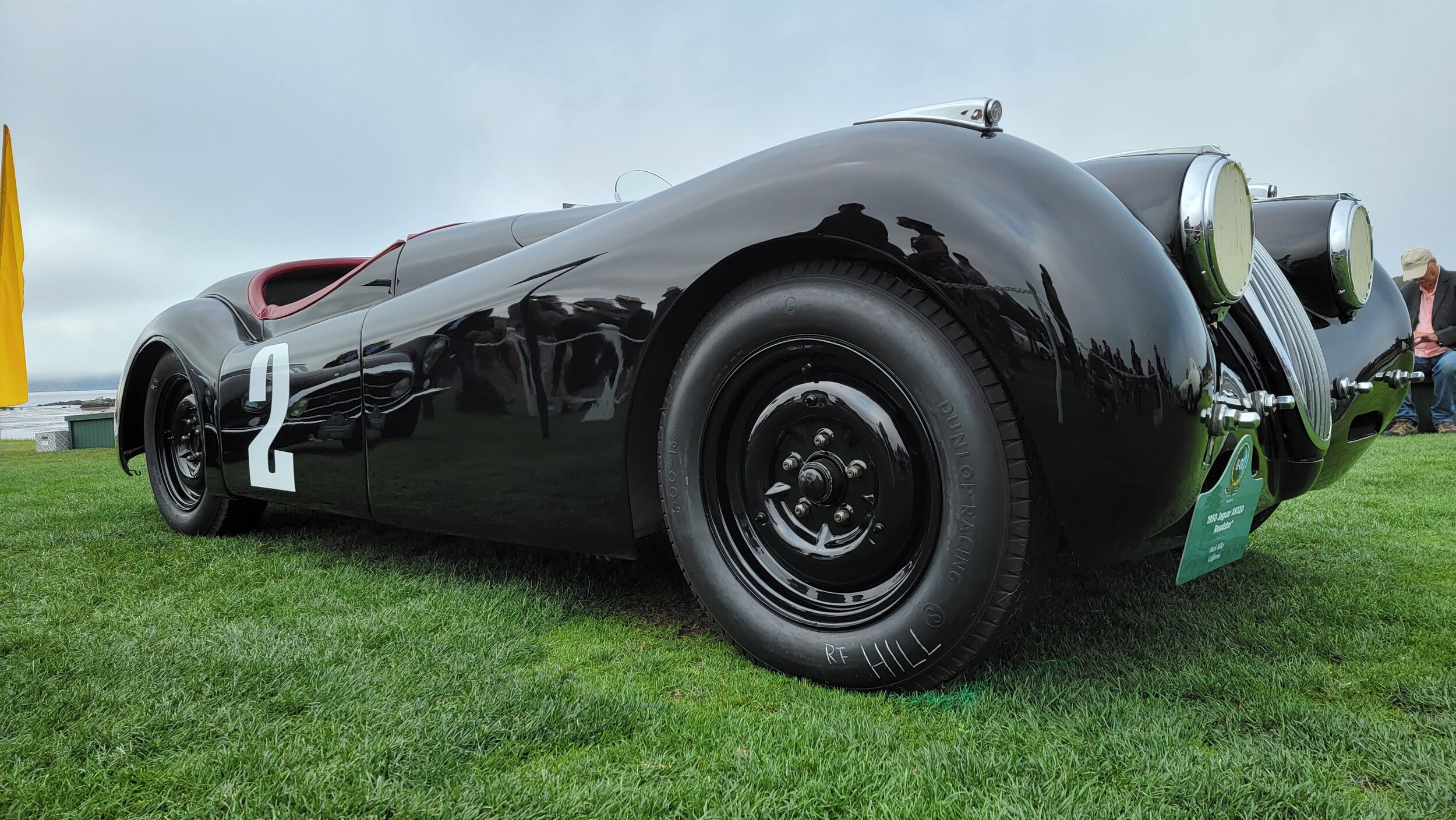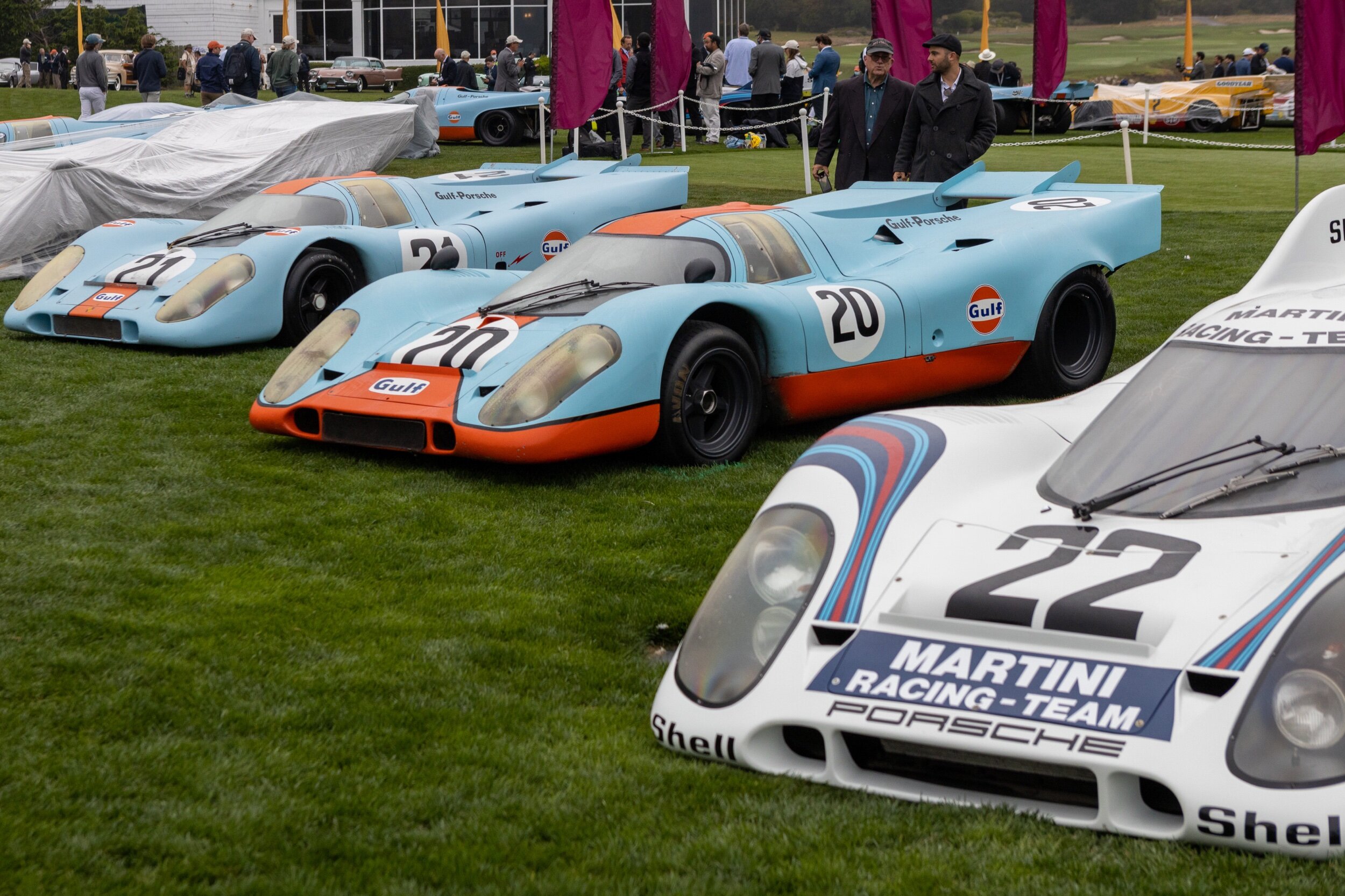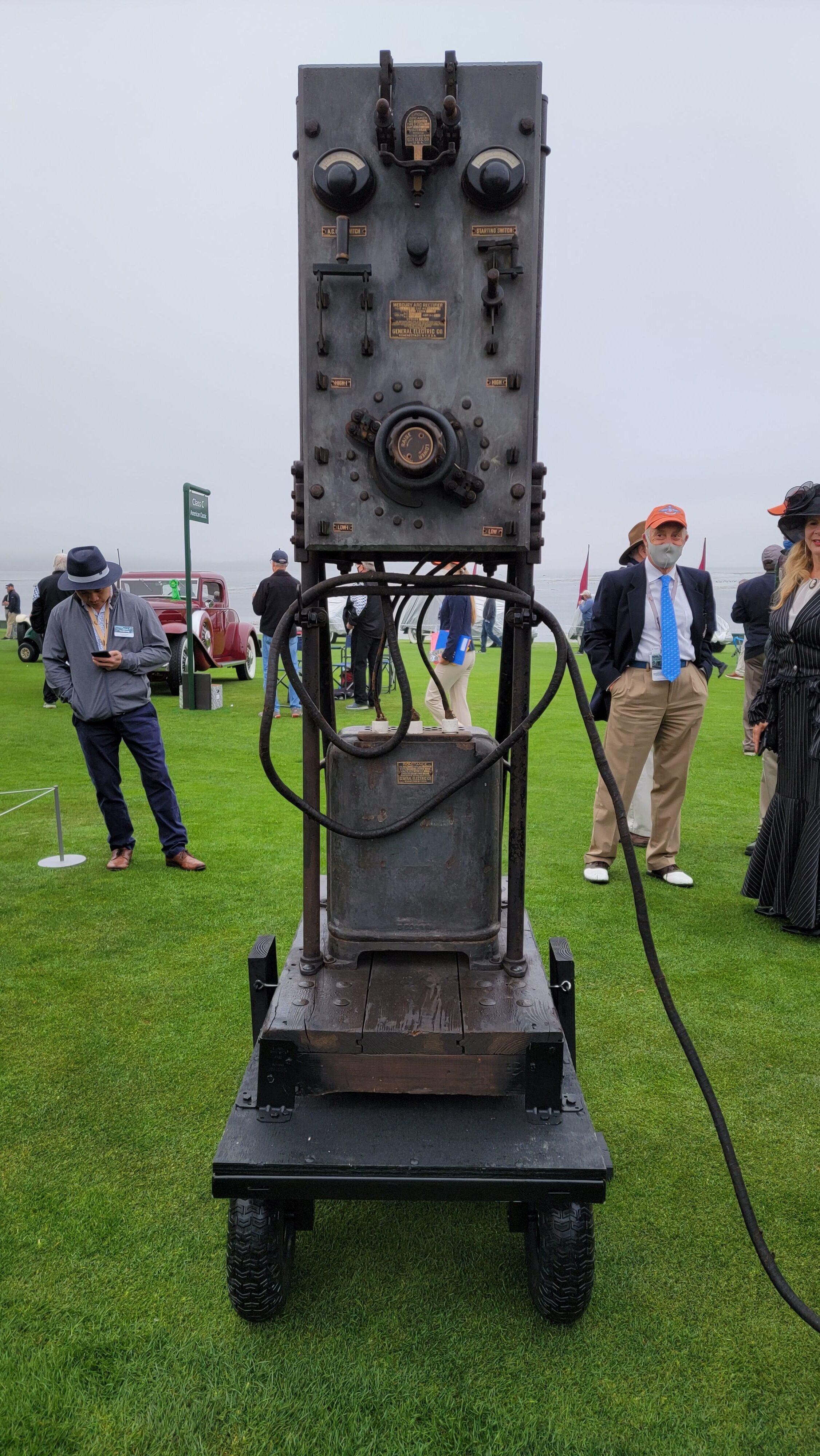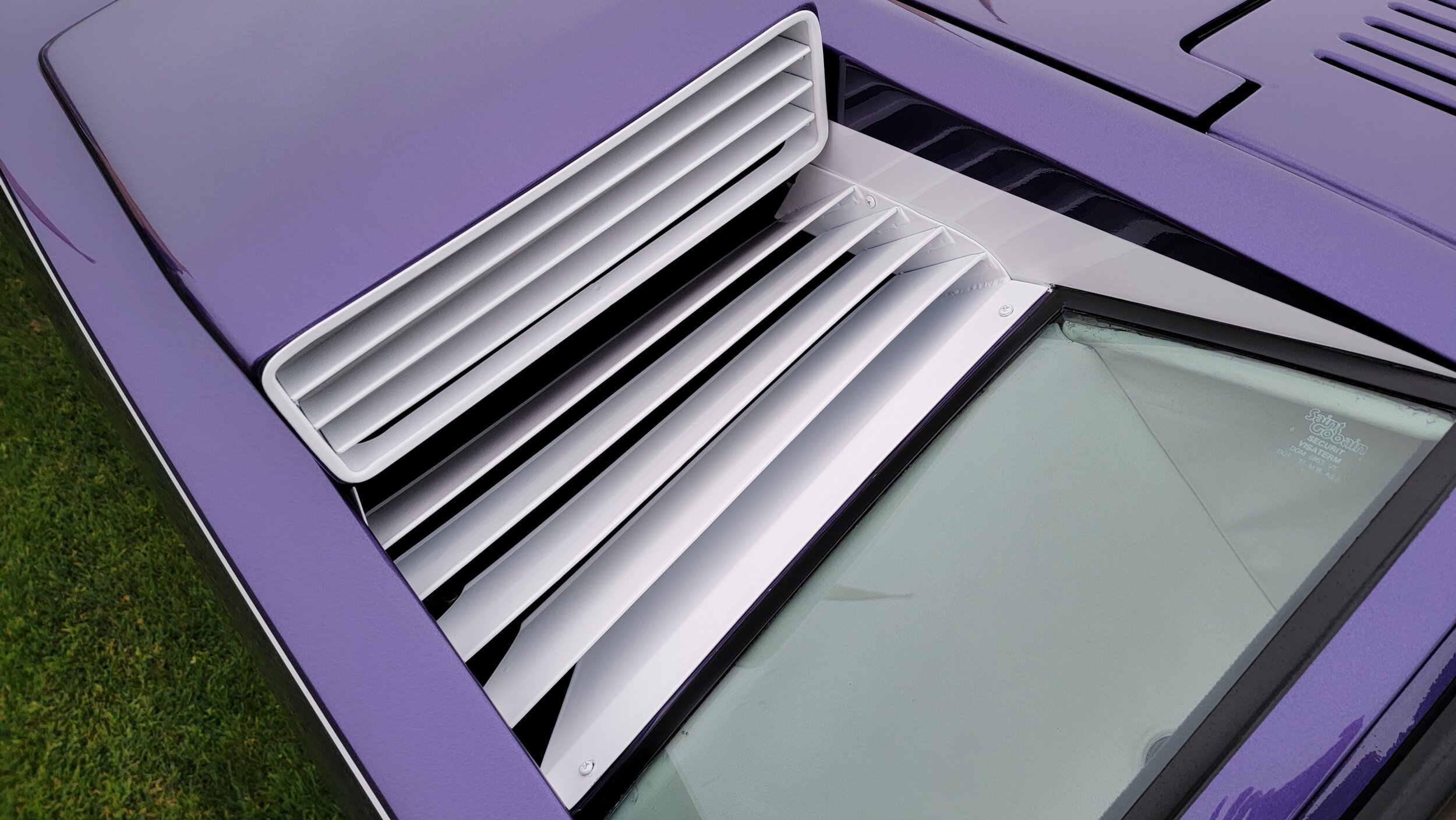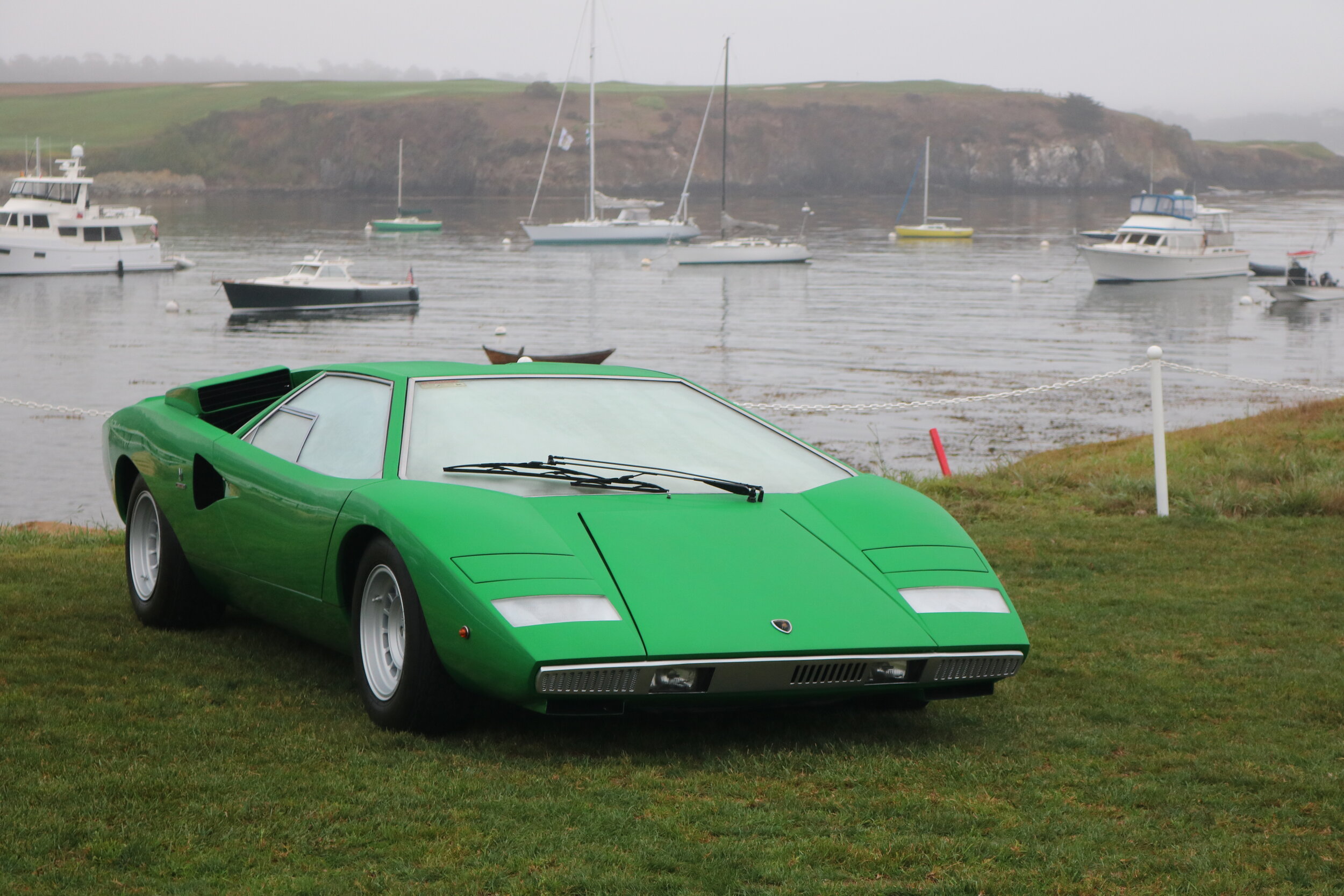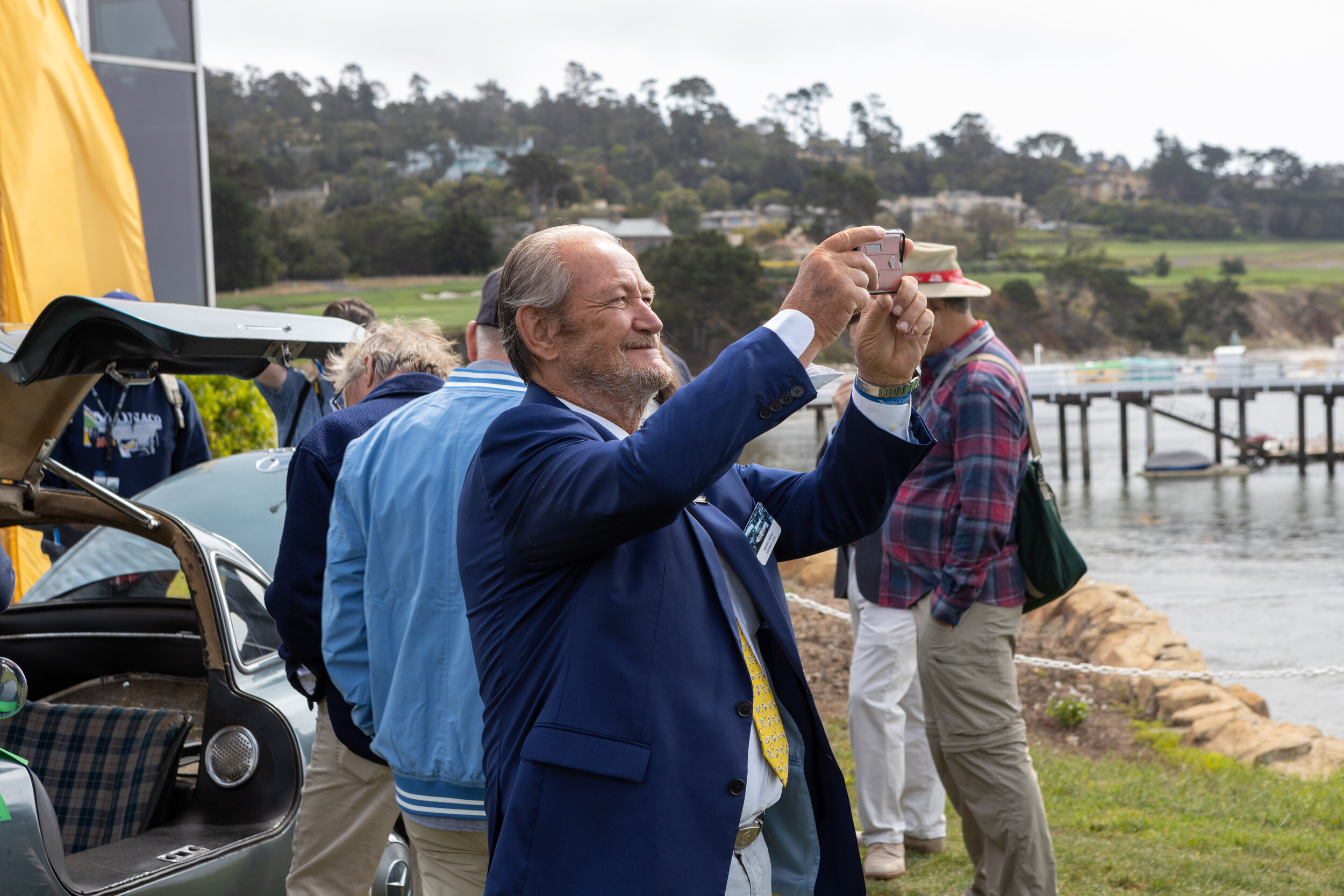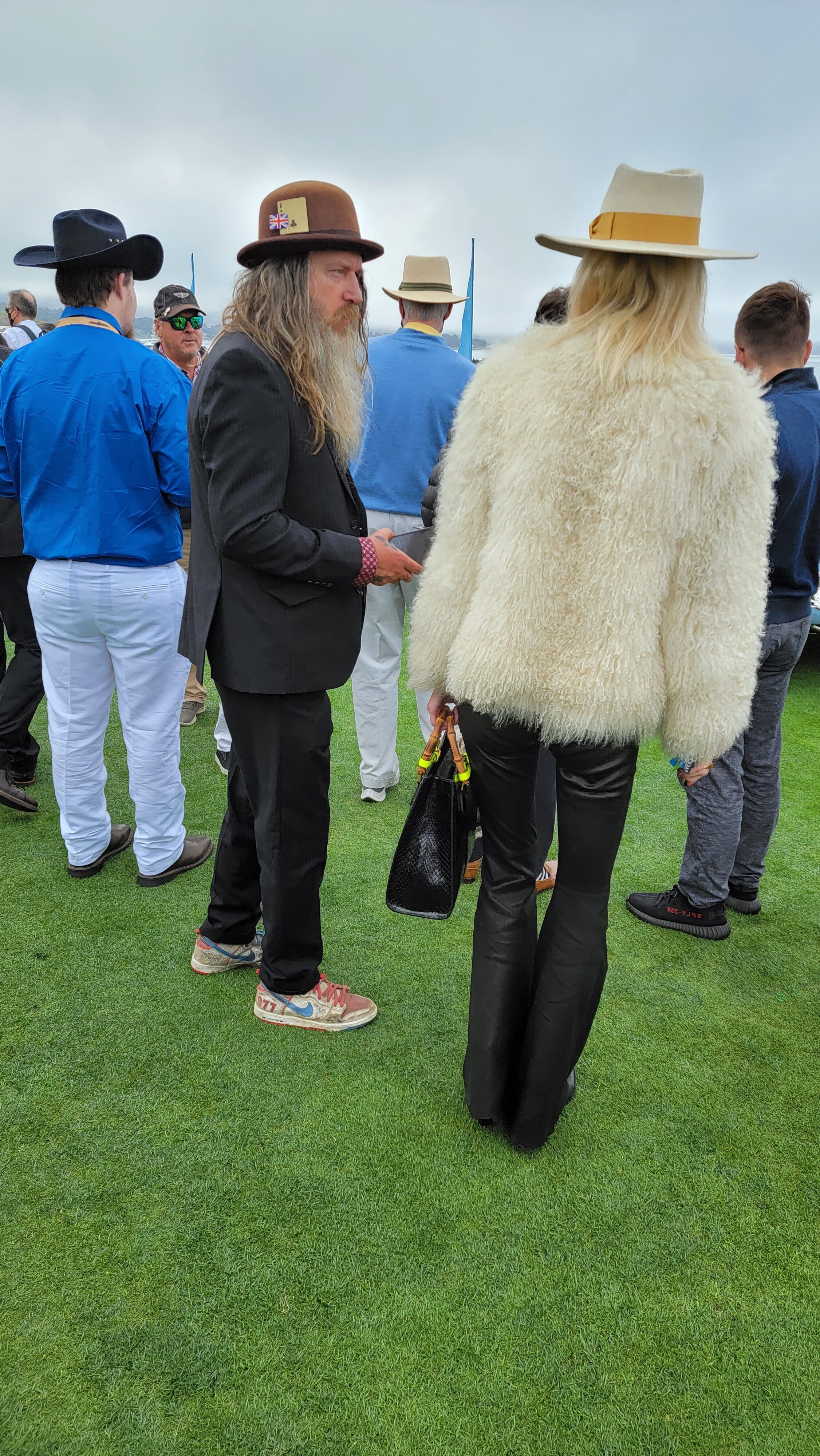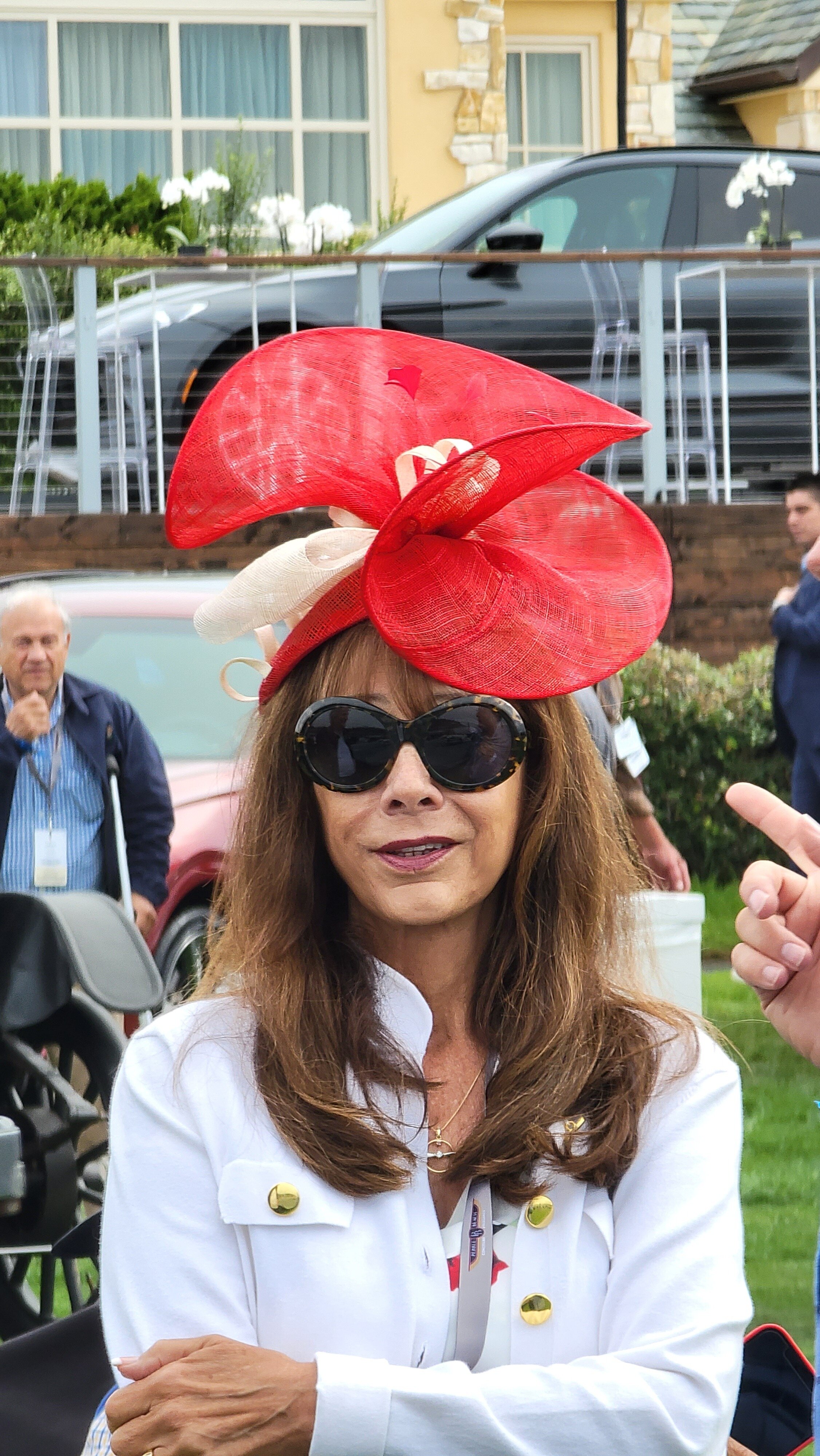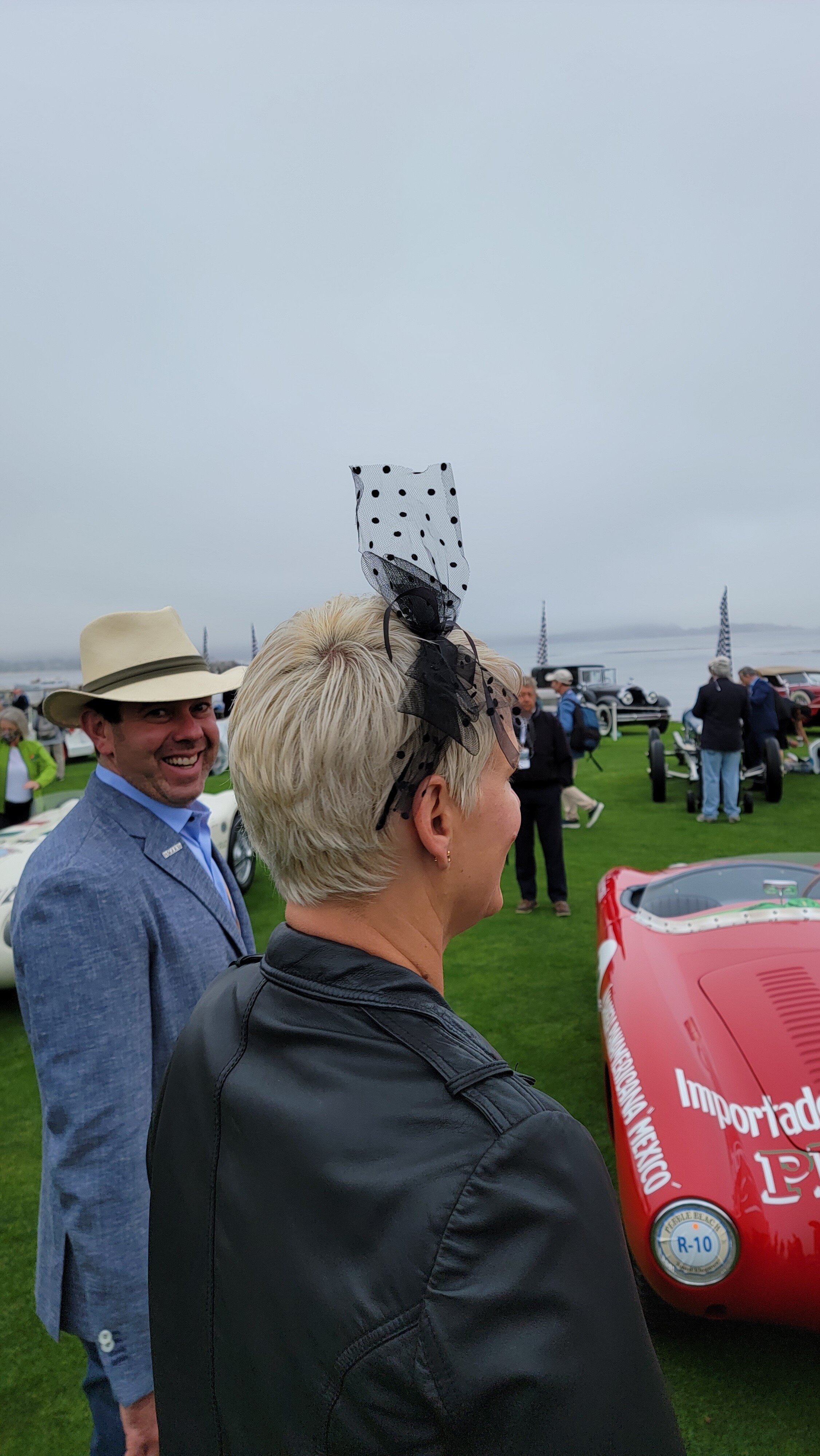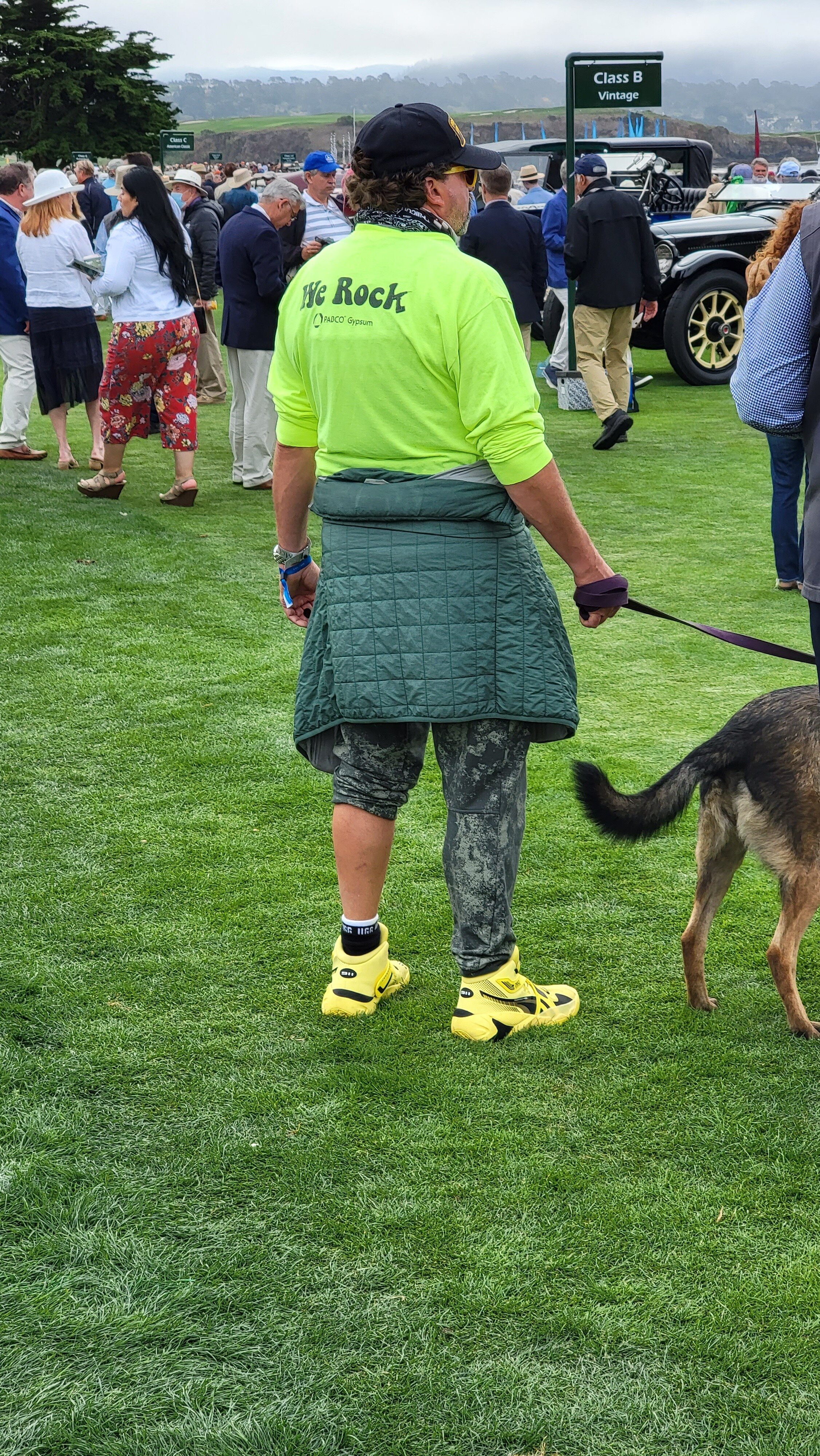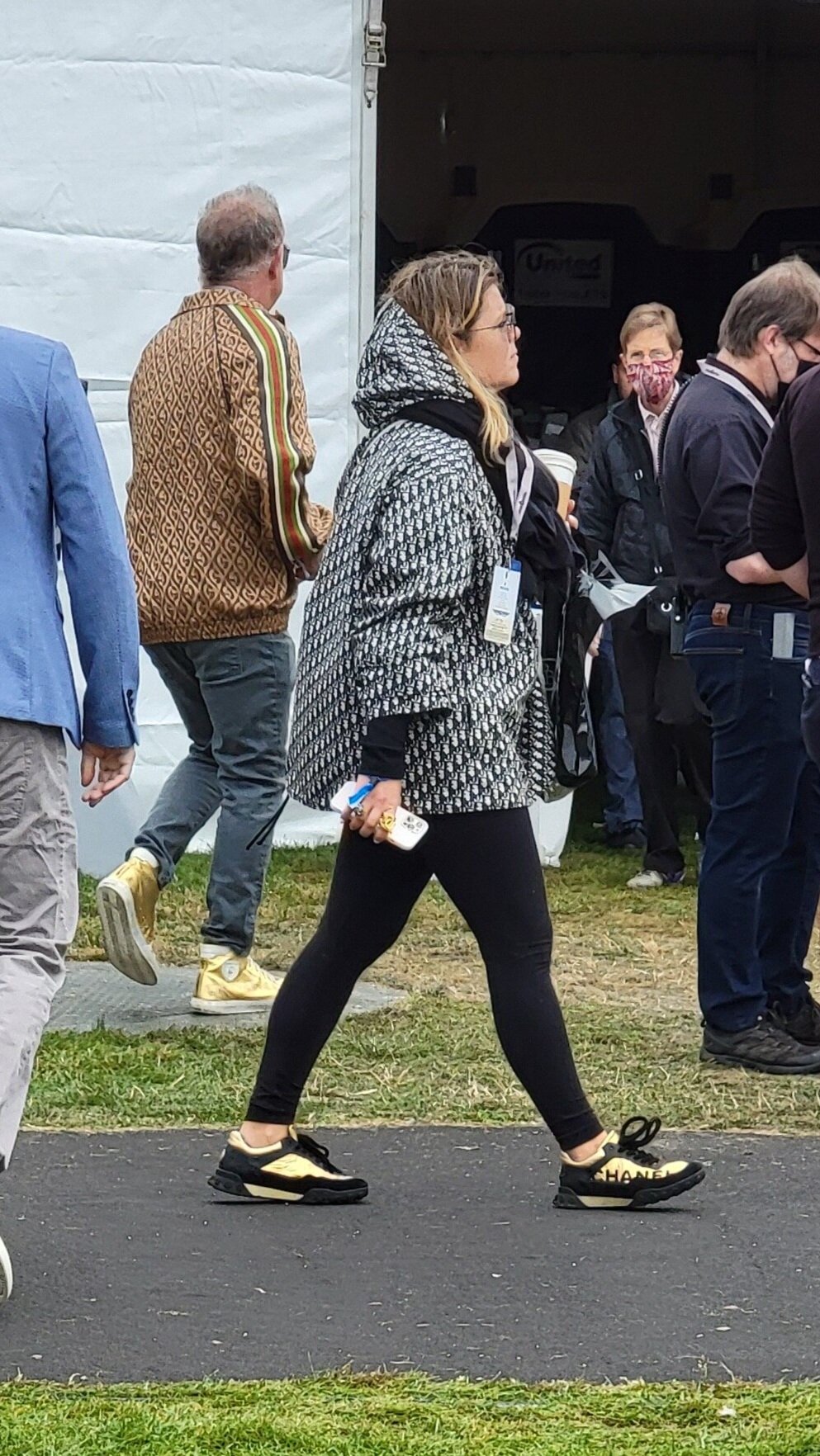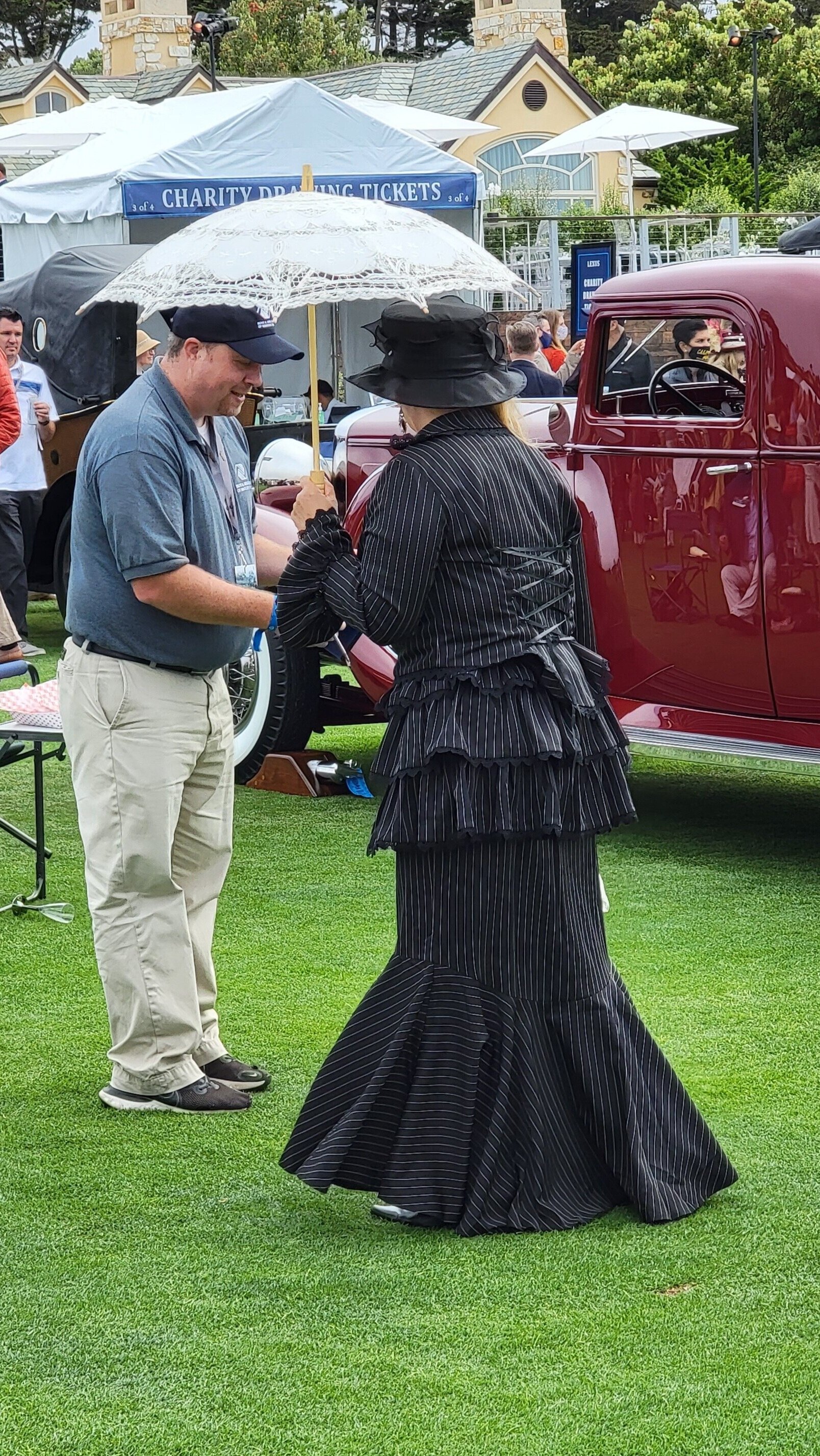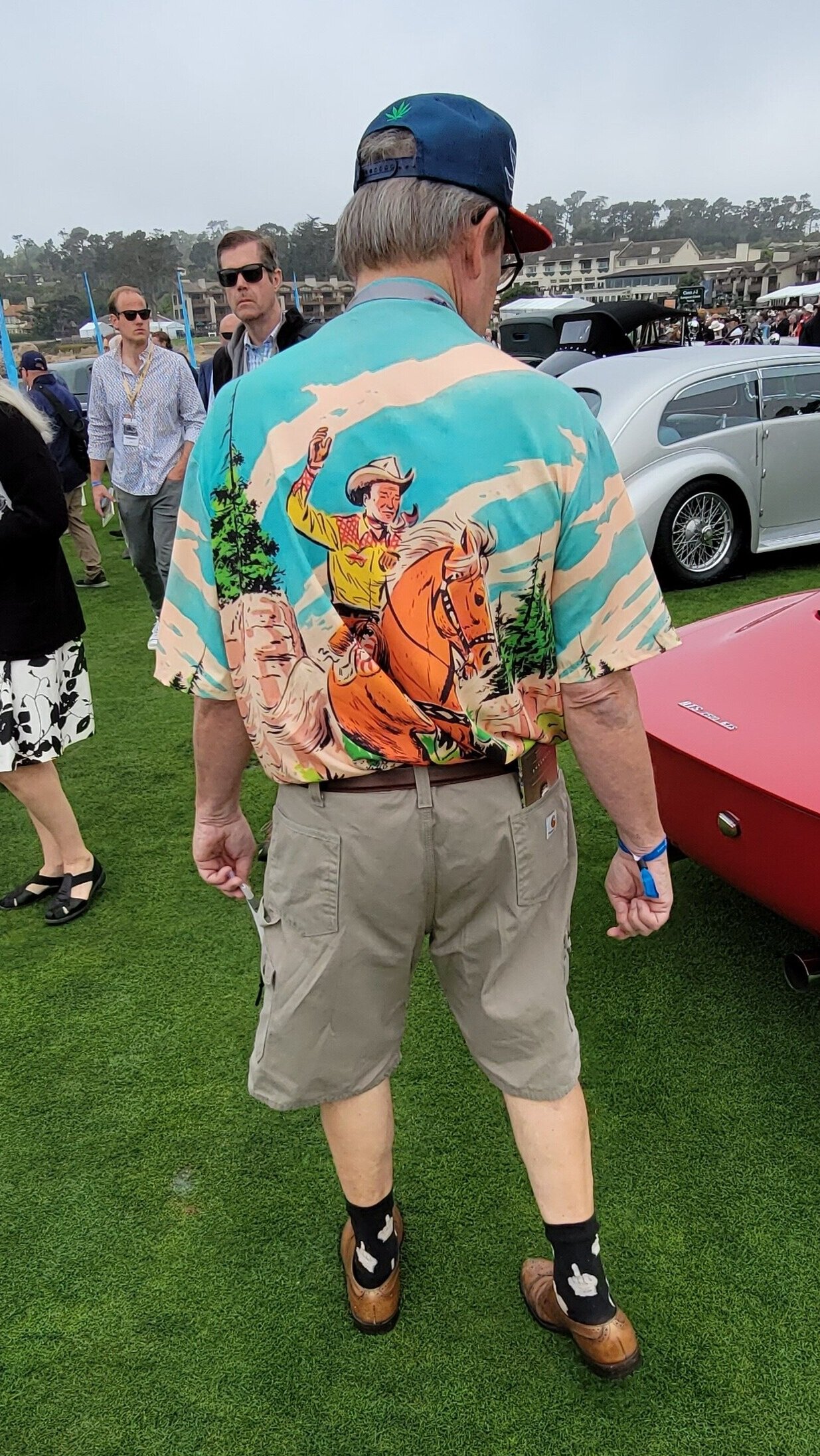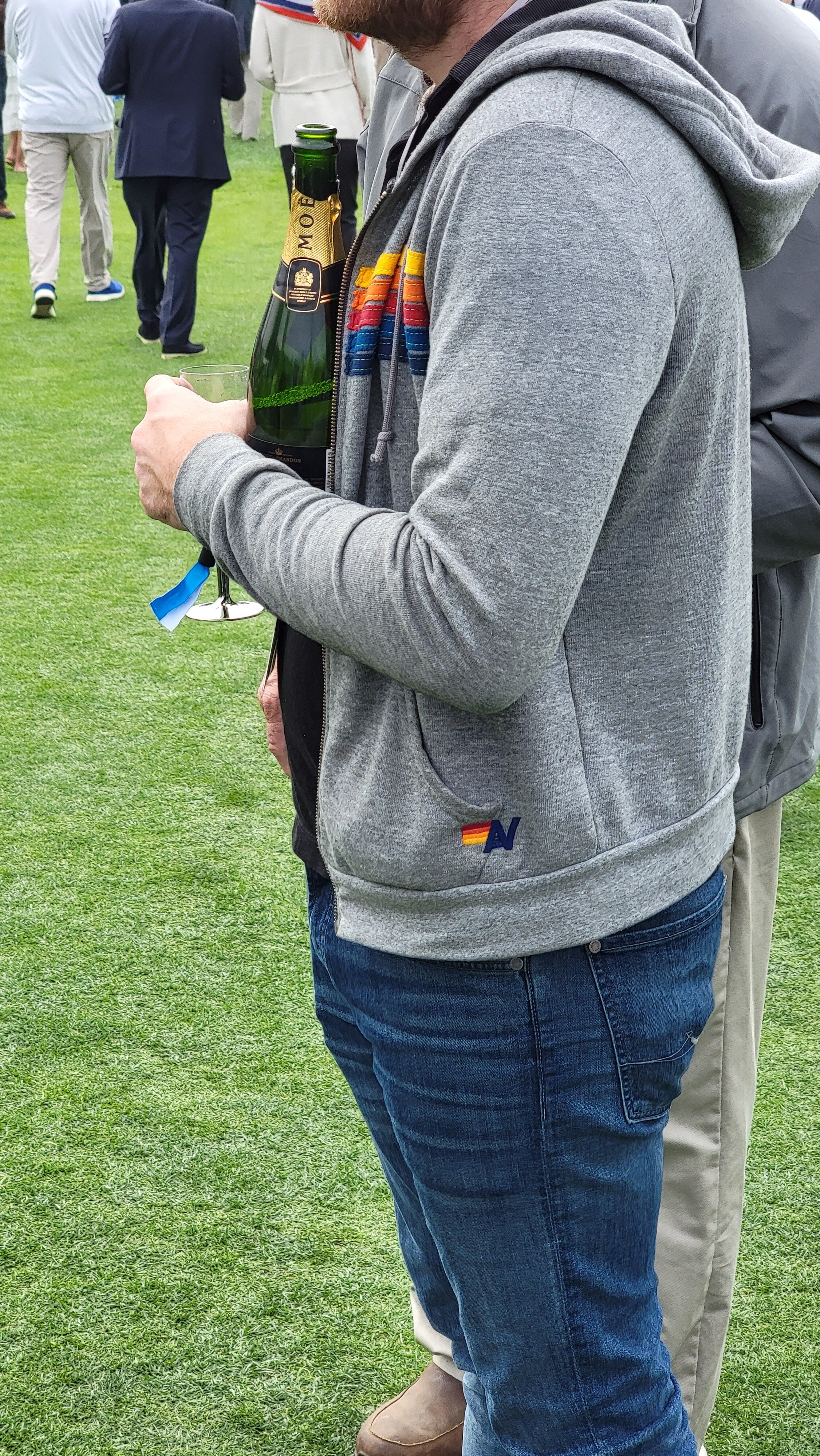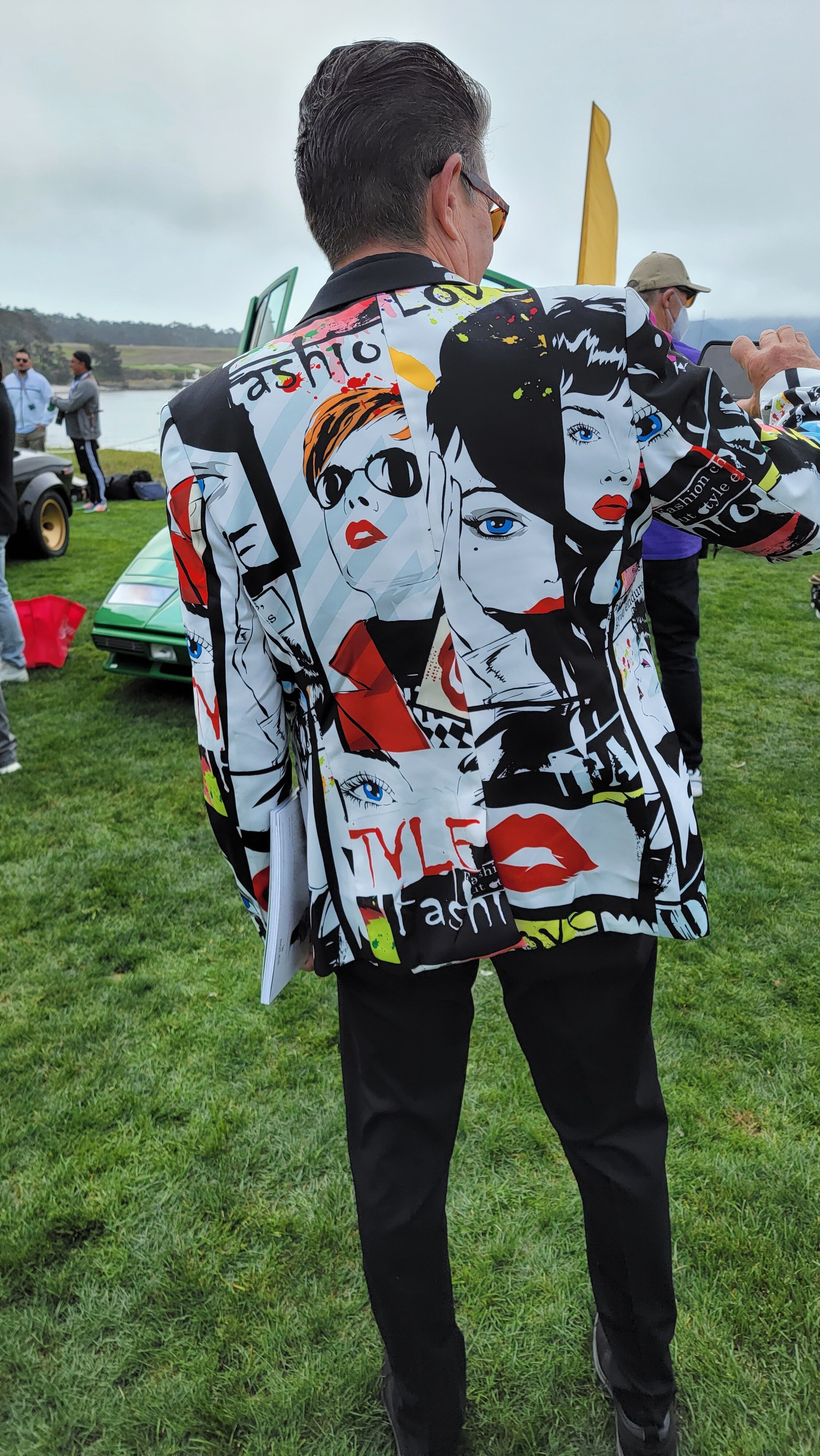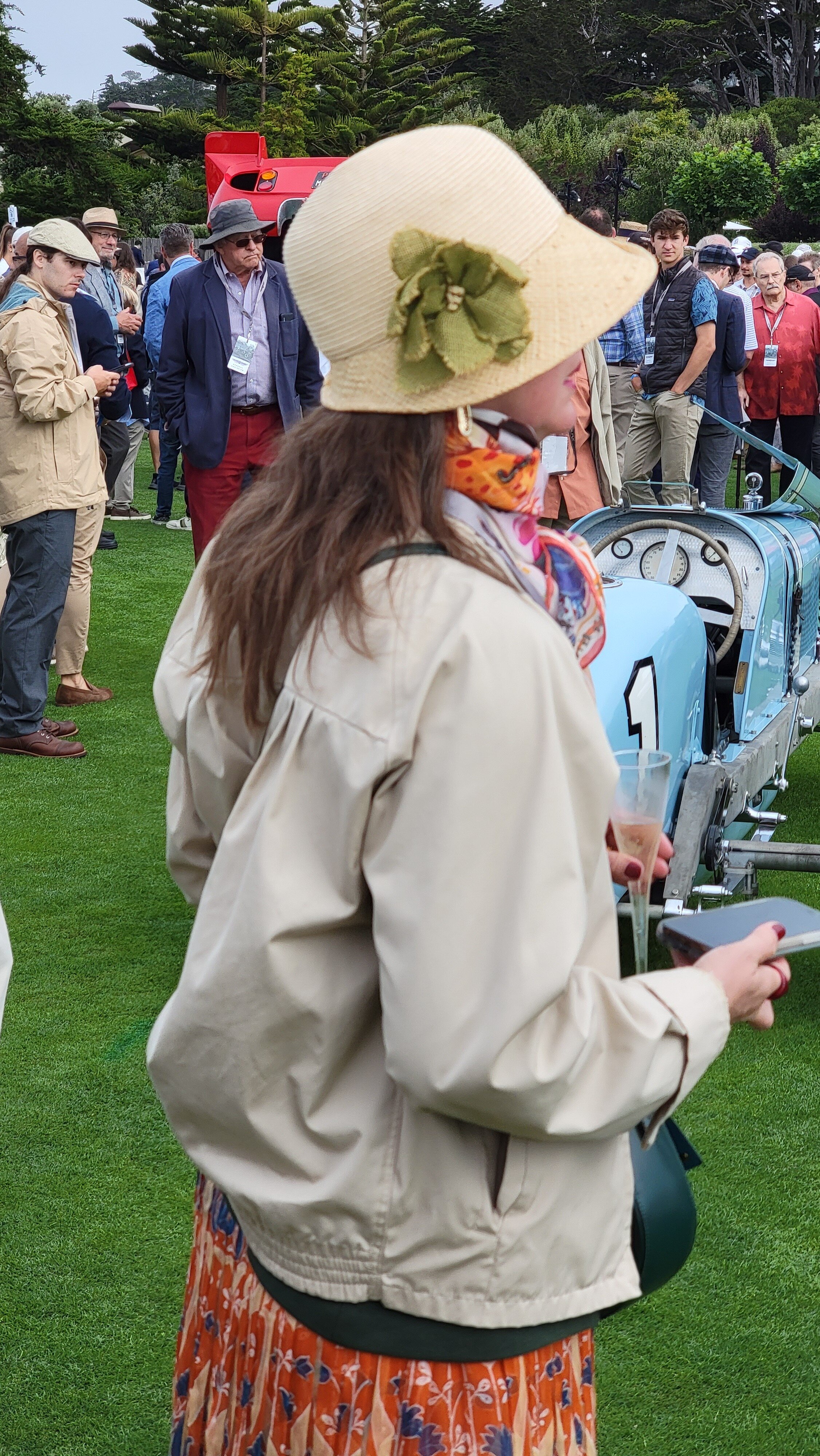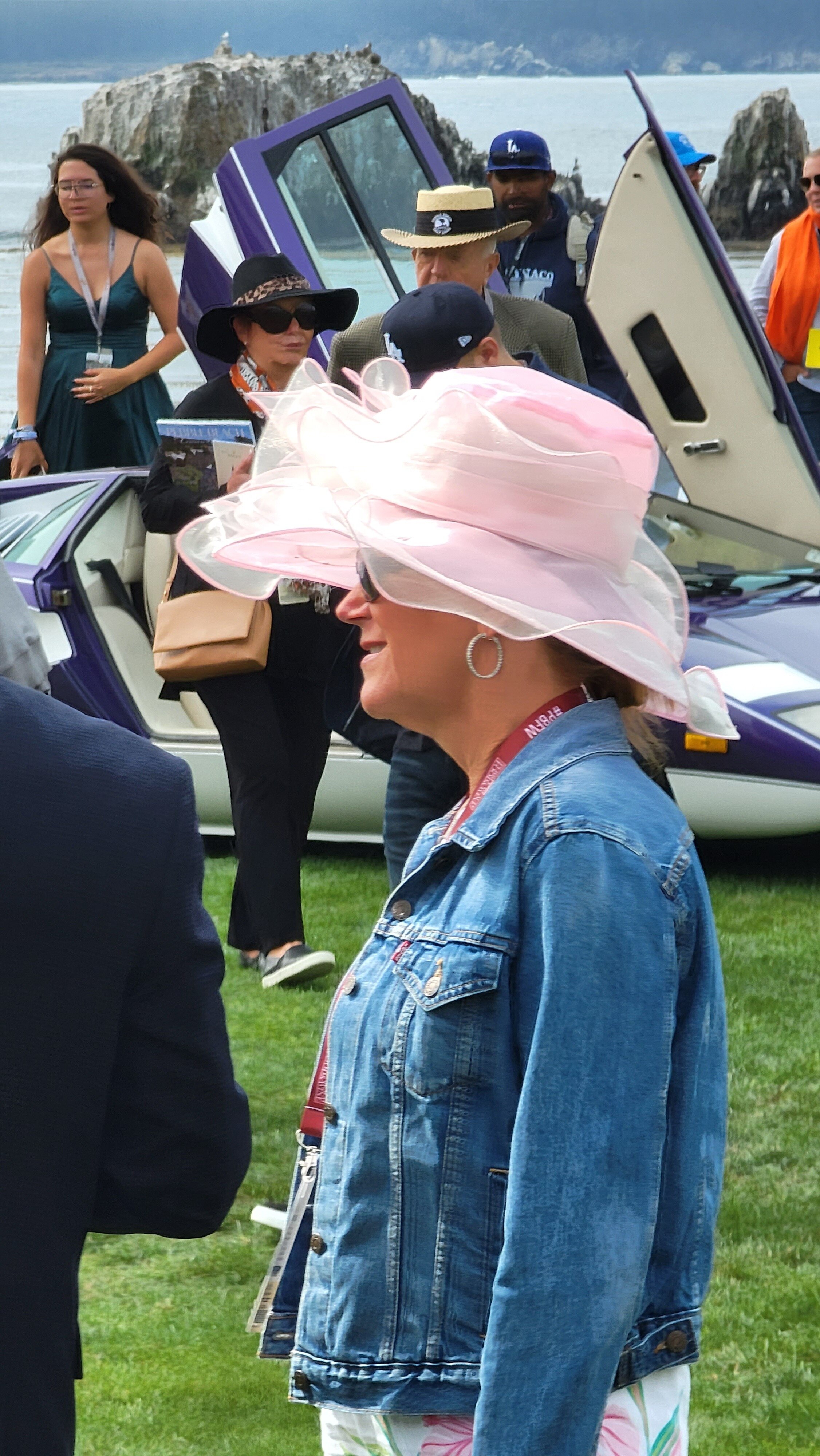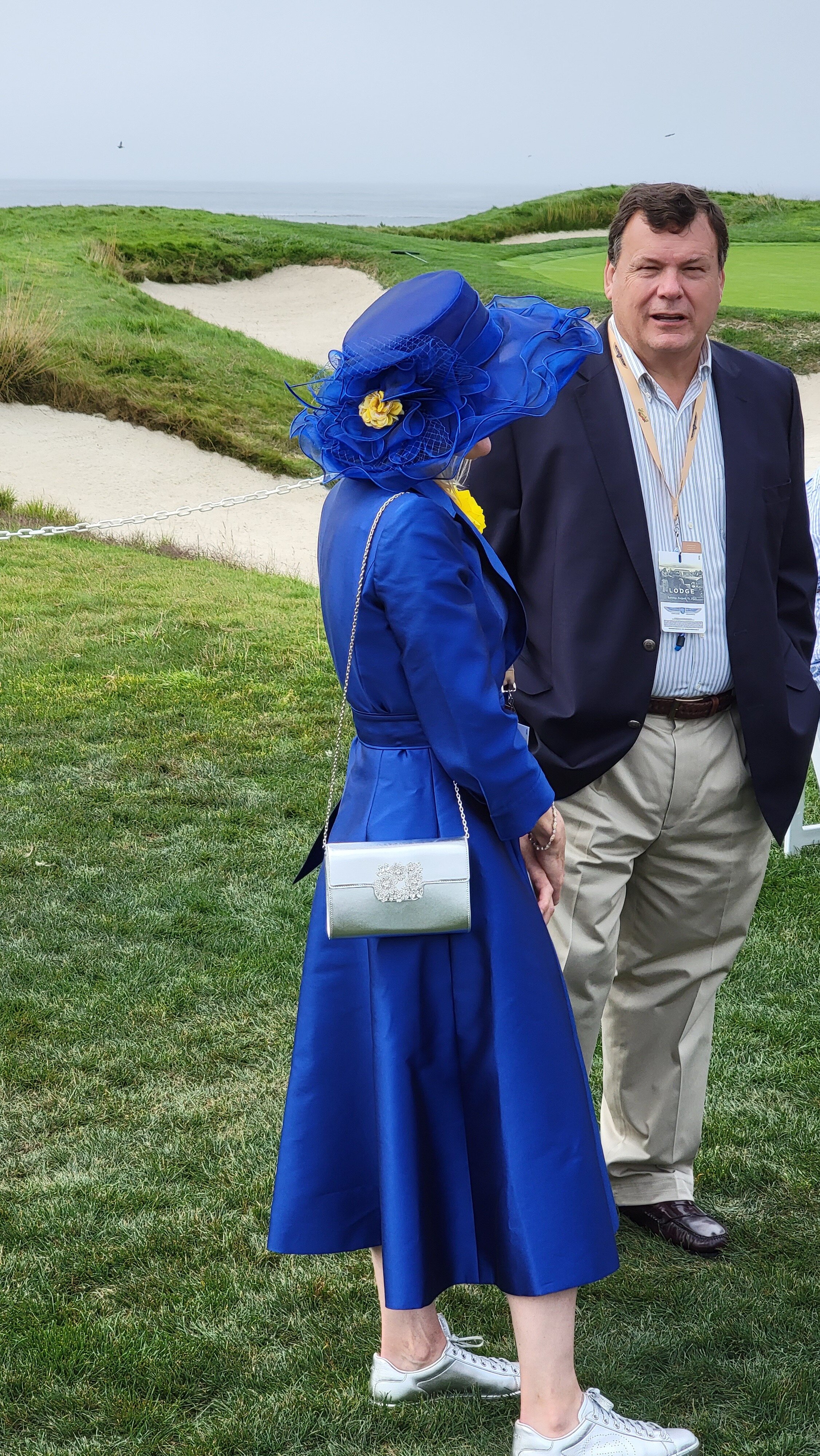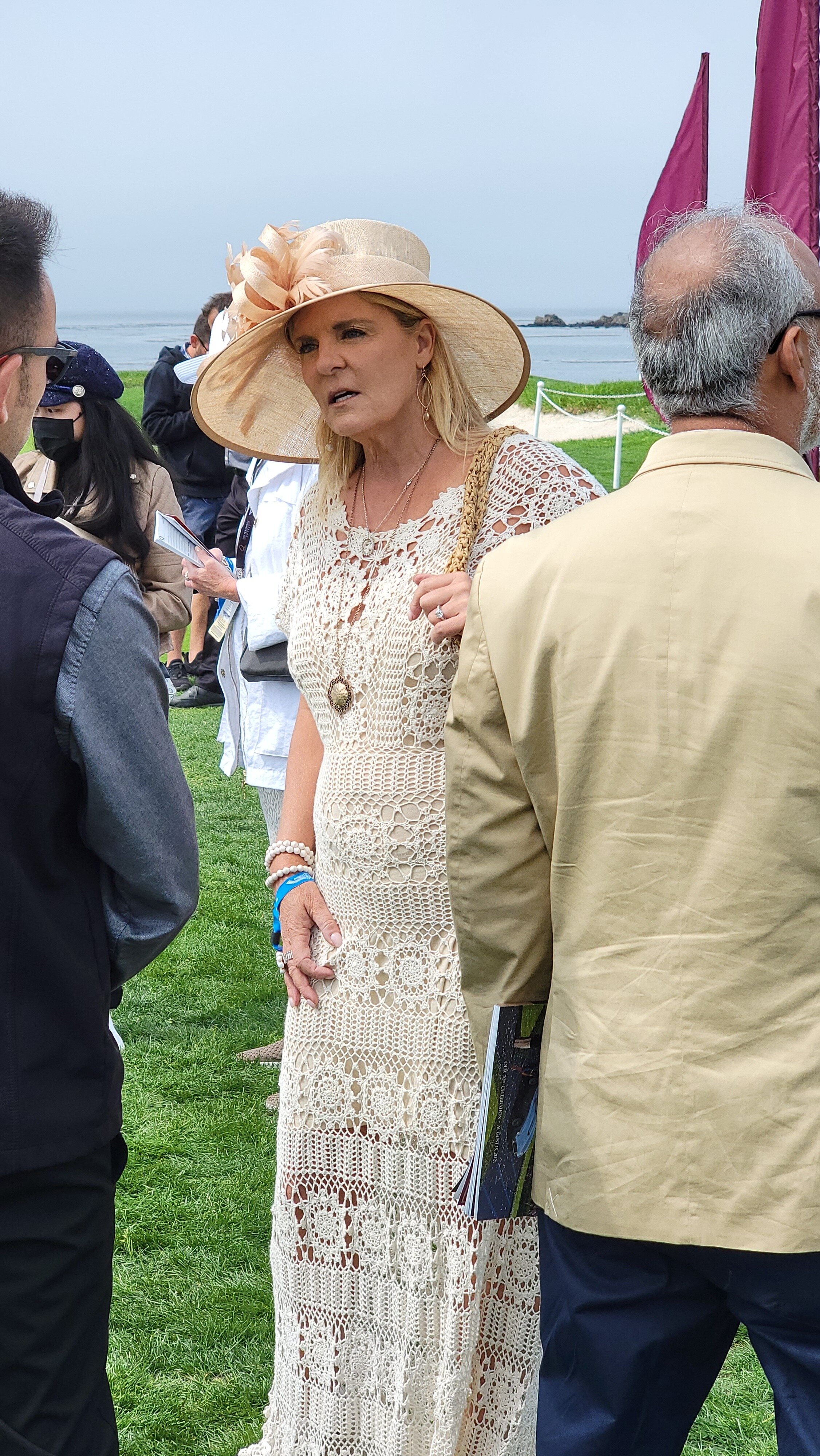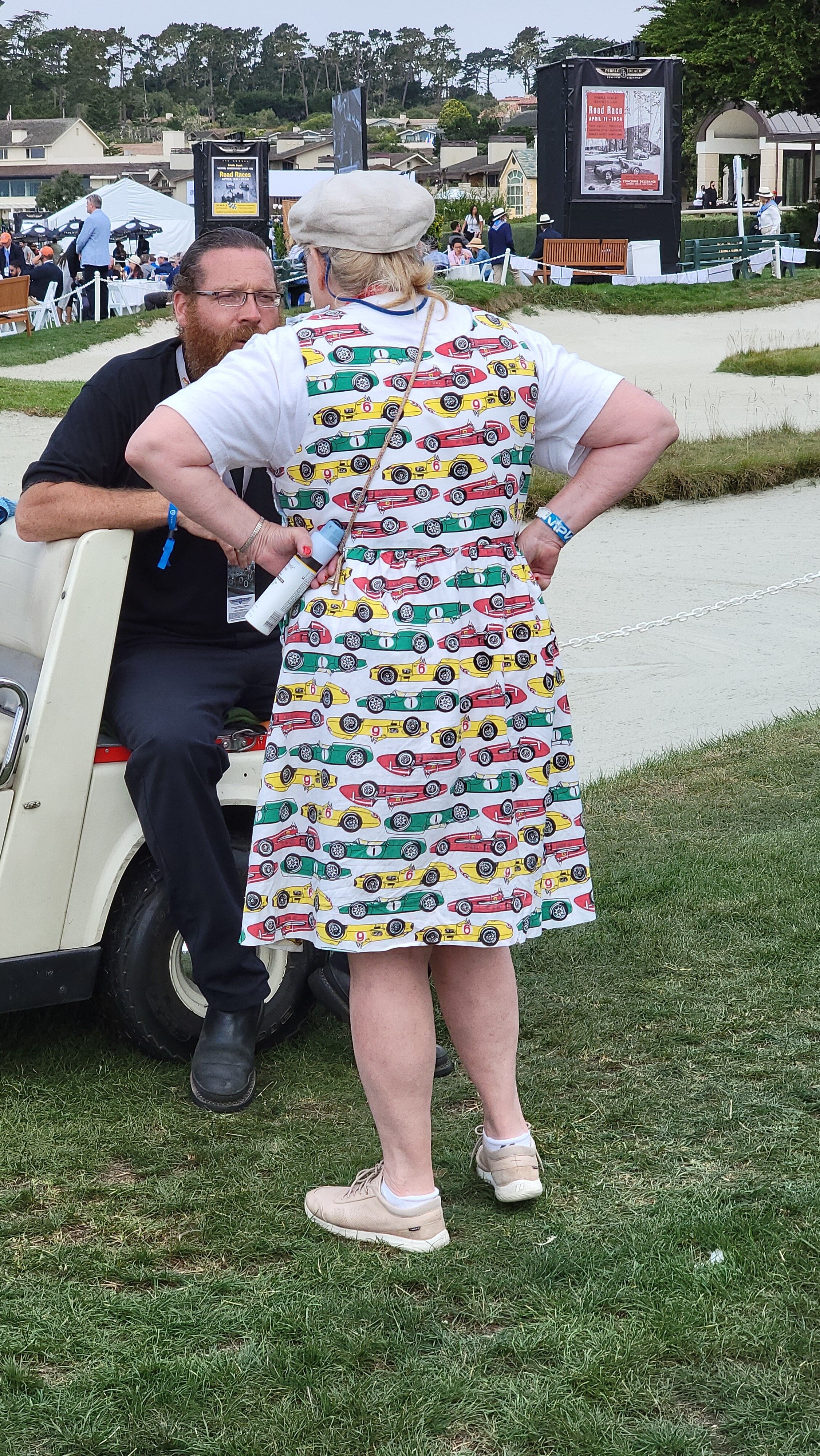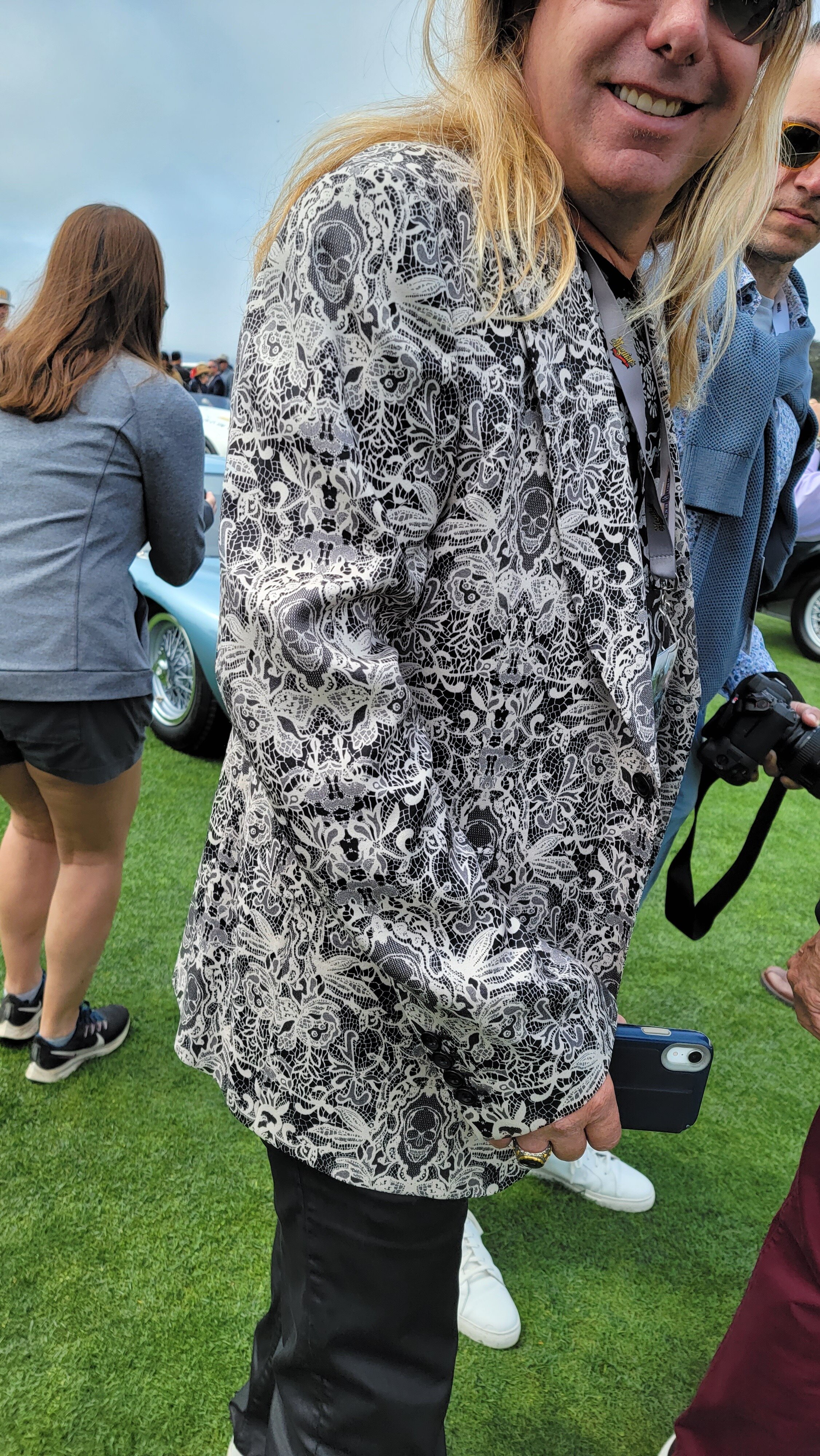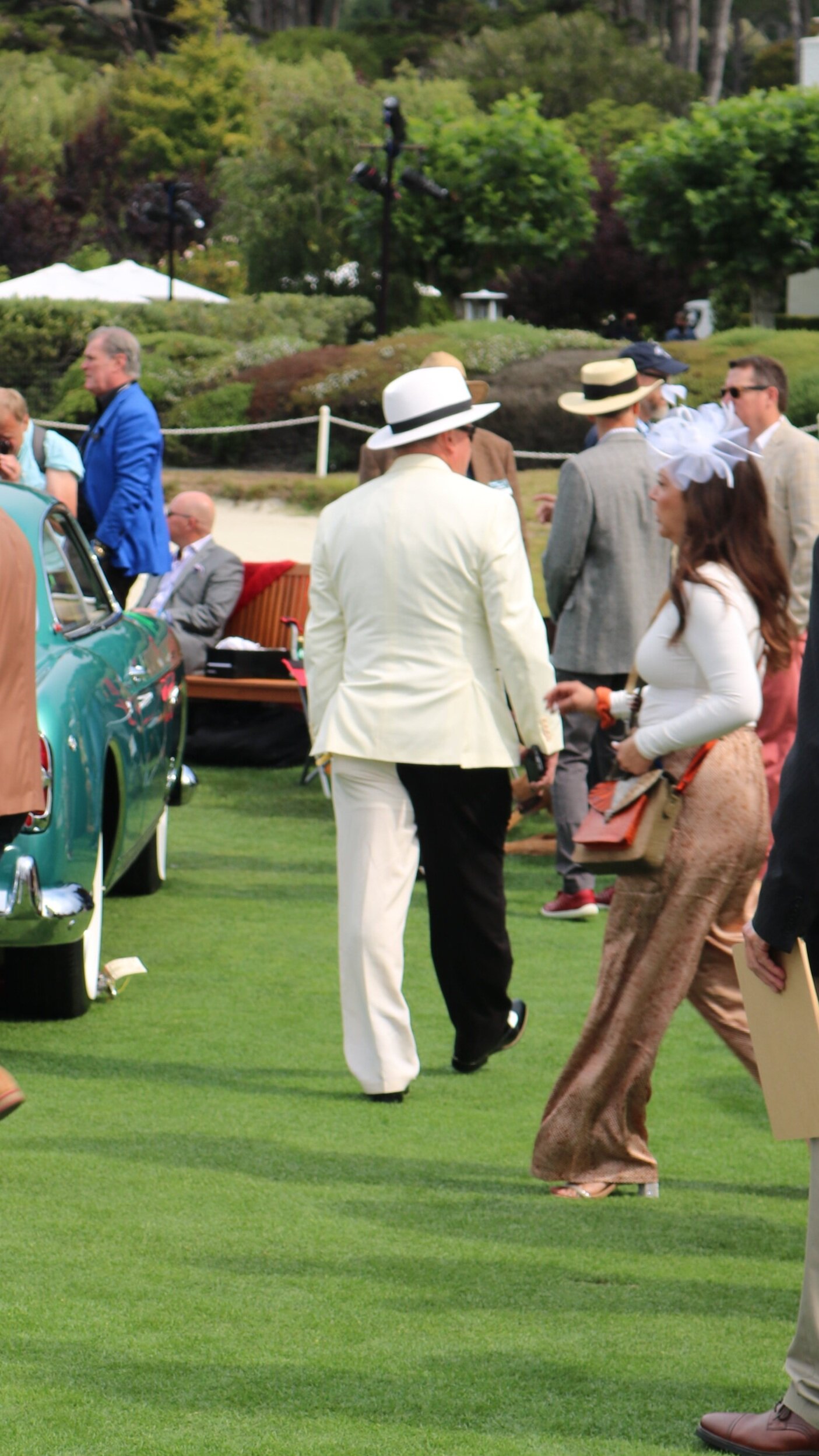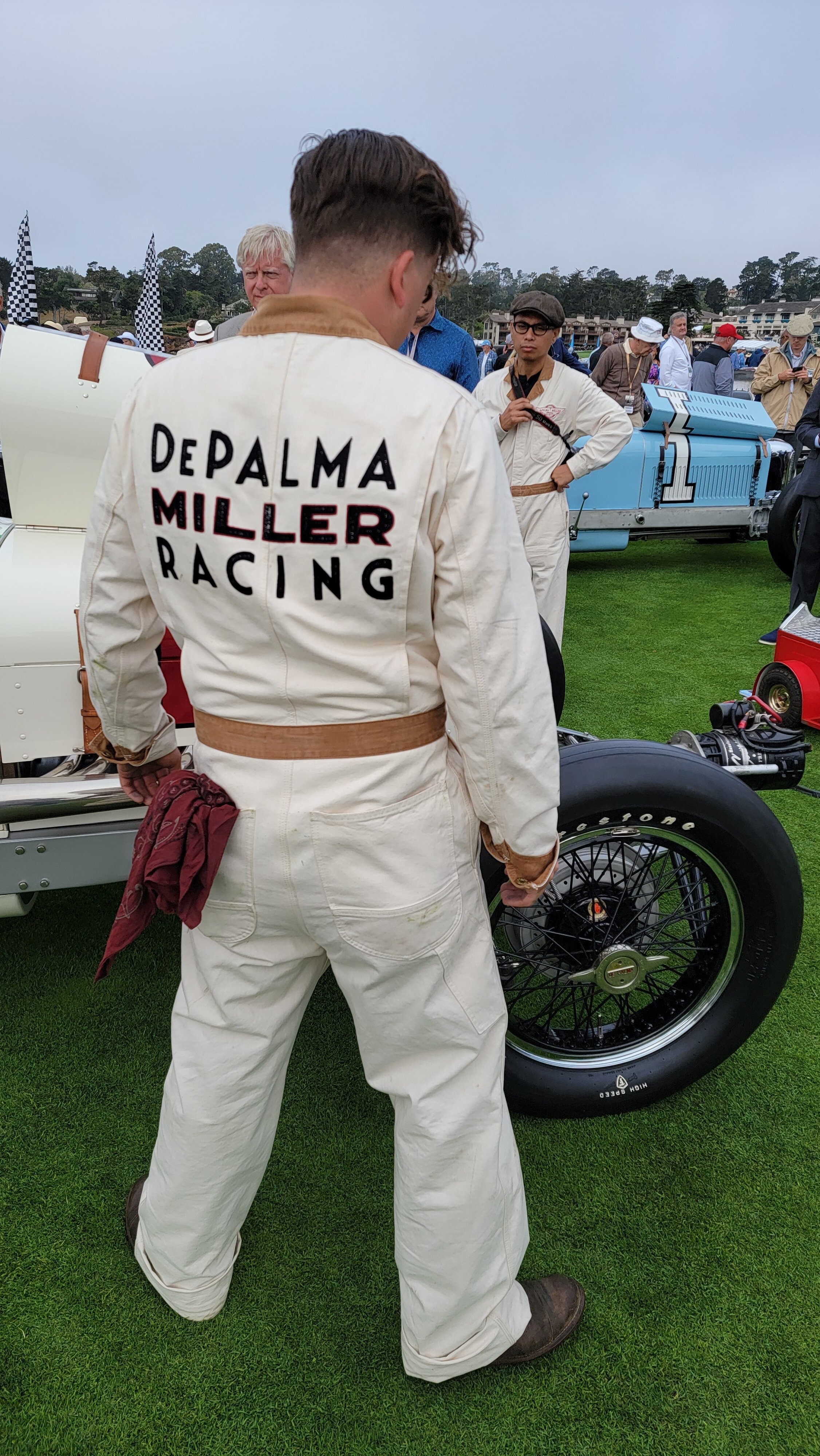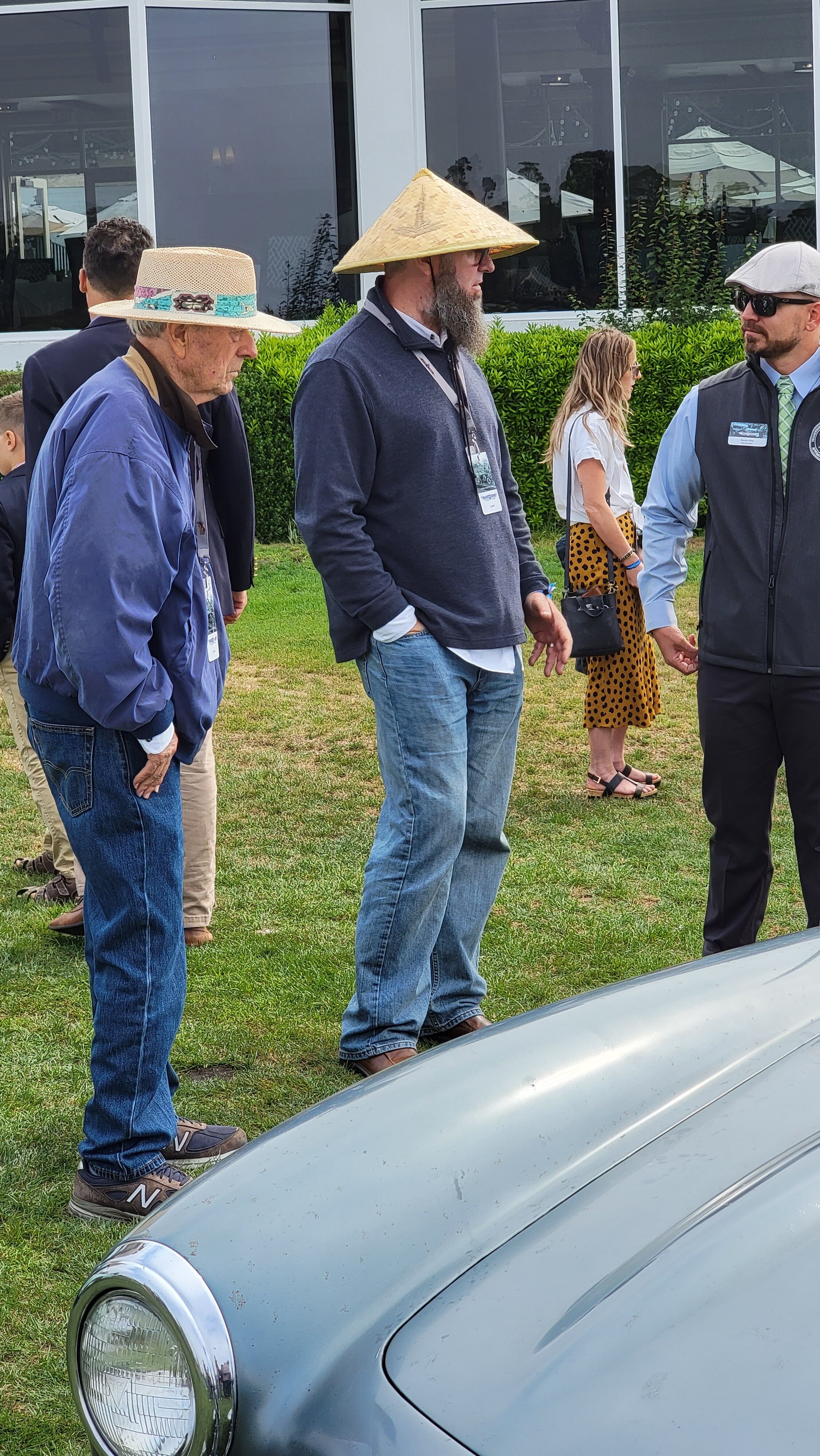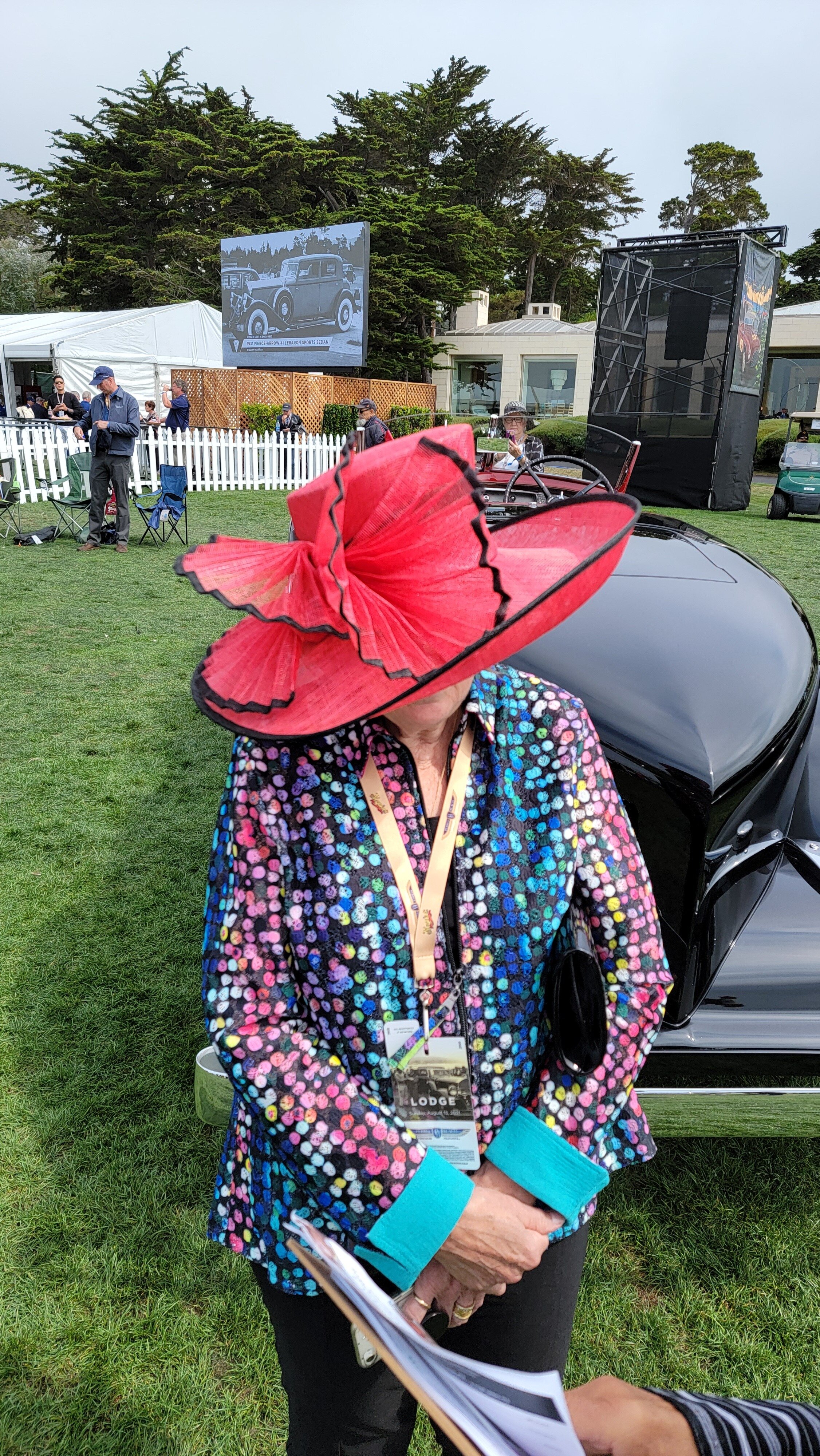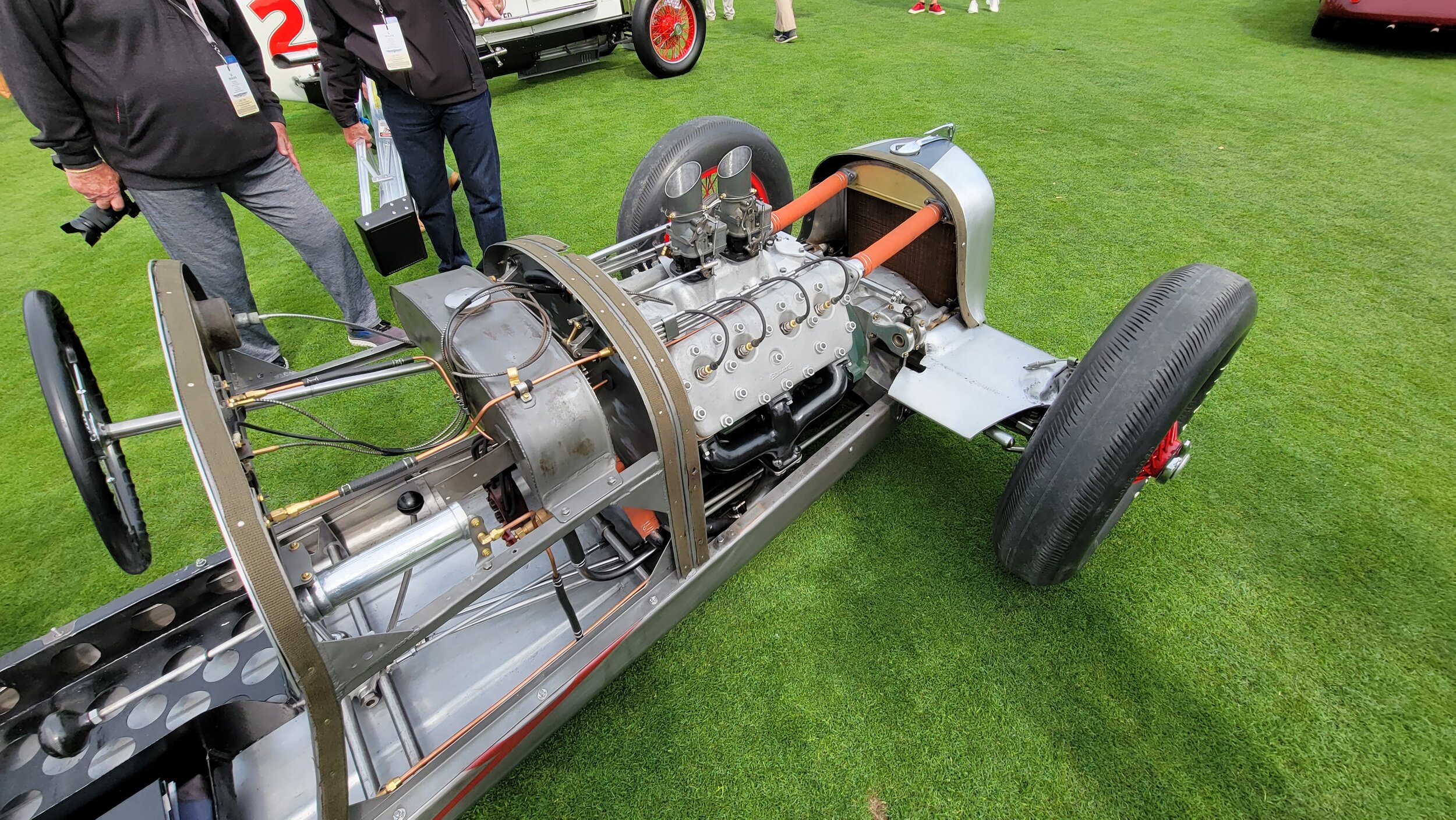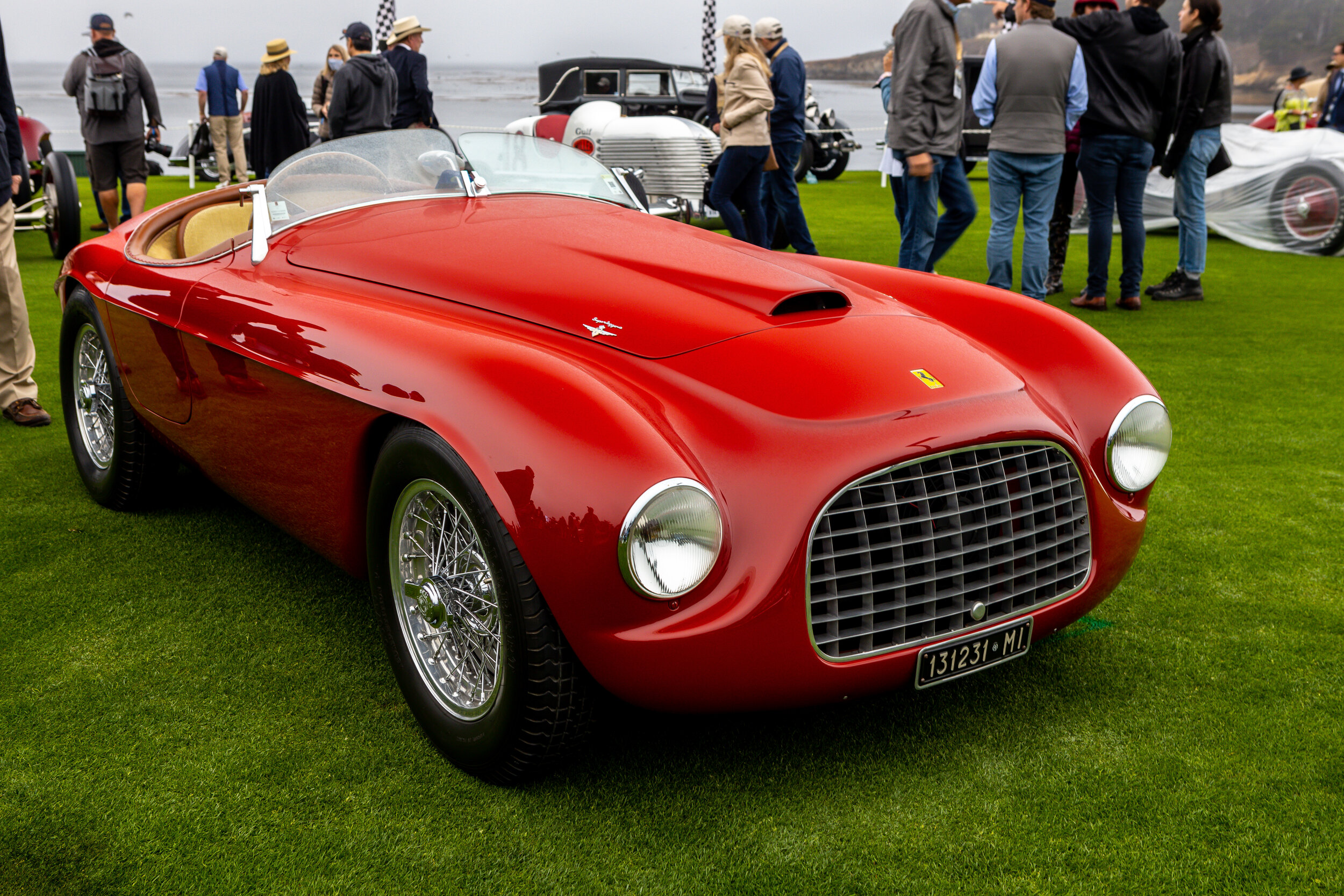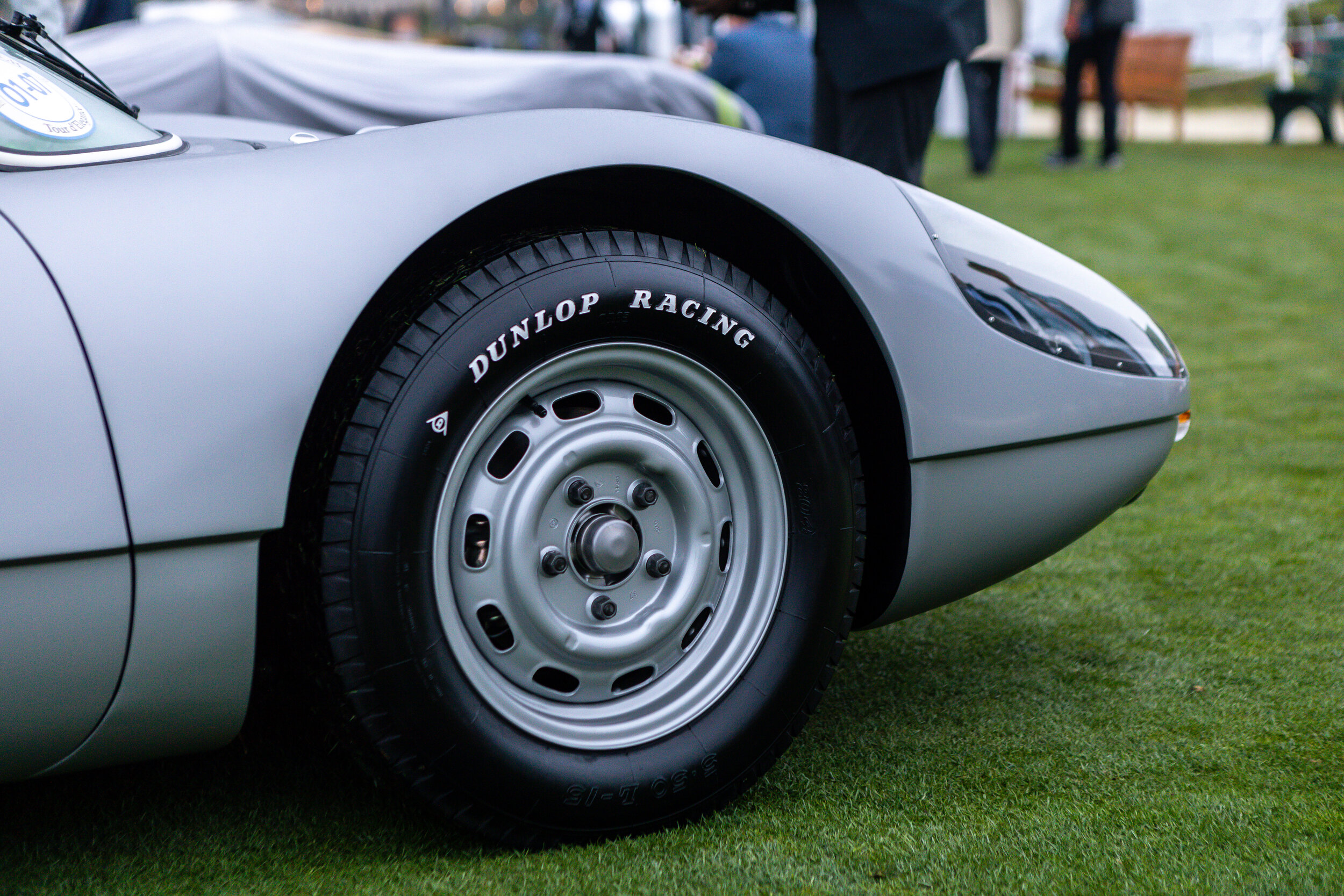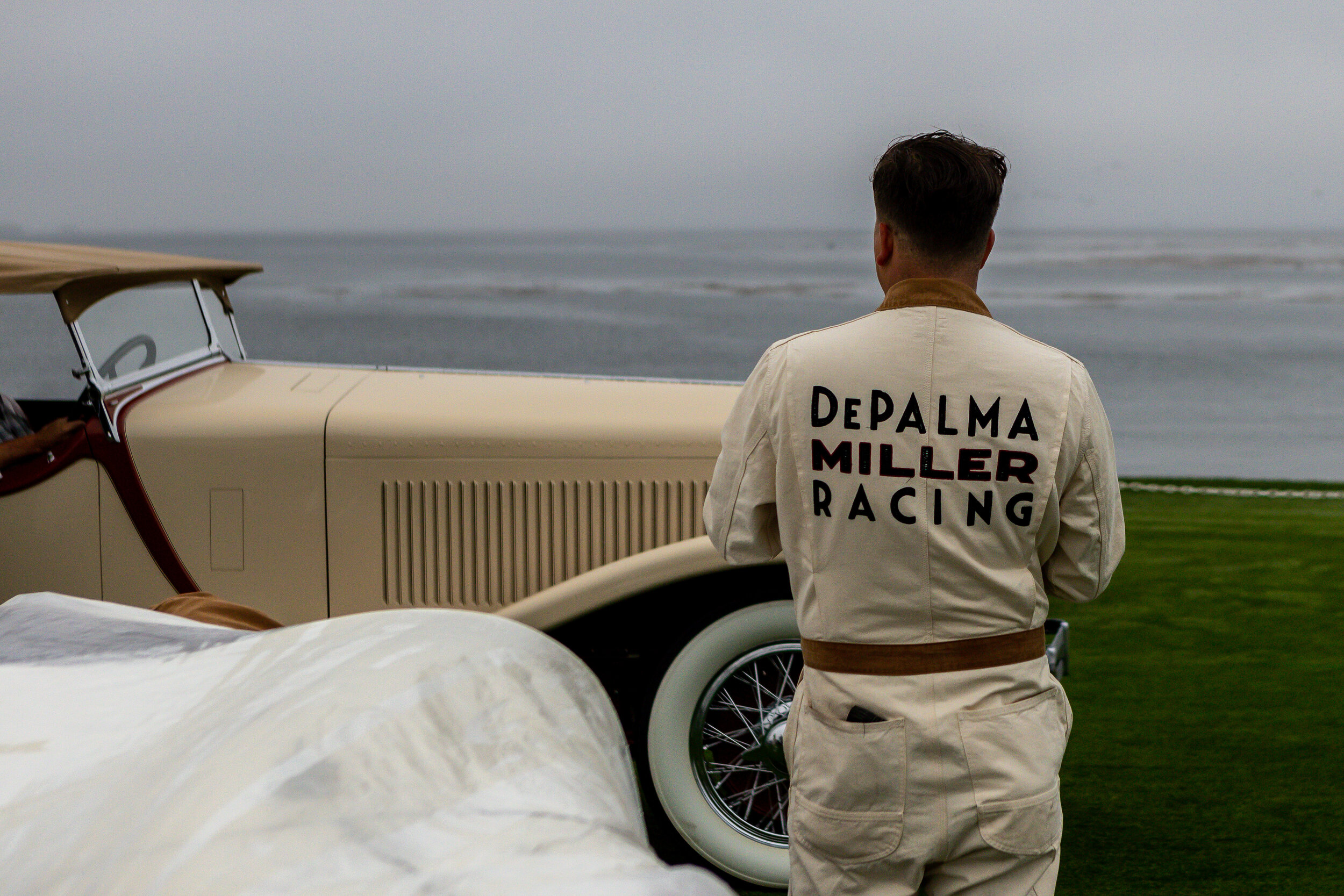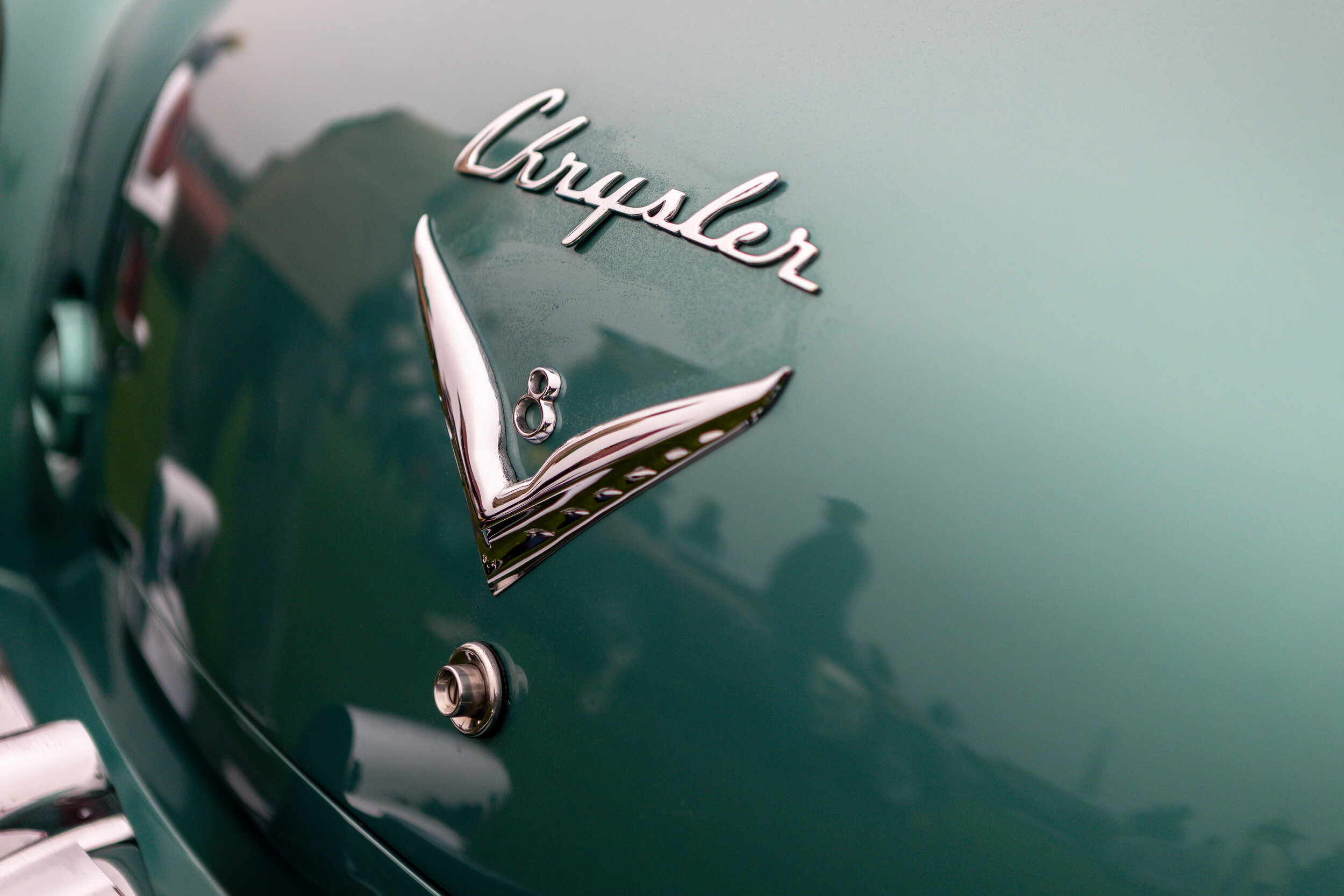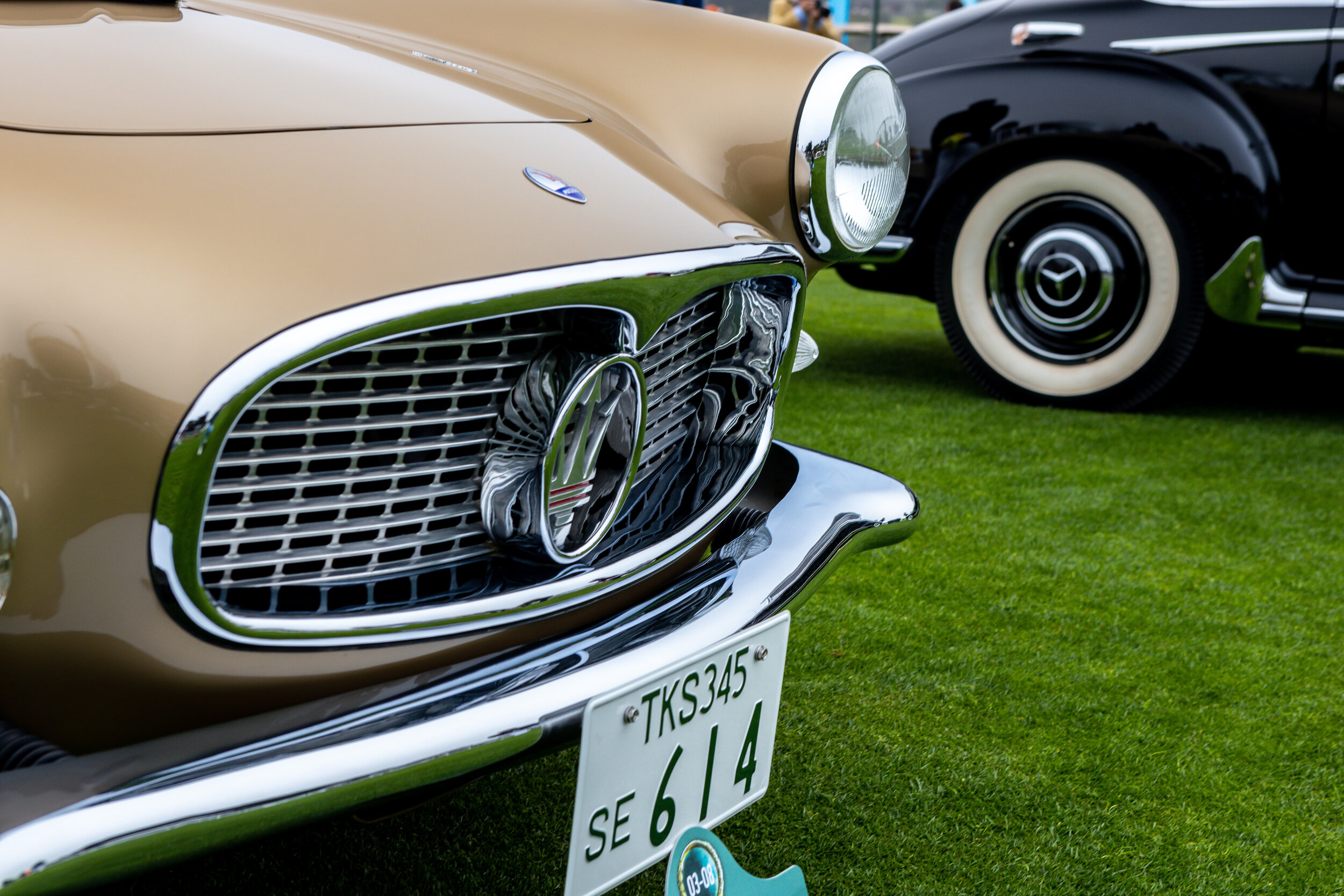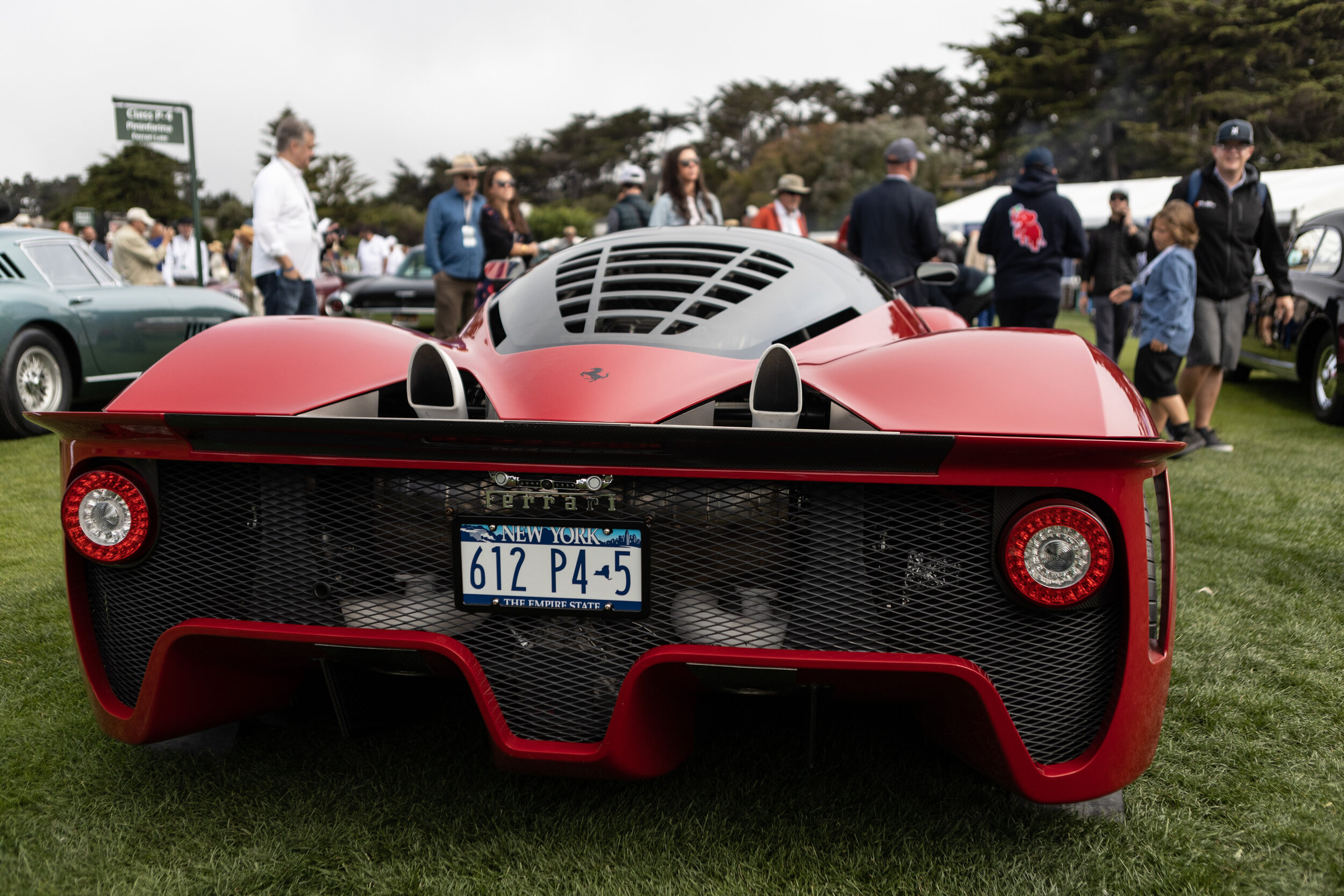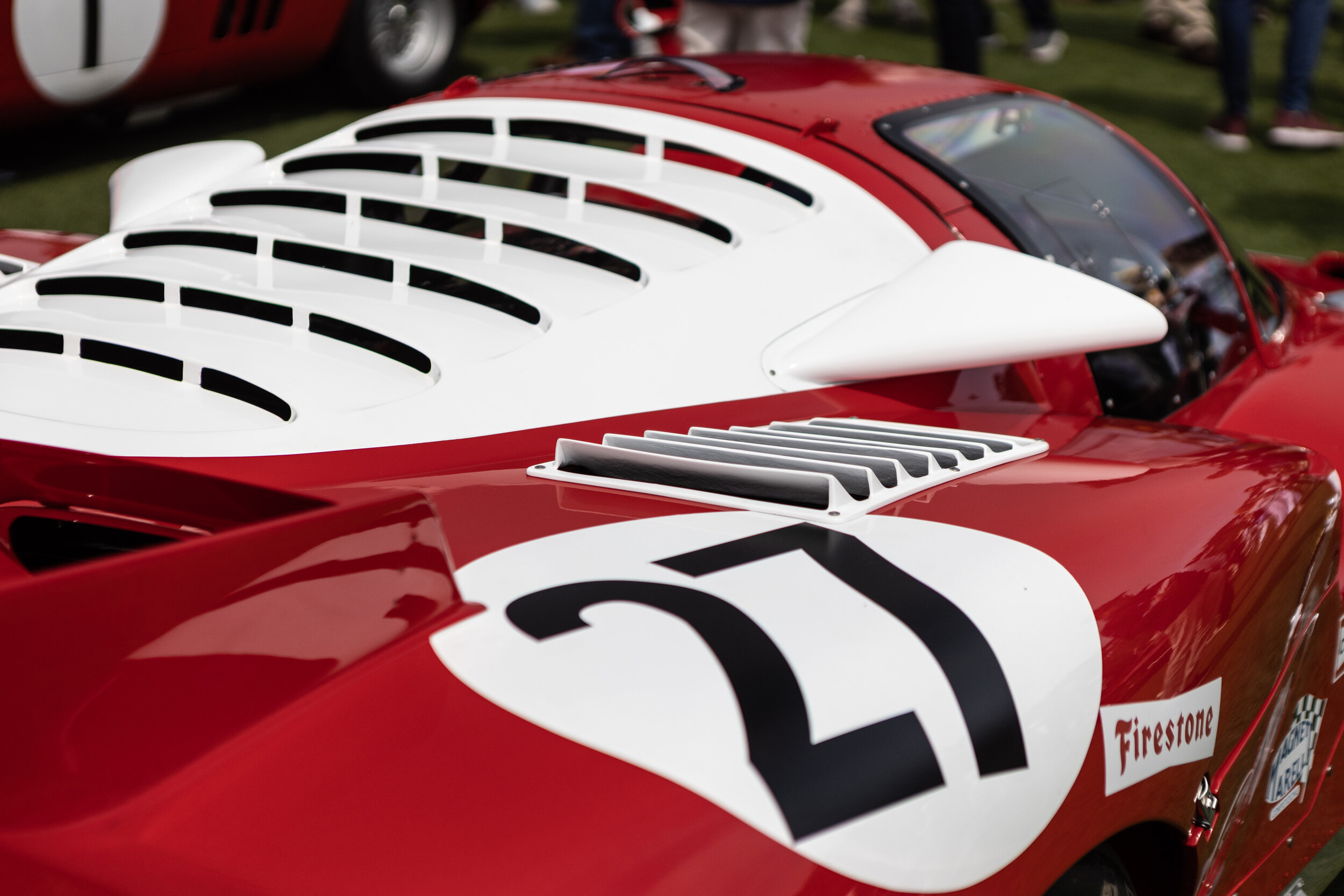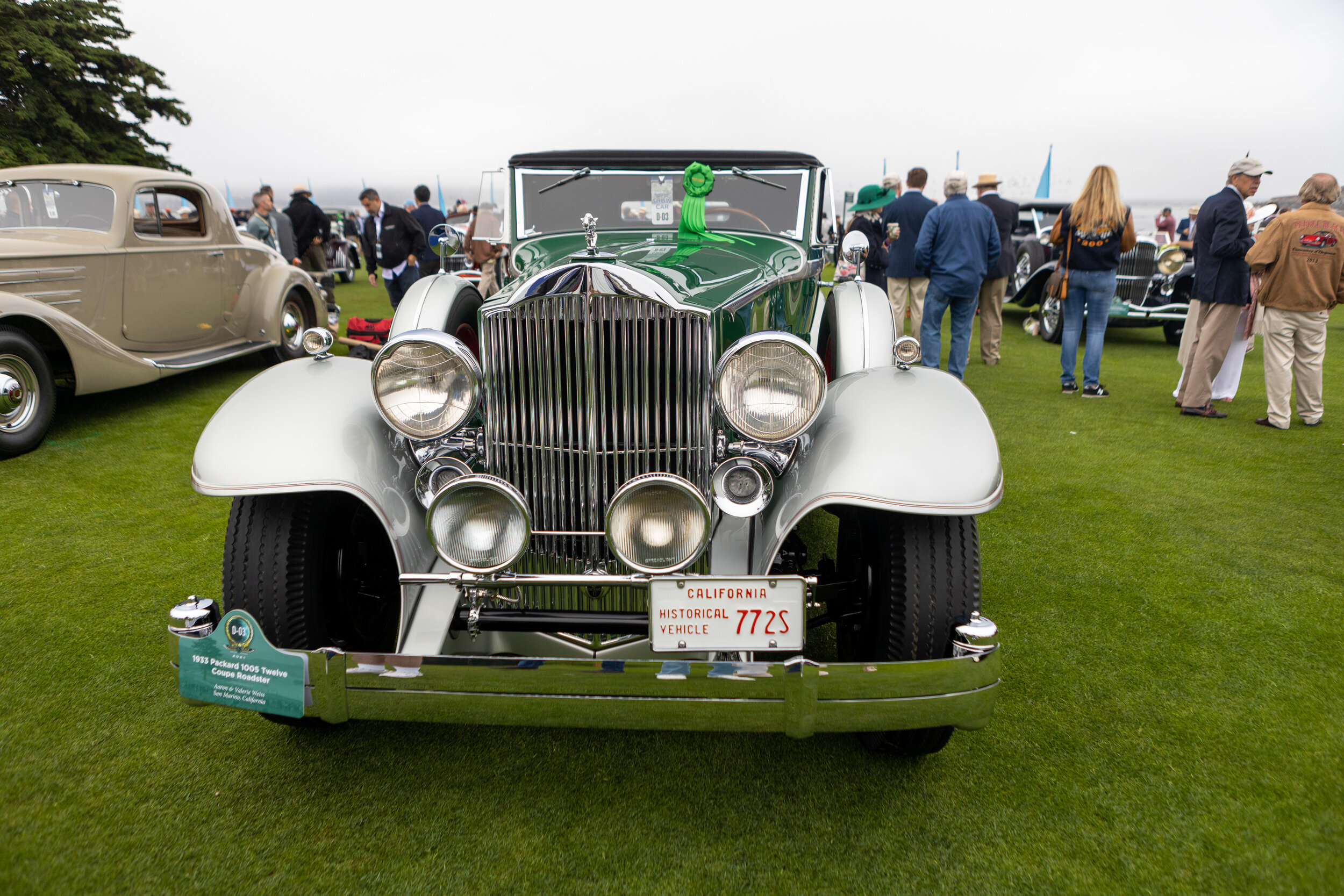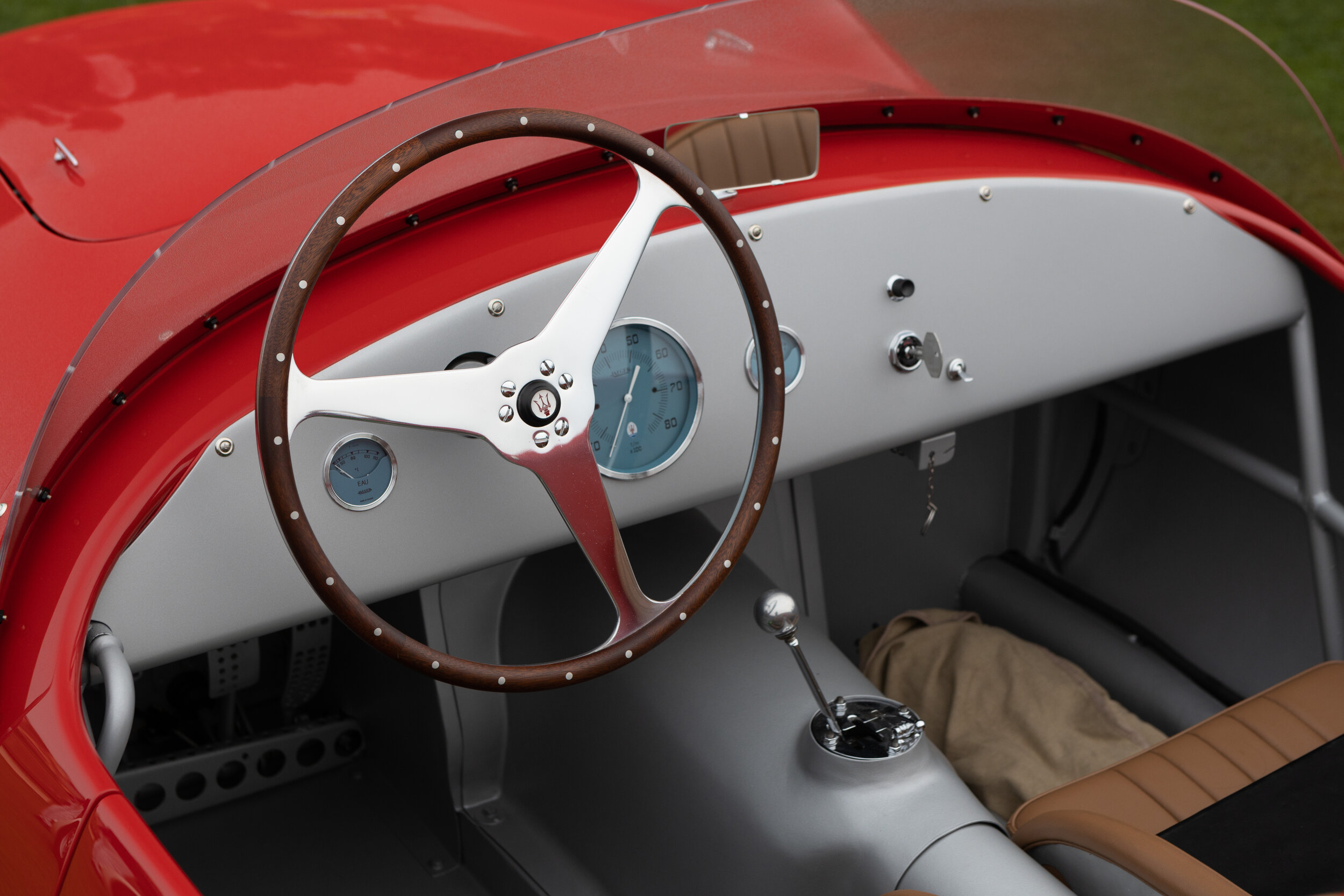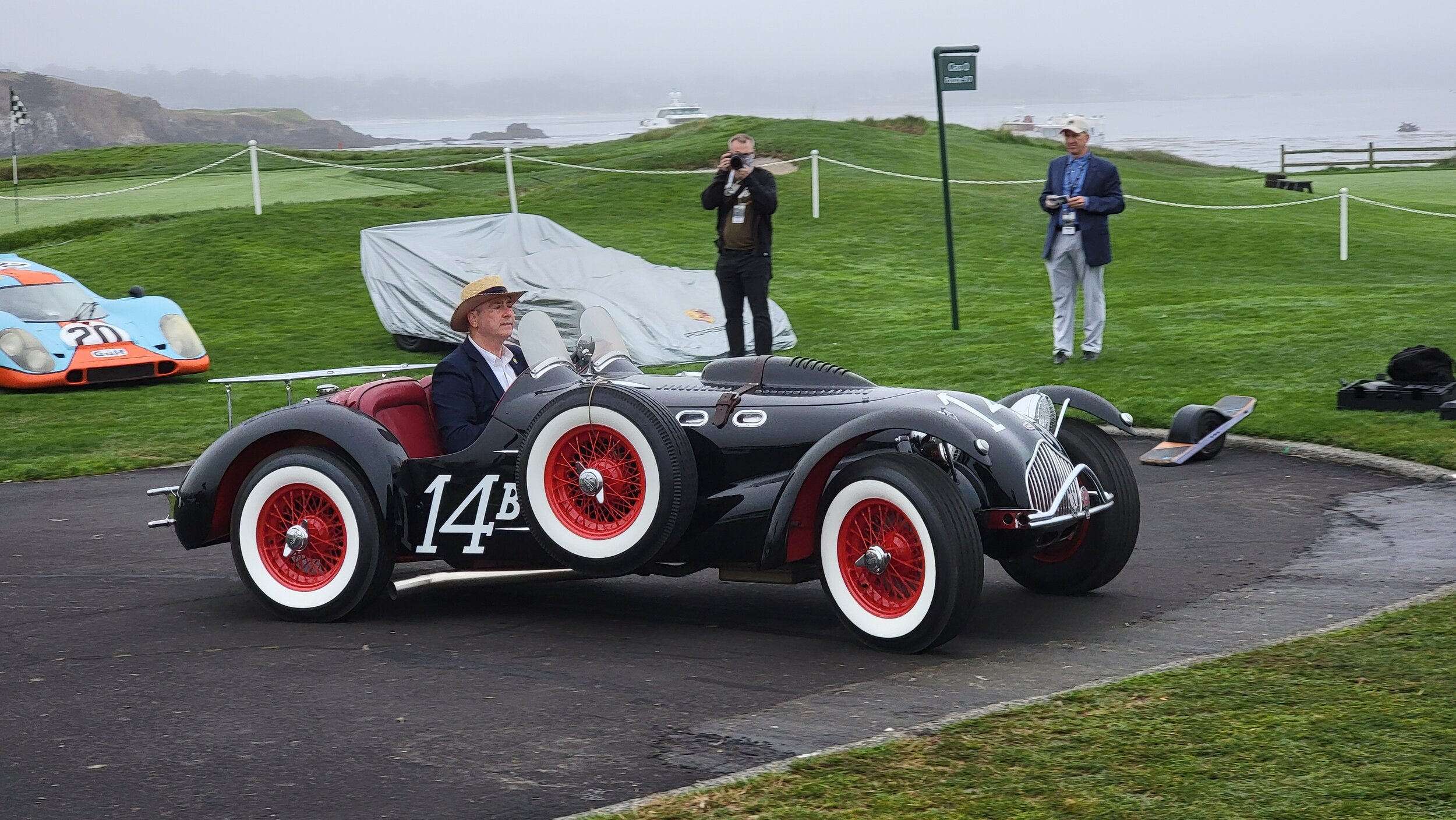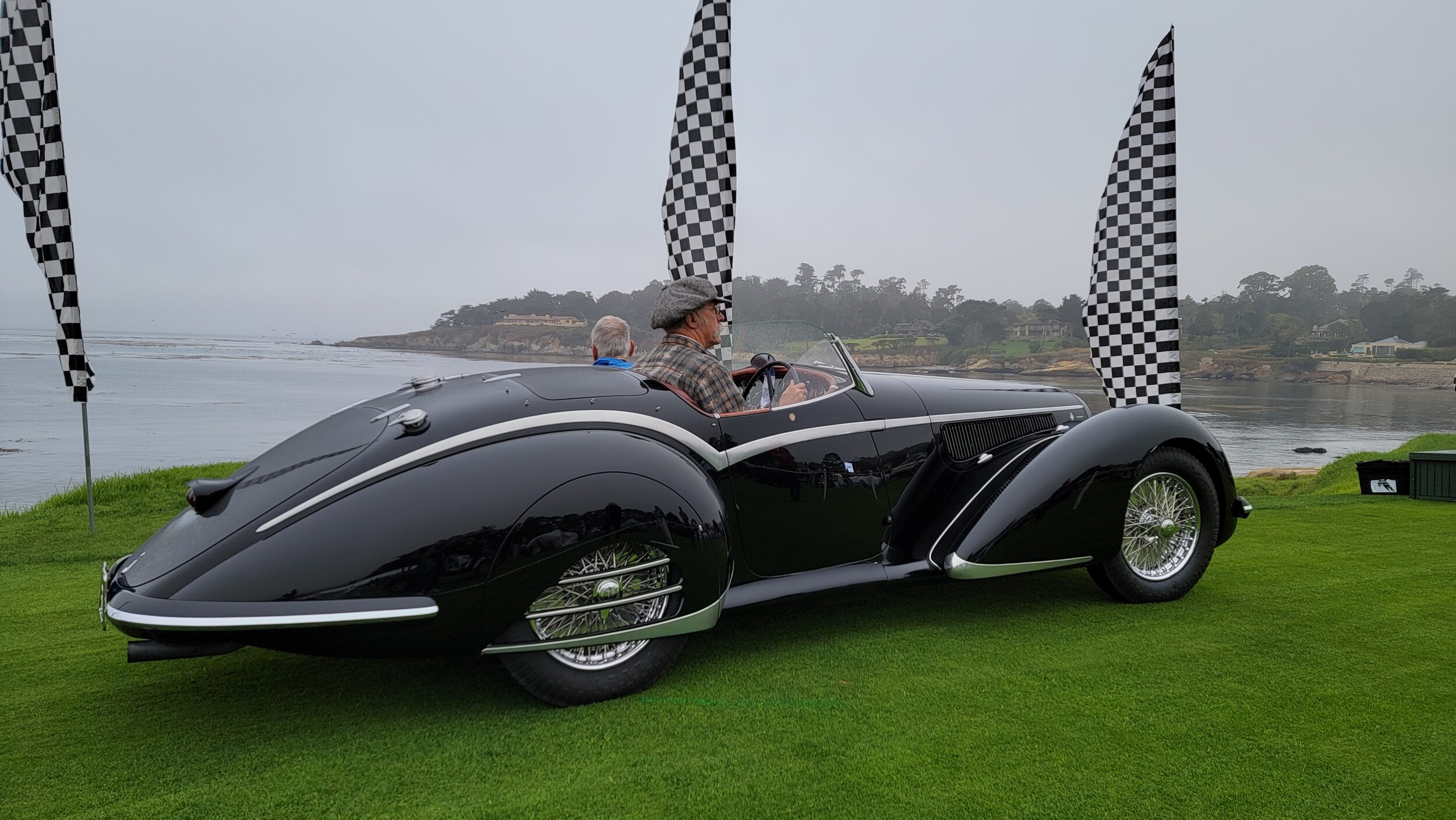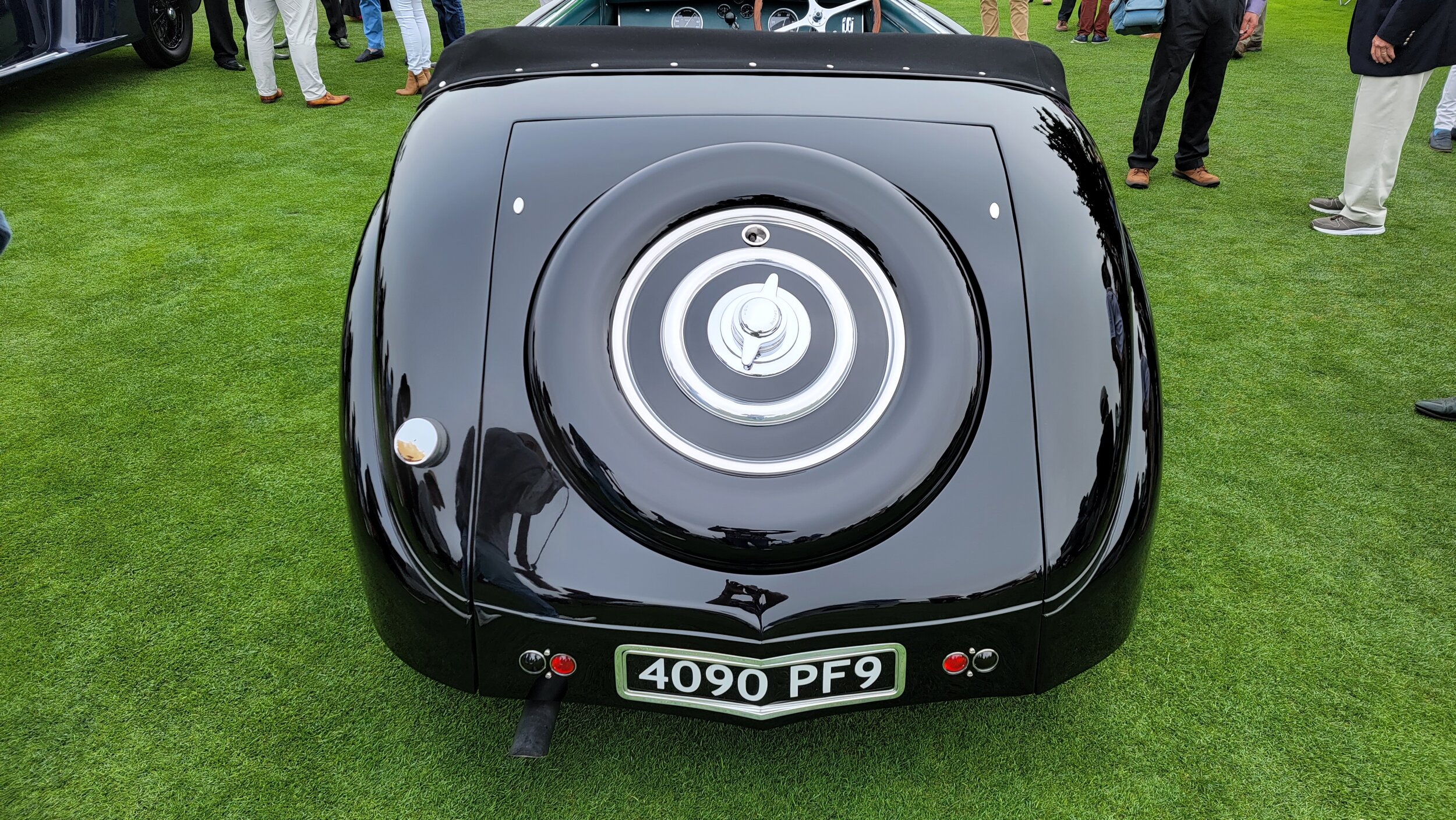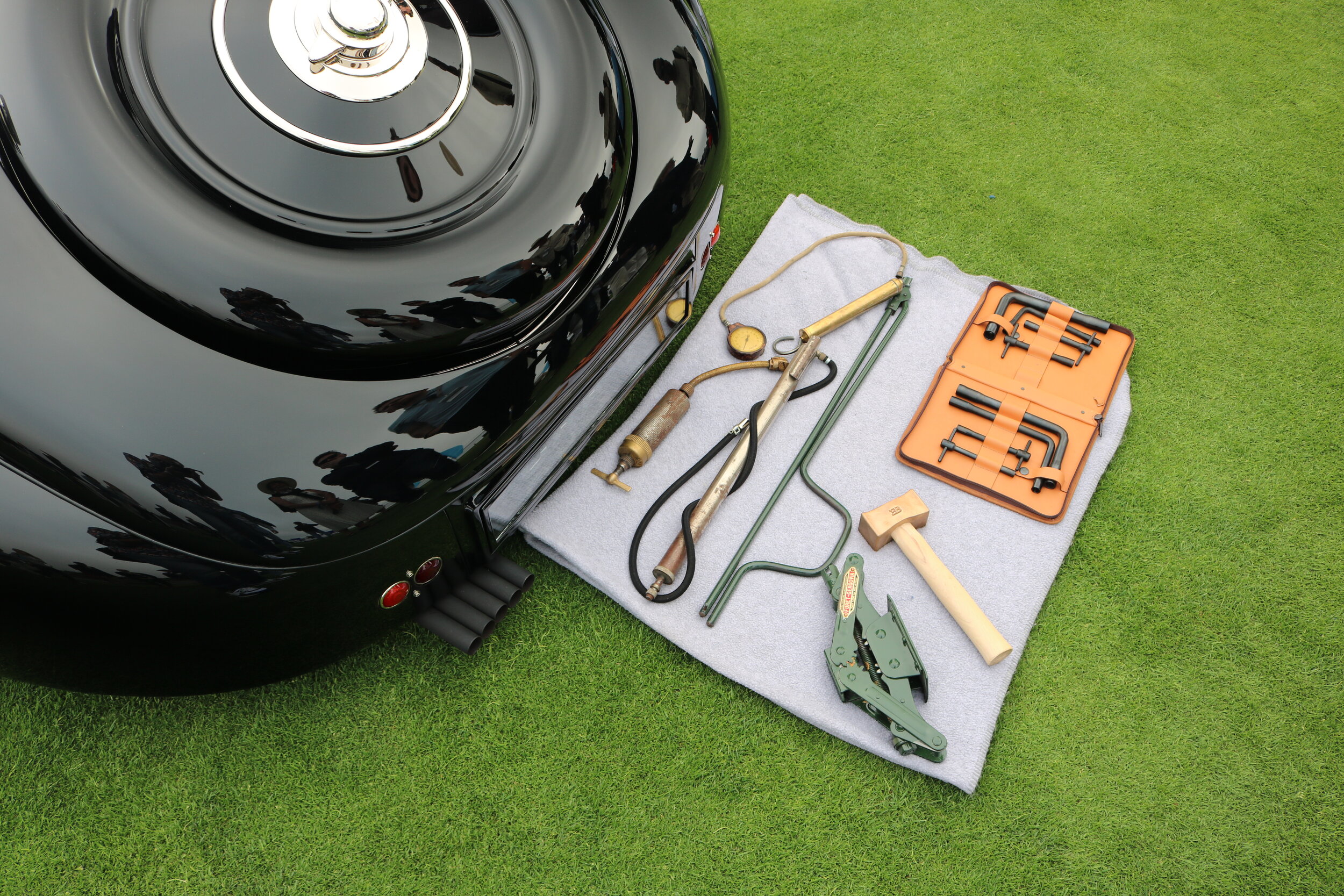Pebble Beach Concours 2021
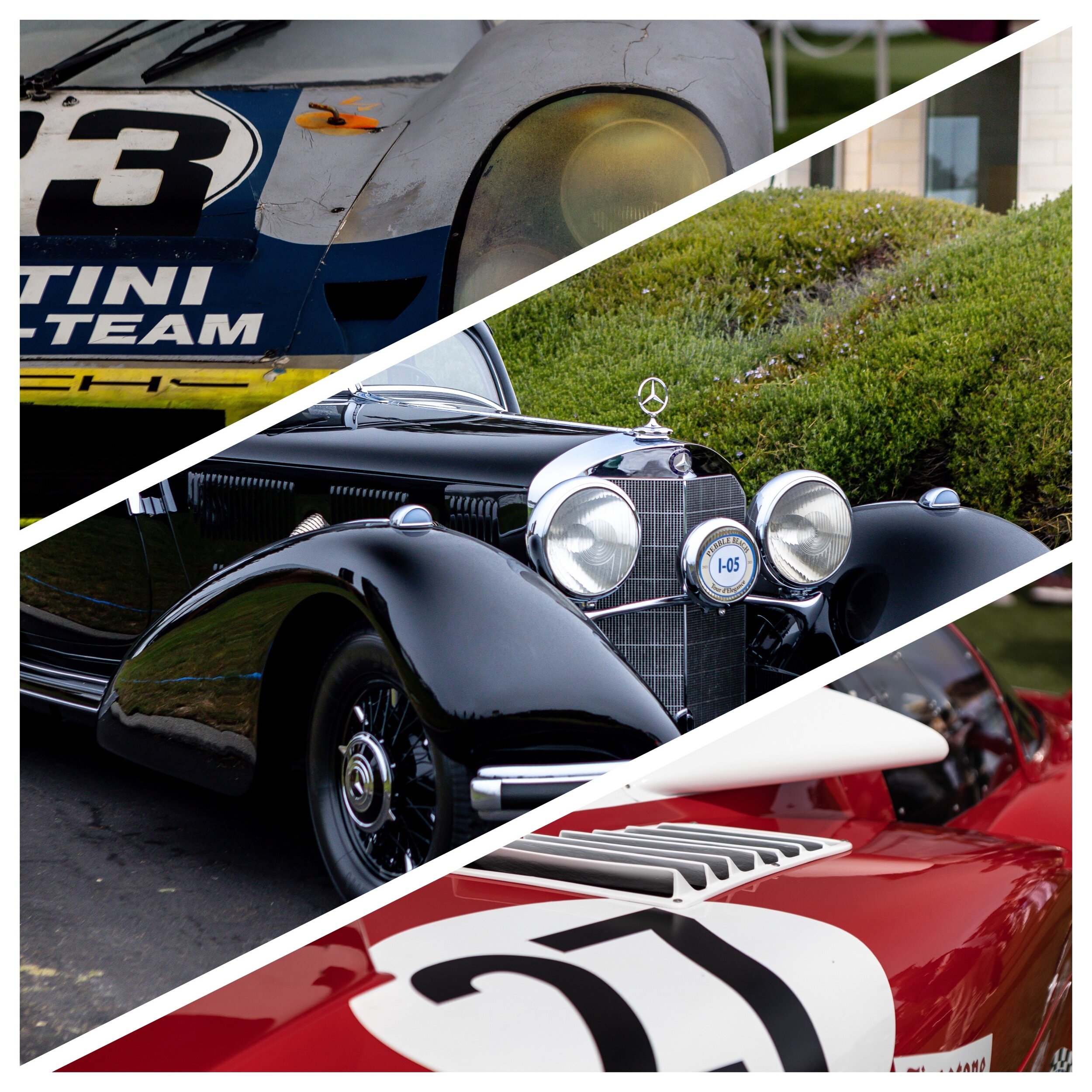
Social media and YouTube are flooded with videos and photos of the latest seemingly bespoke (really, #boughtnotbuilt) sports cars, supercars and hypercars. Not to mention the “special editions” reserved for the select few with either the chedda or the right connections and sometimes both. They come with special designations and badges in Italian or German and combos of numbers and letters to denote their rarity and “specialness.” Black edition this and performance spec package that. Sometimes, all things are equal and the only “special” thing is a supposed one-off-ish paint color or wheel option that helps ensure the profit margin of one of the many well known European sports car manufactures.
Car Week has something for every gear head, modern, historic, muscle, vintage, the ridiculous, European, Asian, and the all American. The rarest of the rare show up and show out, including the legendary rarities and the rarities created through slick marketing and influencing. It’s that moment when you see three, four even five of the supposed supercar one-offs cruising (blipping, burping and revving) the streets of Carmel or Monterey that rarity turns to hilarity. If you just woke up in the last 5 or so years, or maybe were just born, you might be fooled into thinking that Car Week is a supercar spectacular. Not to say there’s anything wrong with that. It is something special to see the Monterey peninsula turn into the streets of Monaco for a few days in August. However, the reality is that Car Week was born in 1950 in the woods and dirt roads of the Del Monte forest, where people raced within inches of trees and spectators alike, “protected” only by hay bales and minimal amounts of discretion. The birth of Car Week was the Pebble Beach Road Races where drivers competed for the Del Monte Trophy.
The Pebble Beach Concours d’Elegance emerged as a showcase of new sports cars that raced during those road races. The winner of race would have their car displayed on the 18th fairway of Pebble Beach Golf Links. Some of history’s greatest sports car drivers drifted around the twisty roads of the Del Monte forest. Phil Hill won the first running in 1950 in a Jaguar XK-120. At the last race, in 1956, a young Carroll Shelby would win, only fours years before he would win the 24 Hour of Le Mans. The Pebble Beach Road Races would lead to the creation of Laguna Seca Raceway as a safer venue for racing after the death of Ernie McAfee who crashed his Ferrari in the same race that Shelby won.
Phil Hill’s 1950 race winner.
This history is why the Pebble Beach Concours is the capstone event of Car Week and a reminder for the true automotive enthusiasts of our analog past. Never mind the supposed rarities that flood the peninsula. “Sunday at Pebble” is the code language that is understood and coveted as North America’s most prestigious showing of true rarities, one-offs and specials. History’s automotive junk yard has a way to reduce the numbers of any specific car through crashes, neglect or atrophy that creates rarity through attrition so that even the one time popular automobile can find itself among the last standing.
The 70th Pebble Beach Concours d’Elegance had a smaller display of cars compared to years past in order to increase the room for spectators but no space was wasted on paying tribute to the history of the Concours and automotive excellence with 230 cars on display. Less was more… so much more as the 70th Concours hosted several stunning categories so that no matter one’s preference jaw dropping was guaranteed.
How early?
Others may disagree, but we firmly feel that the best/only way to experience this event is to start by getting up before all sane people (4 AM for us). This isn’t to get a good parking space, or to beat the traffic. There is no traffic at 5 in the morning and there’s plenty of event parking (that’s an hour to fancy up and caffinate). The reason to arrive so early is to take part in the tradition appropriately named, the Dawn Patrol. At this early hour, you can get up and personal to a handful of pre-staged cars, and witness the slow rollout of the rest of the entries as they idle down the service road and queue up to be guided to their respective positions on the fairway guided by an army of staff in a seemingly unending supply of golf carts. This is as intimate as it gets. You really feel like the whole place is yours. Over the next couple of hours, spectators begin to begin to arrive, and near the lunch hour, the flood gates open and the masses begin to fill in the green. We thought if might be interesting to share a small gallery of prepped and pre-staged cars that we saw this year as we awaited the rest of the cars and also the dawn. We’ll call this gallery, Hermetically Sealed

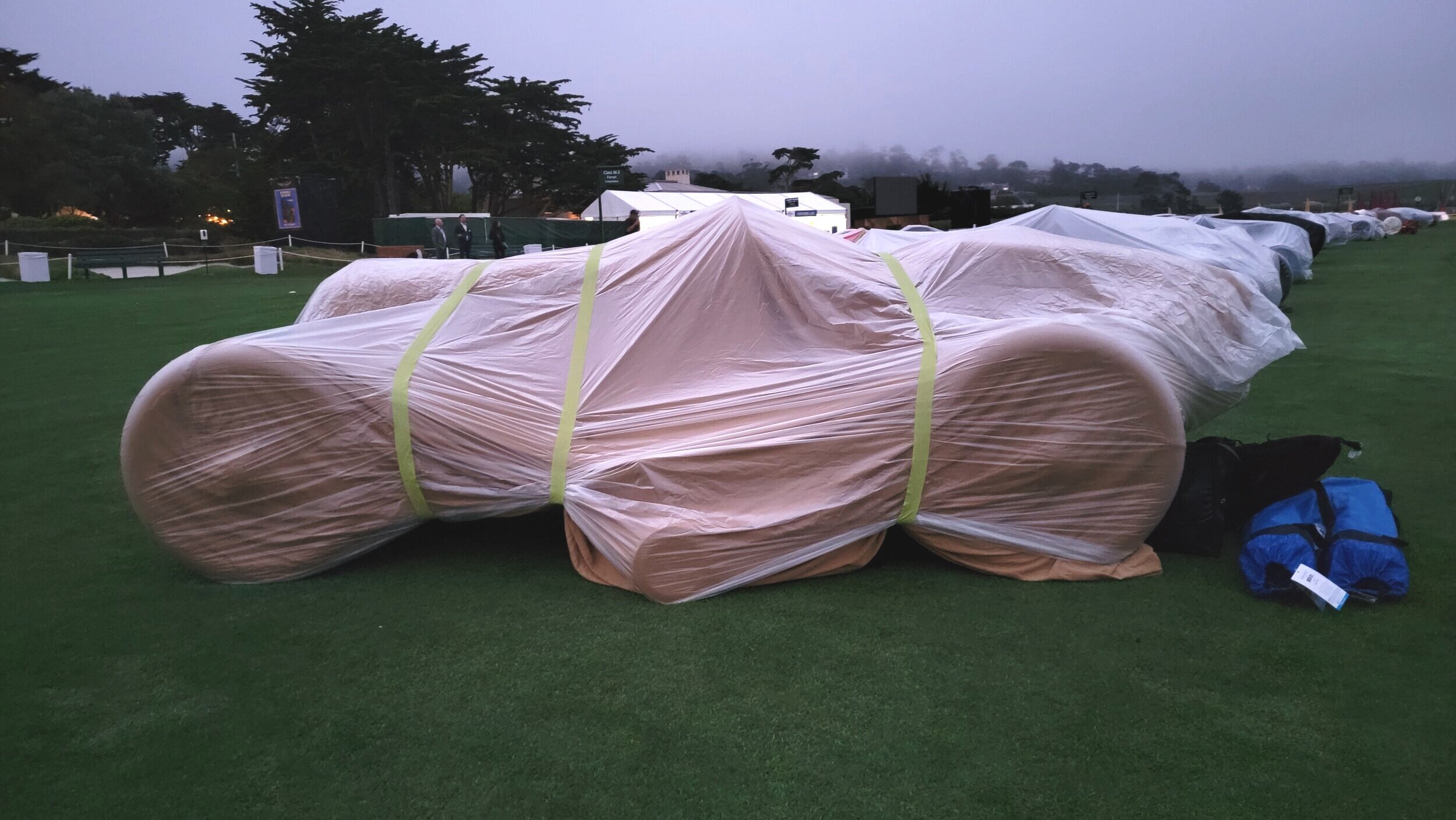
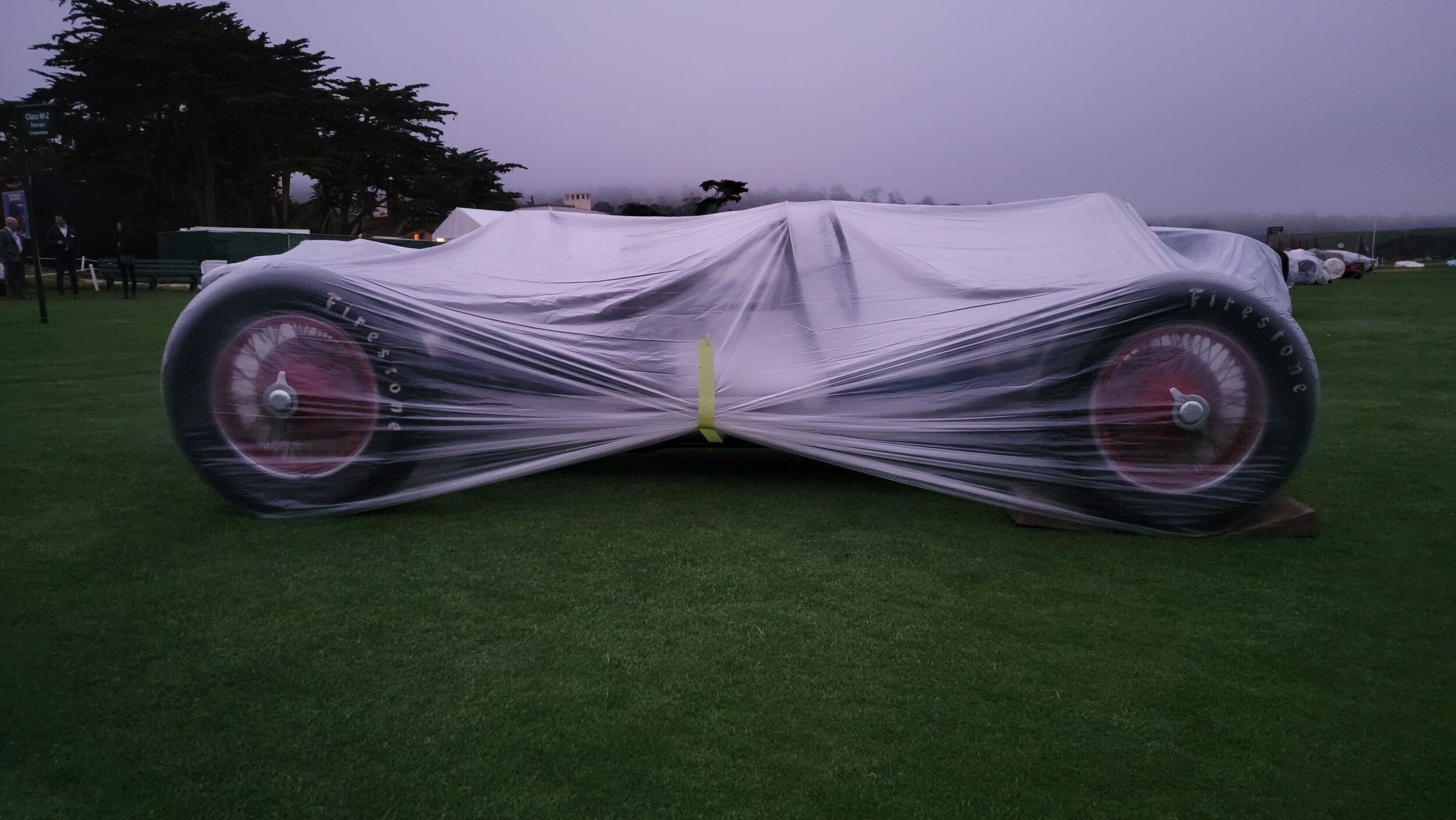
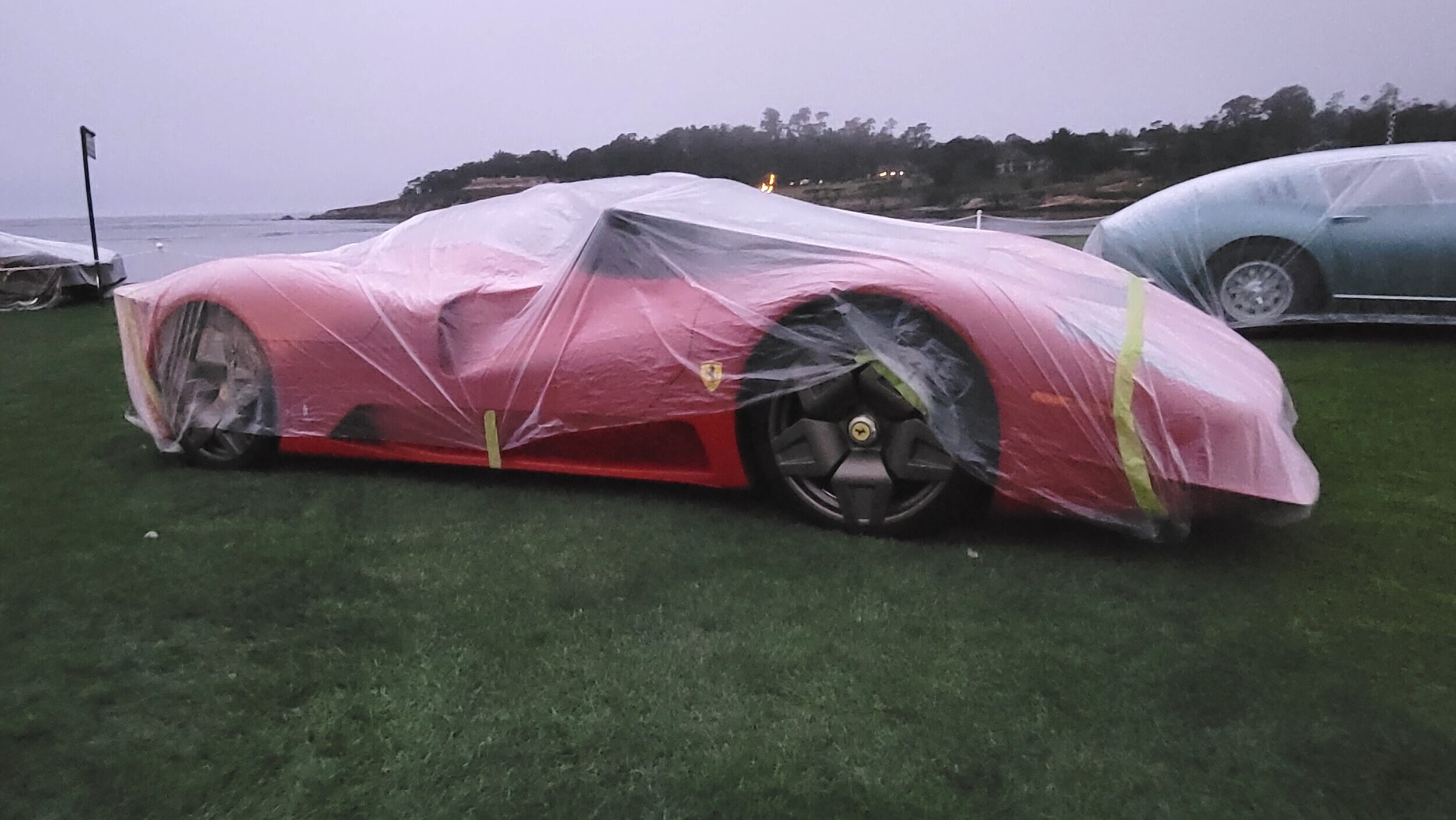
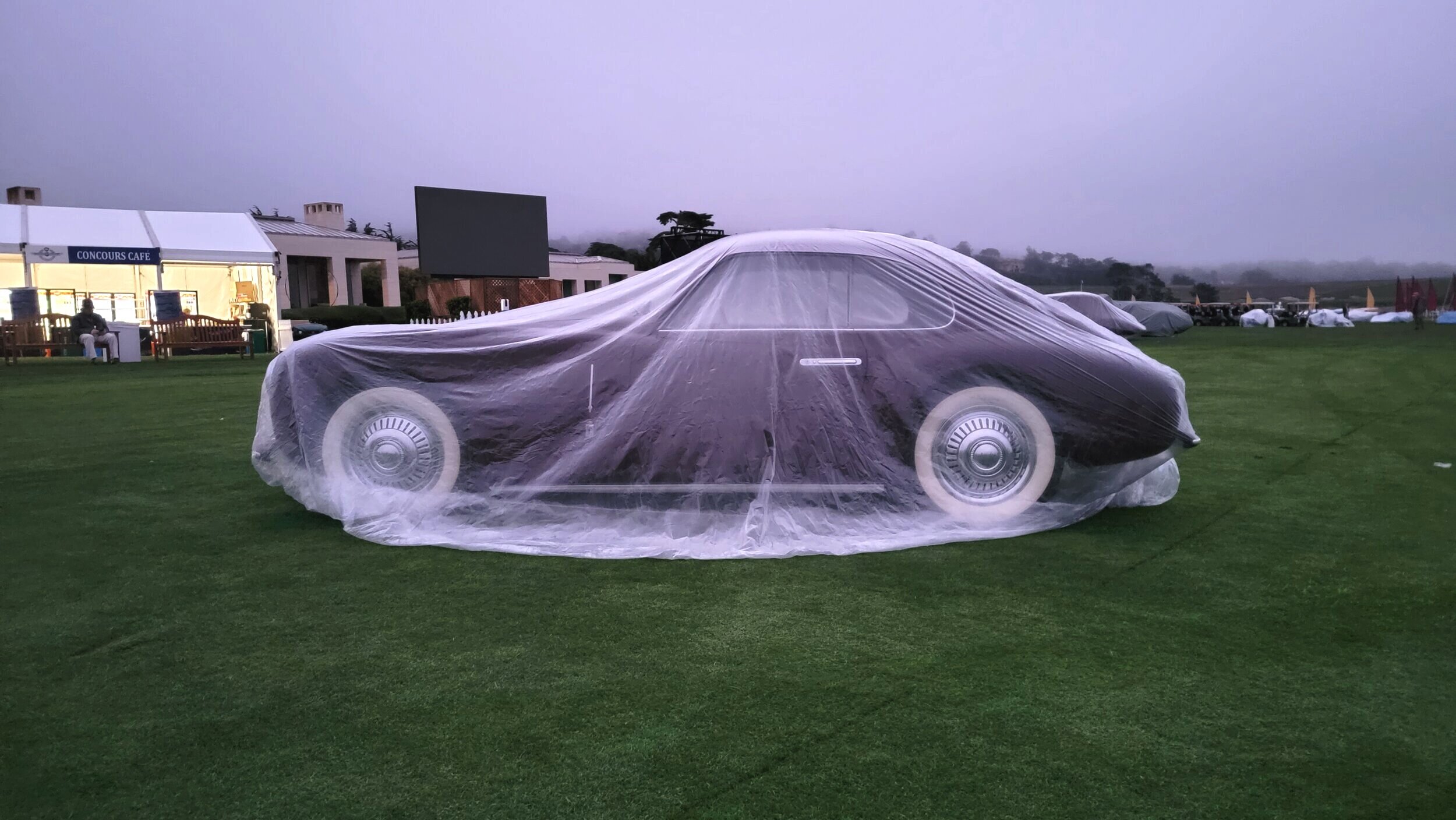
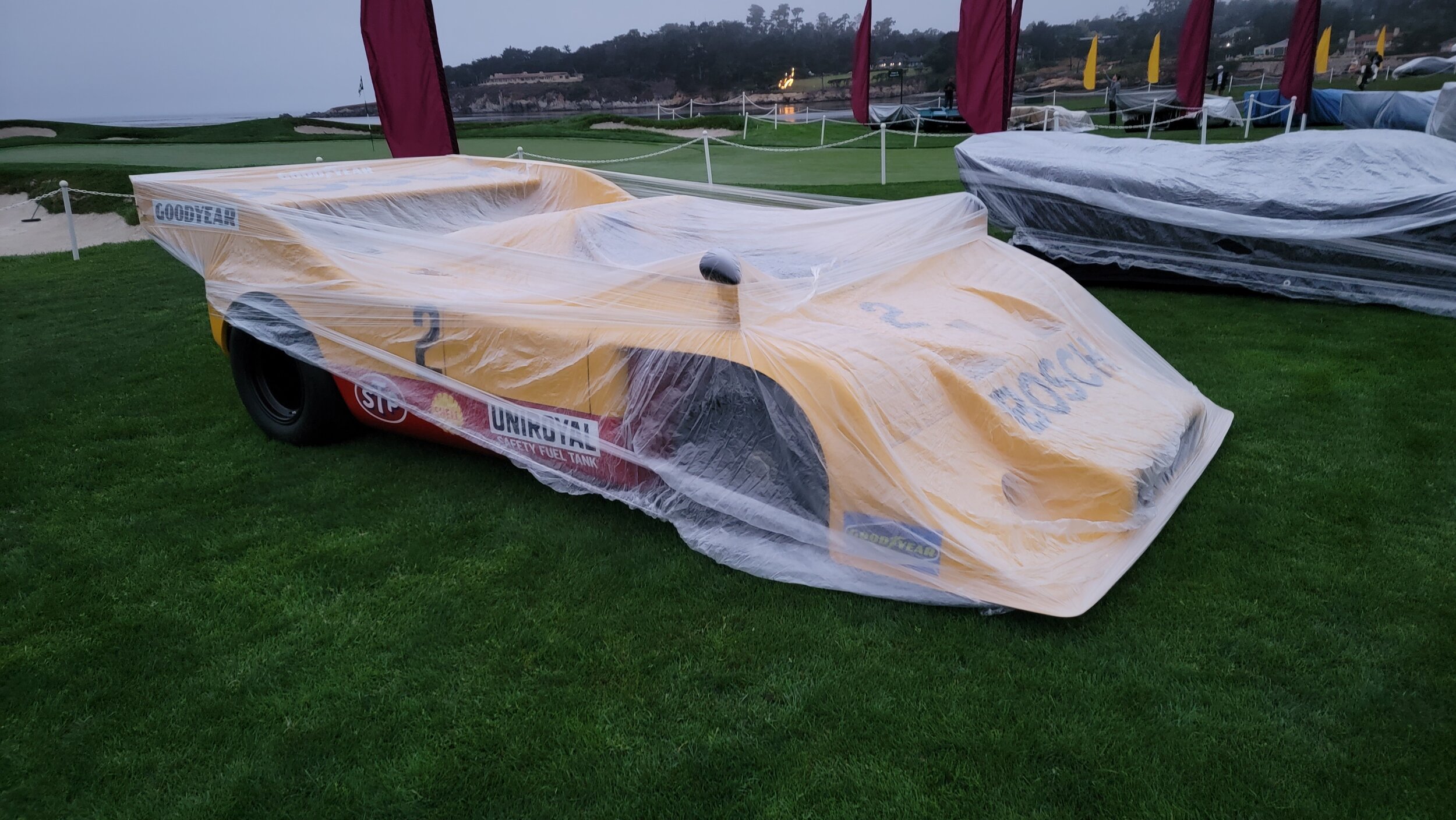
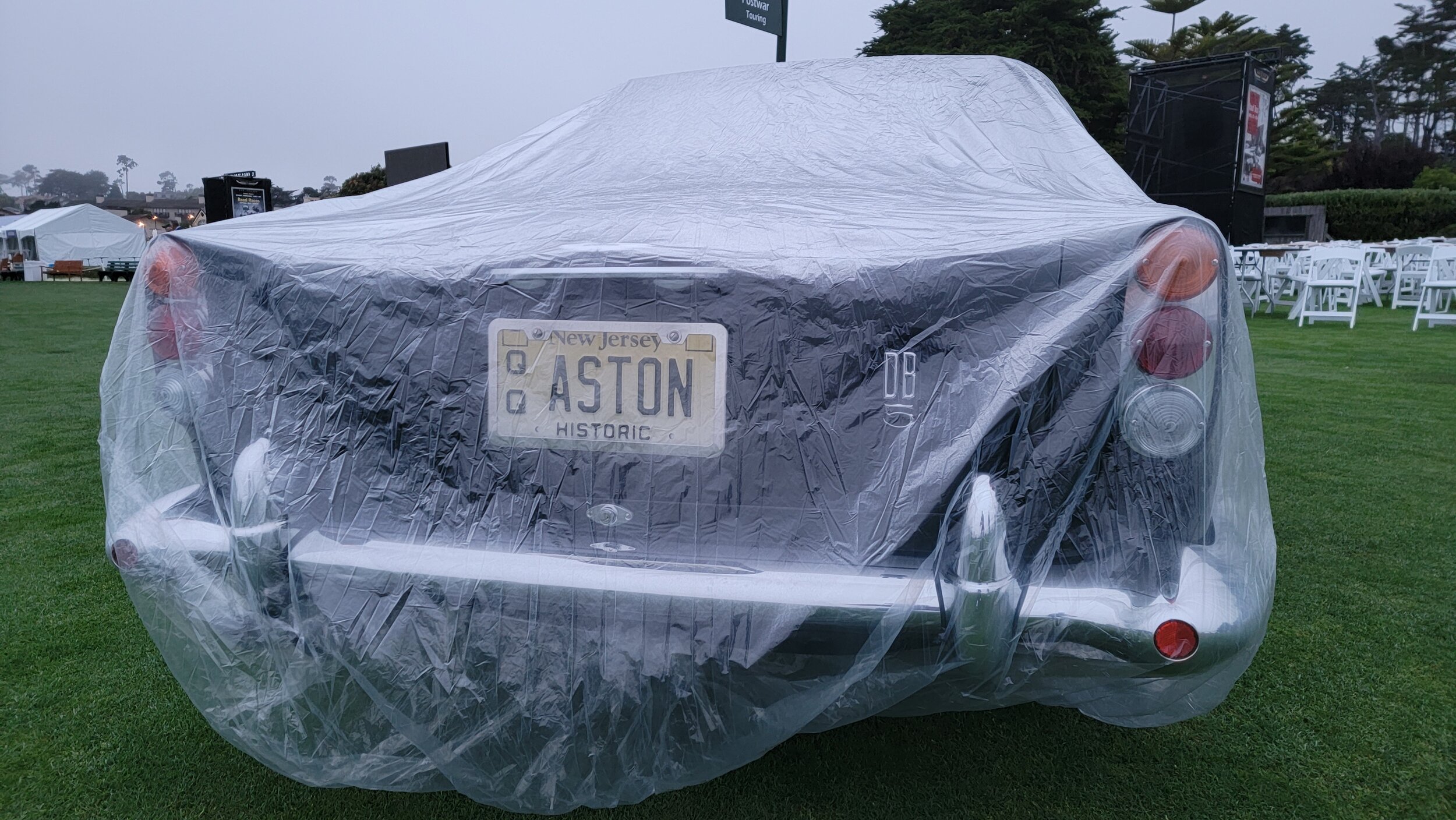
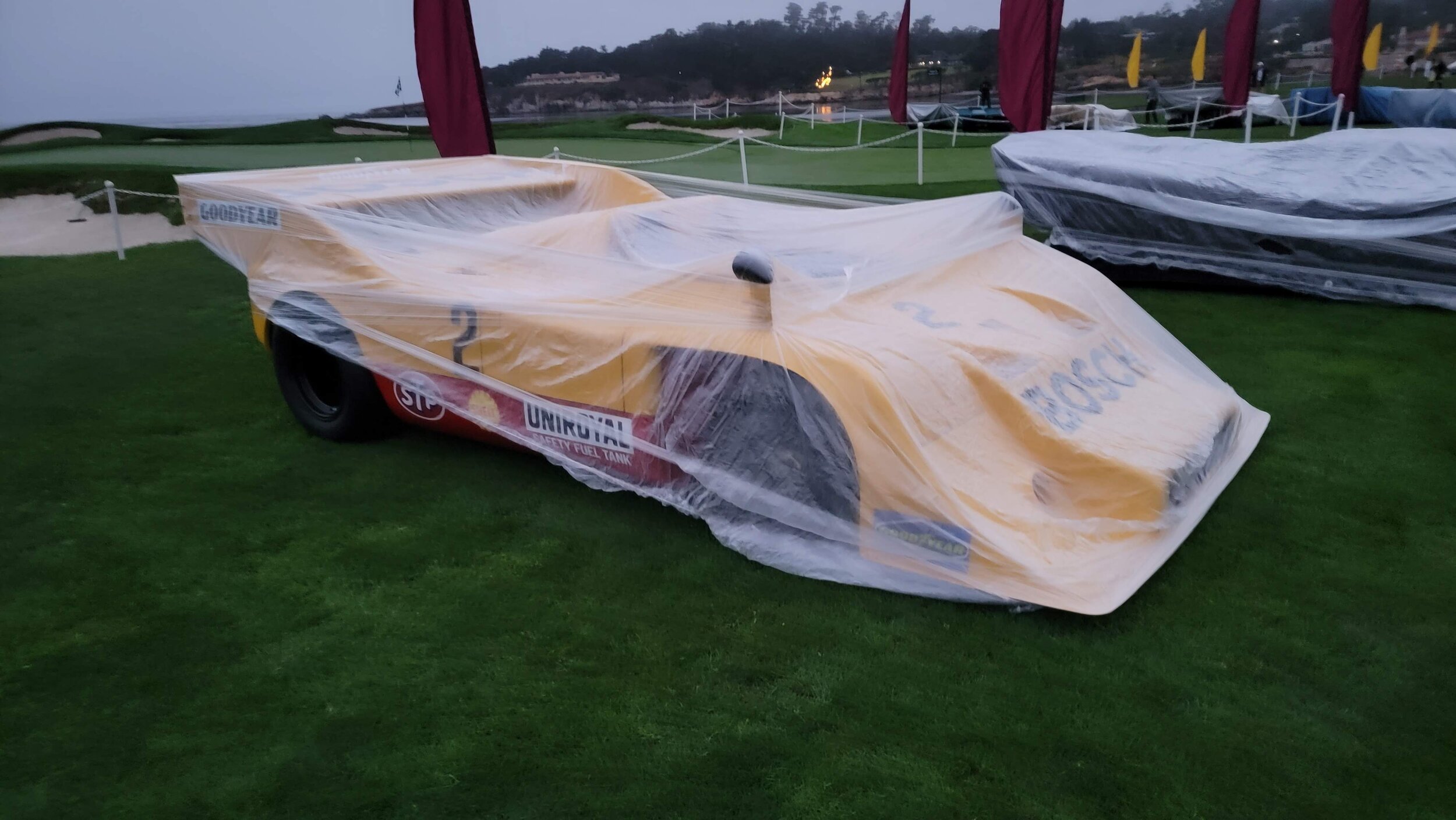
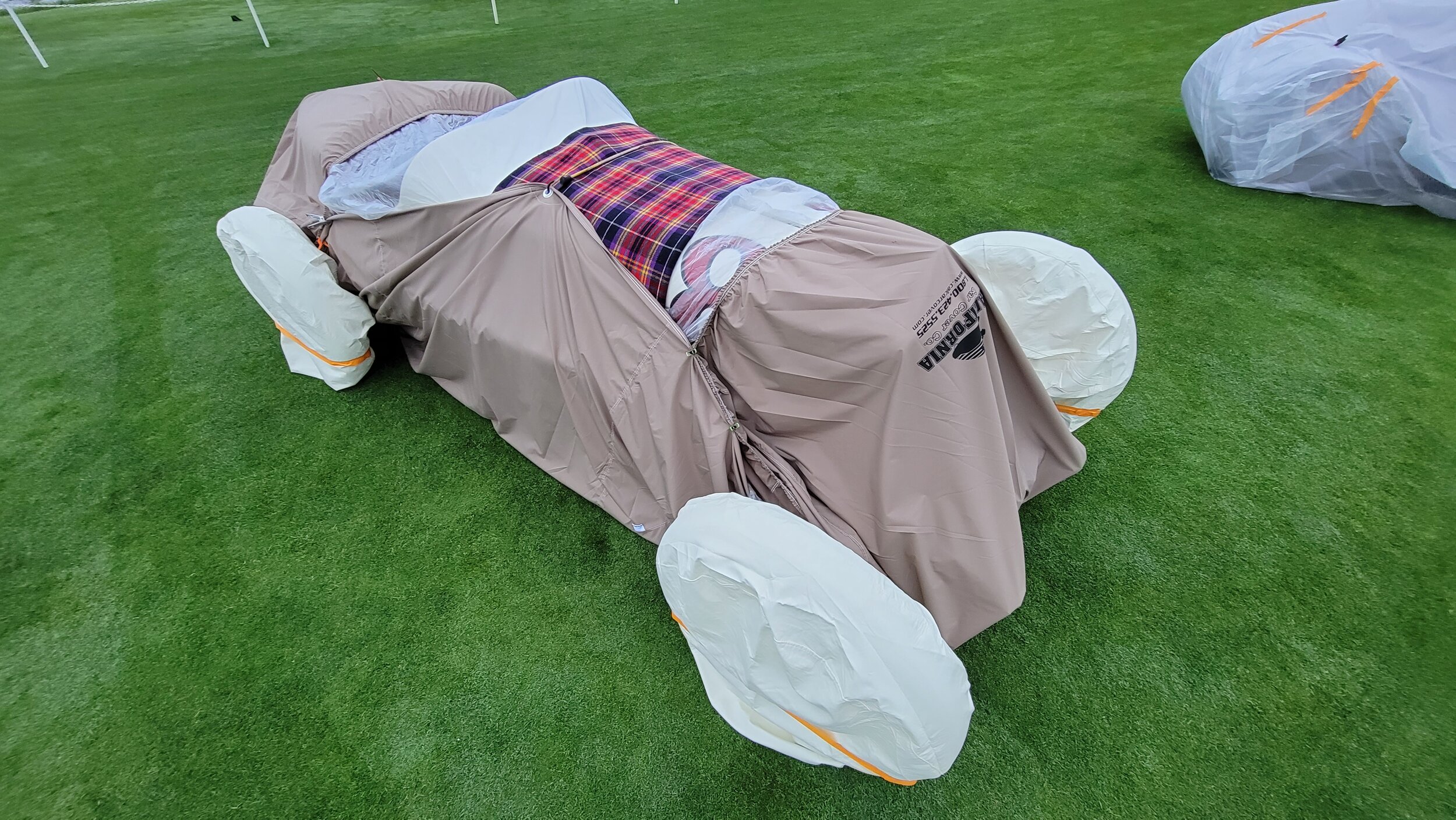
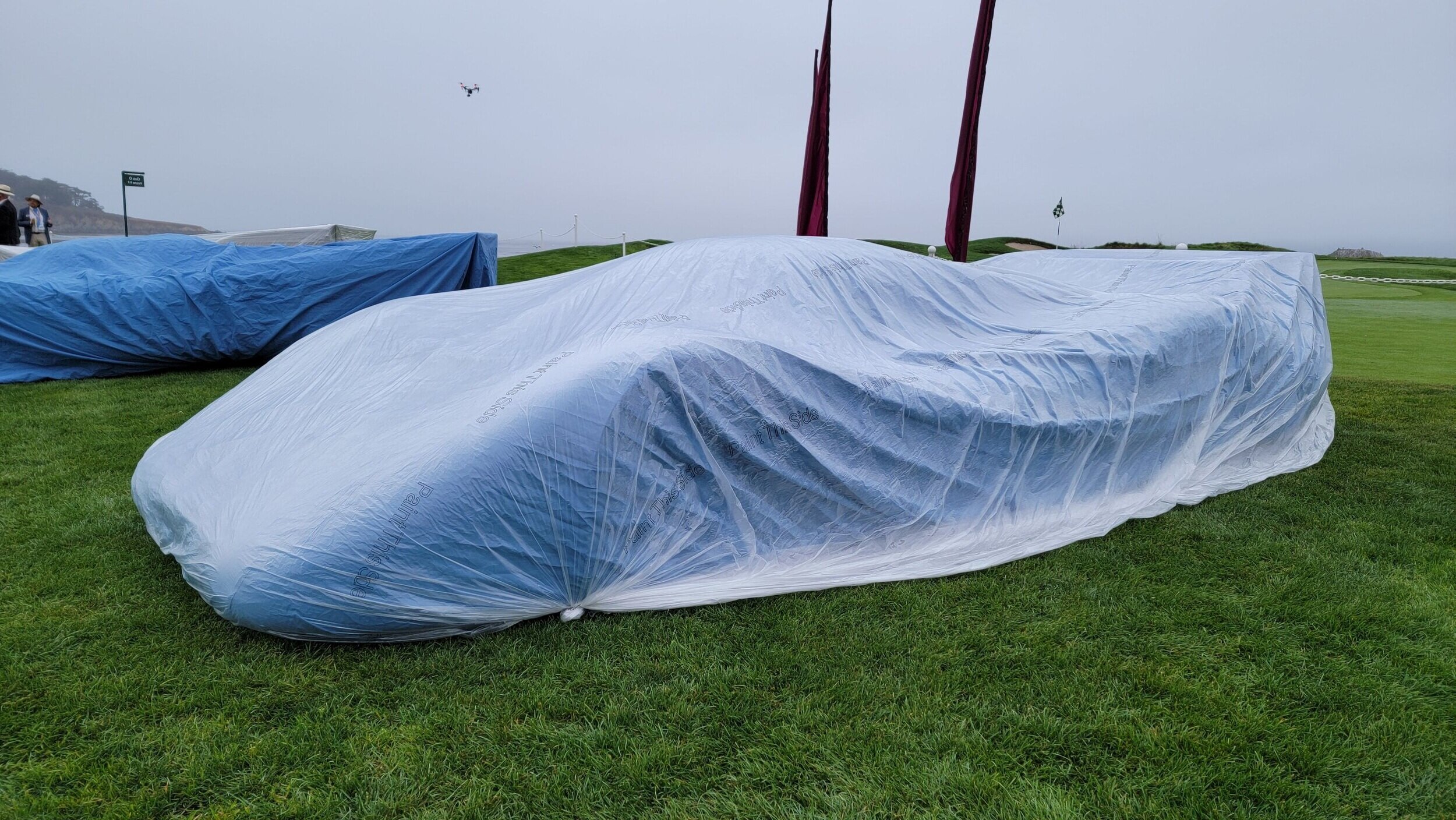
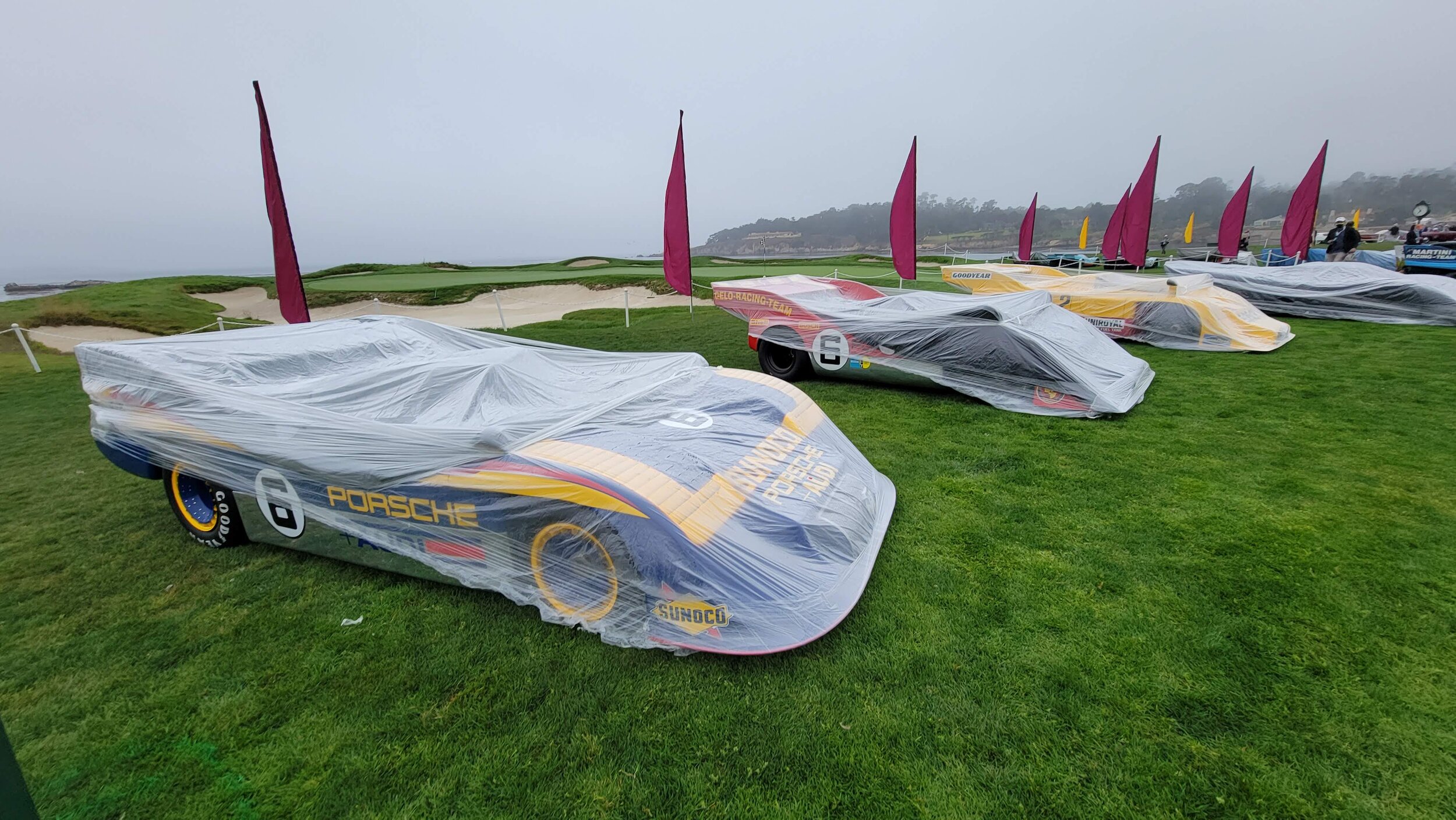
What’s on the Green?
Pebble Beach has a little something for everyone. Before we attended our first event several years ago, we assumed that most of the cars shown at Pebble were mostly old Rolls Royces, Duesenbergs and a few swoopy Delahayes, and the like. As you will see in the galleries and descriptions below, that’s not the case at all. In fact, there were 29 classes this year ranging from 100+ year old electric cars, pre and post war road and racing cars, former show winners, and even 4 different classes featuring the designs of Pininfarina. We would love to be able to condense all 29 classes into our report, but as you might imagine, that’s just not possible. It’s difficulty enough to see all of the cars, let alone photograph them and research them for this post. As such, we’ve chosen to highlight a few of our favorite classes to give you a good cross section of the talent on display.
Tribute to the Porsche 917
Thirteen, yes that’s right. Thirteen Porsche 917s gathered on the fairway in the largest gathering we’ve ever witnessed in one place. Not even our attendance two Rennsport Reunions properly prepared us for this. All the heavy hitters were there. The #22 917 K that won the 1971 24 Hours of Le Mans. The 1970 Hippie Car from the Simeone Collection we’ve seen in a million times on Instagram, and the 73’ Can-AM championship winning Penske 917 driven by Mark Donohue. The winning history of Porsche and the 917 breed was awe-inspiring. It was hard to turn away with the constant thought, or be it a questions of whether we would ever see this many 917s in one place again. A clear lesson on enjoying the moment.
The 1971 Le Mans winning Porsche 917K in Martini Livery, part of the Miles Collier Collection at Revs Institute won the class when the day was done.
La Carrera Panamericana
Kudos to the organizers of this years event for adding a class of cars that participated in the original incarnation of the fabled and deadly Mexican road race that was run from 1950 to 1954 to celebrate the completion of the roughly 2,100 mile Pan-American Highway. This race, and its associated lore have captivated our imaginations for years, since first reading about it in Burt Levy’s historic fiction account of the event, Montezuma’s Ferrari . The Carrera is one third of the triple crown (see also: Mille Miglia and Targa Florio) of almost mythical road races that were discontinued due to the potential for death and injury to both drivers and spectators, as well as excessive expense and monumental logistical challenges. The list of participants over the 5 years includes Phill Hill, Alberto Ascari, Bobby Unser, John Fitch, Carroll Shelby and Juan Manuel Fangio. As you can see from the images below, the aforementioned drivers piloted some of the most fantastical and iconic cars of the era.
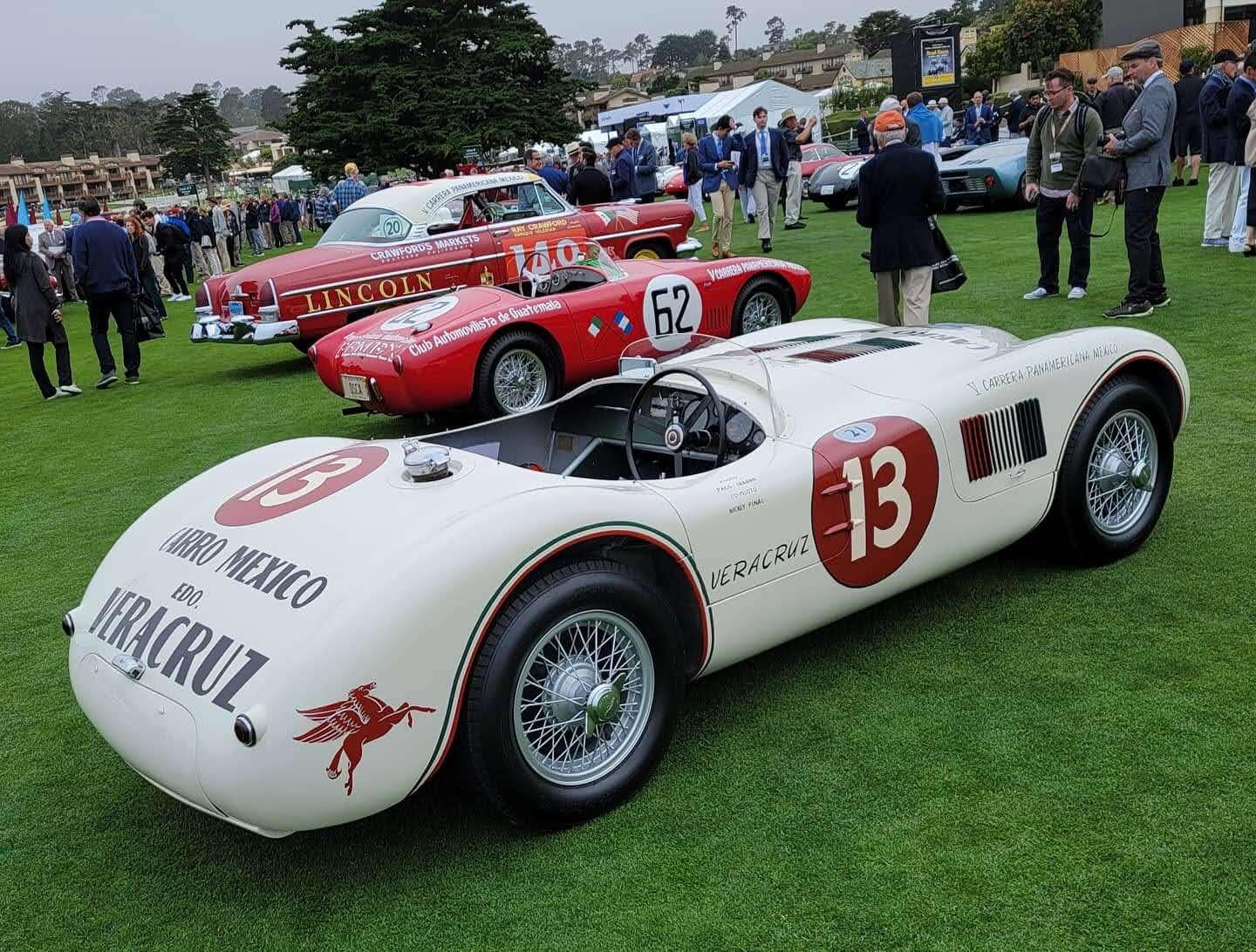
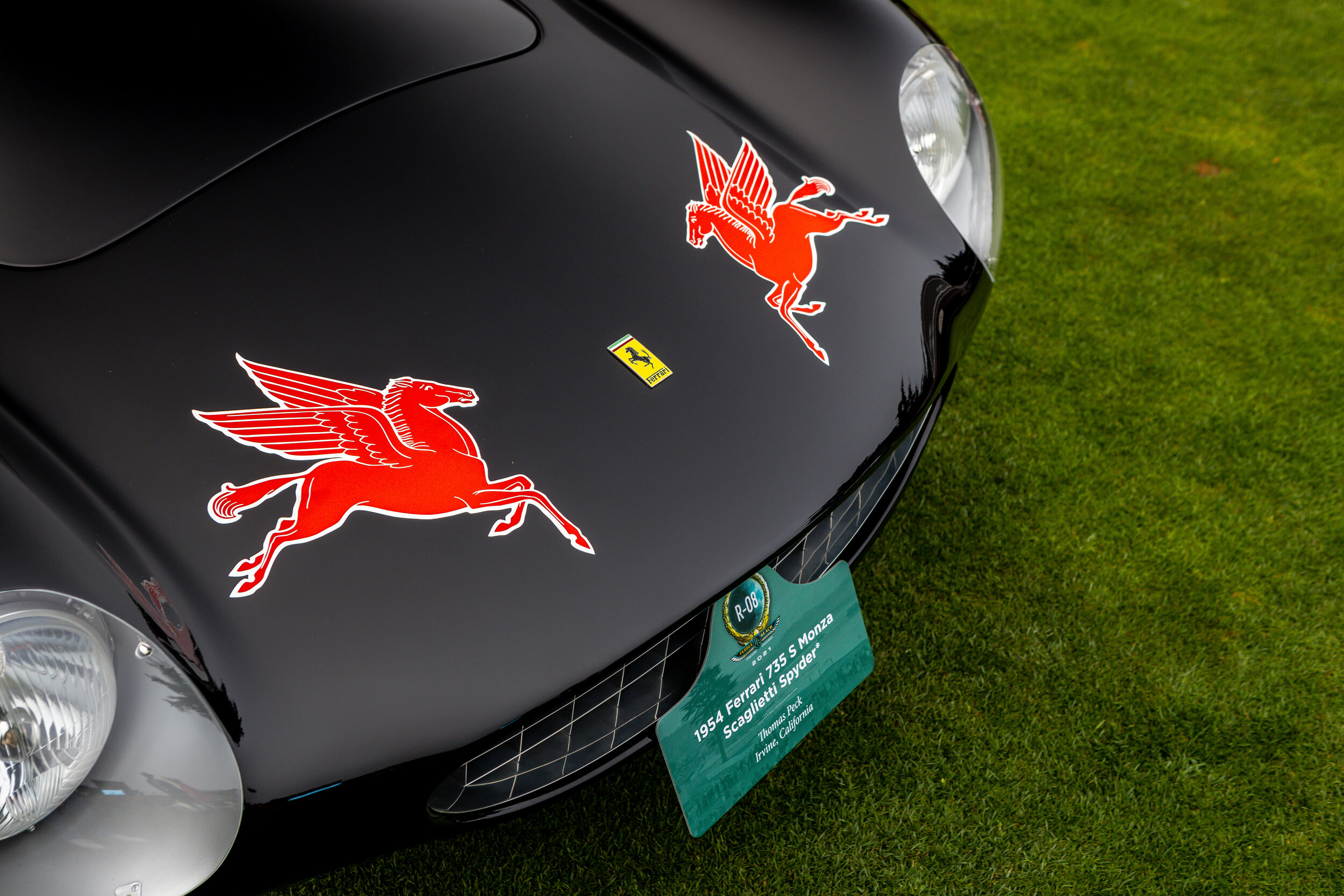
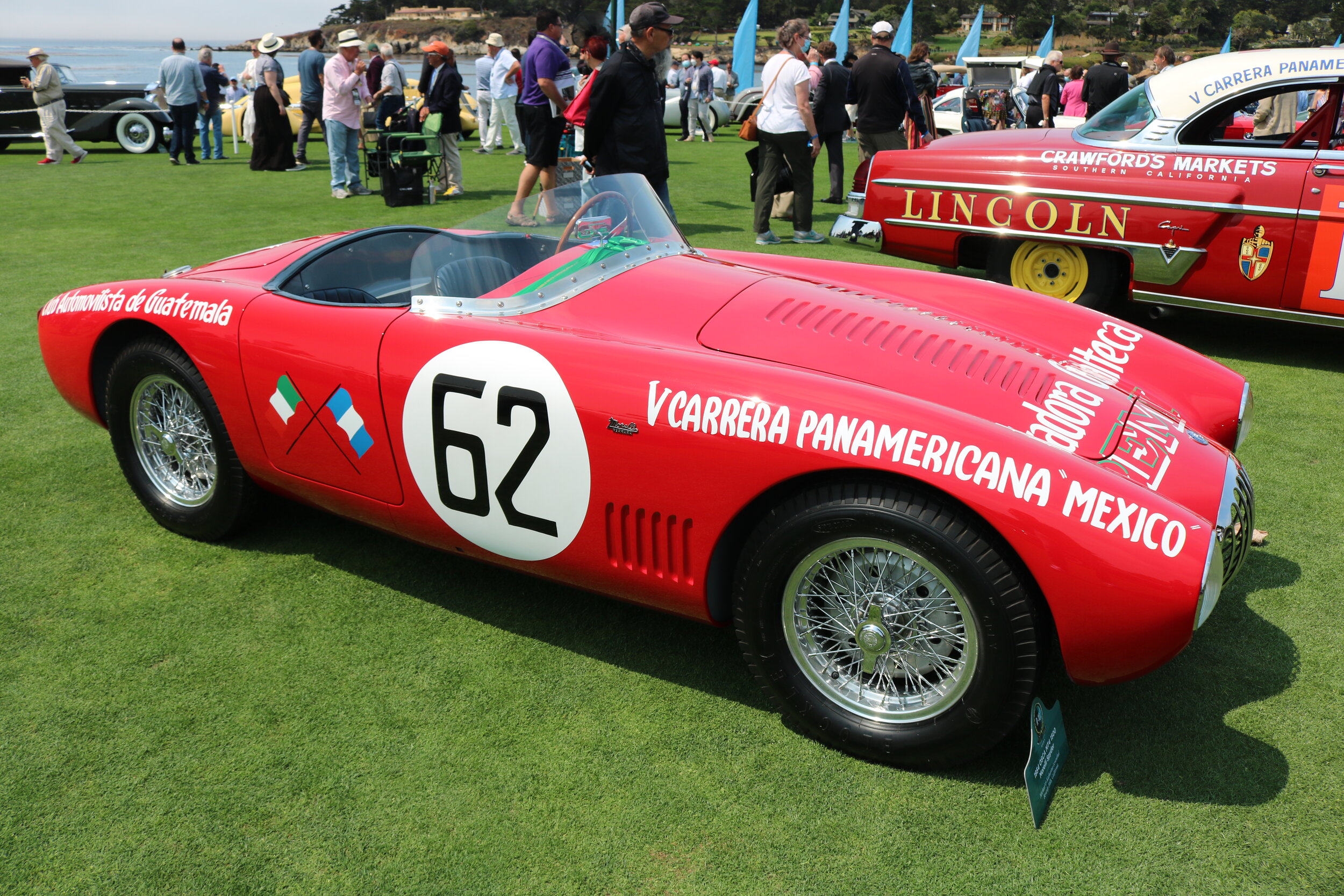
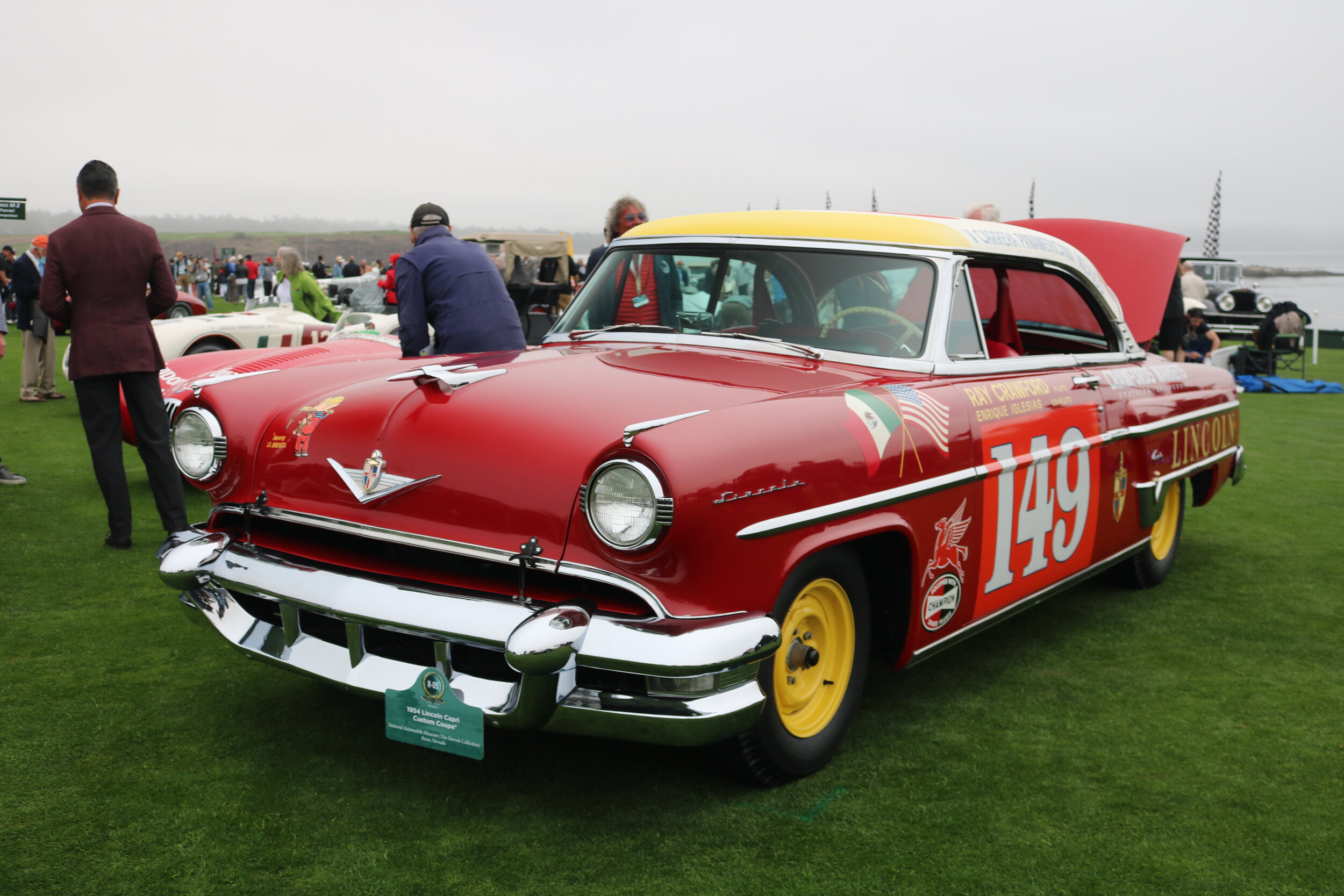
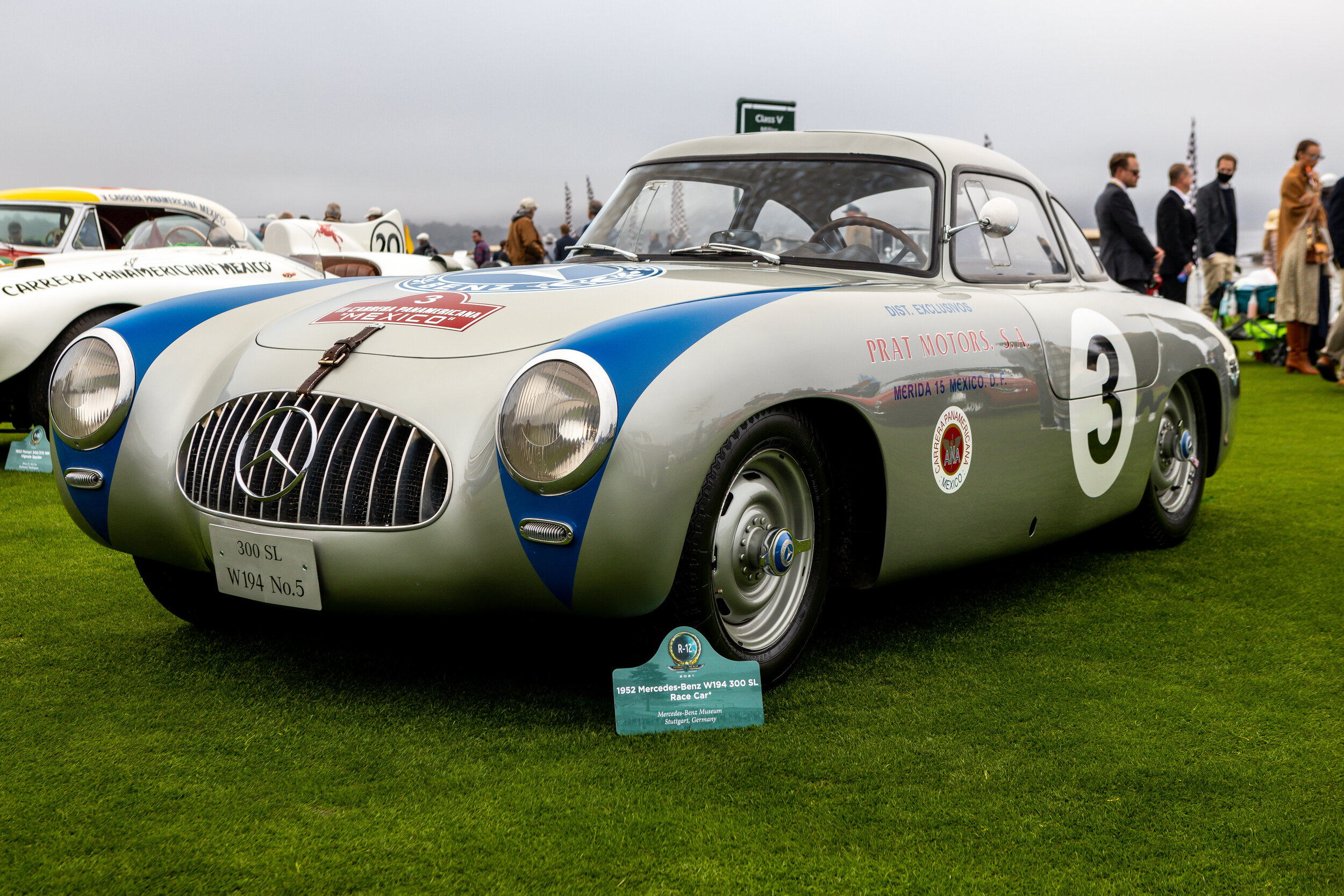

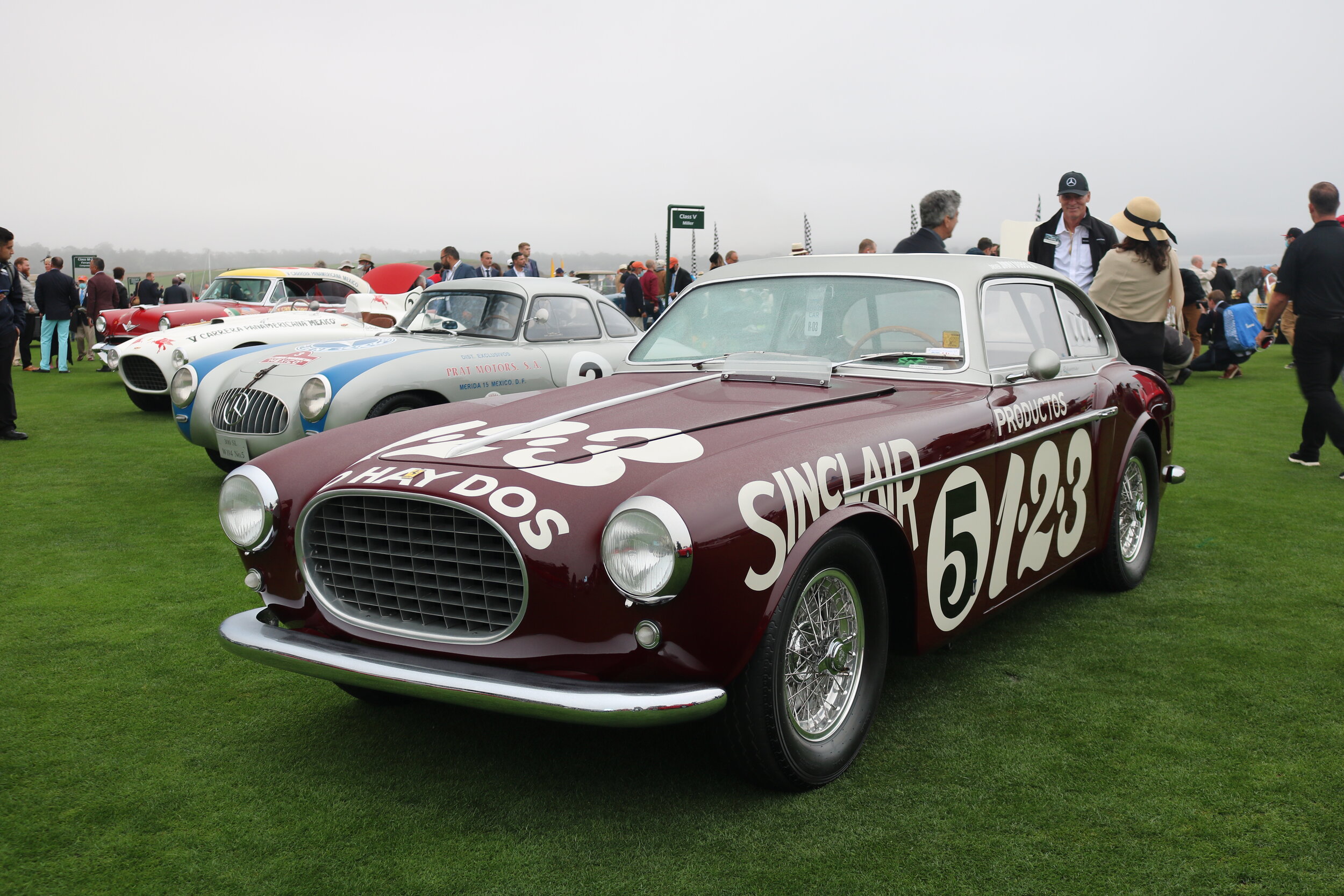
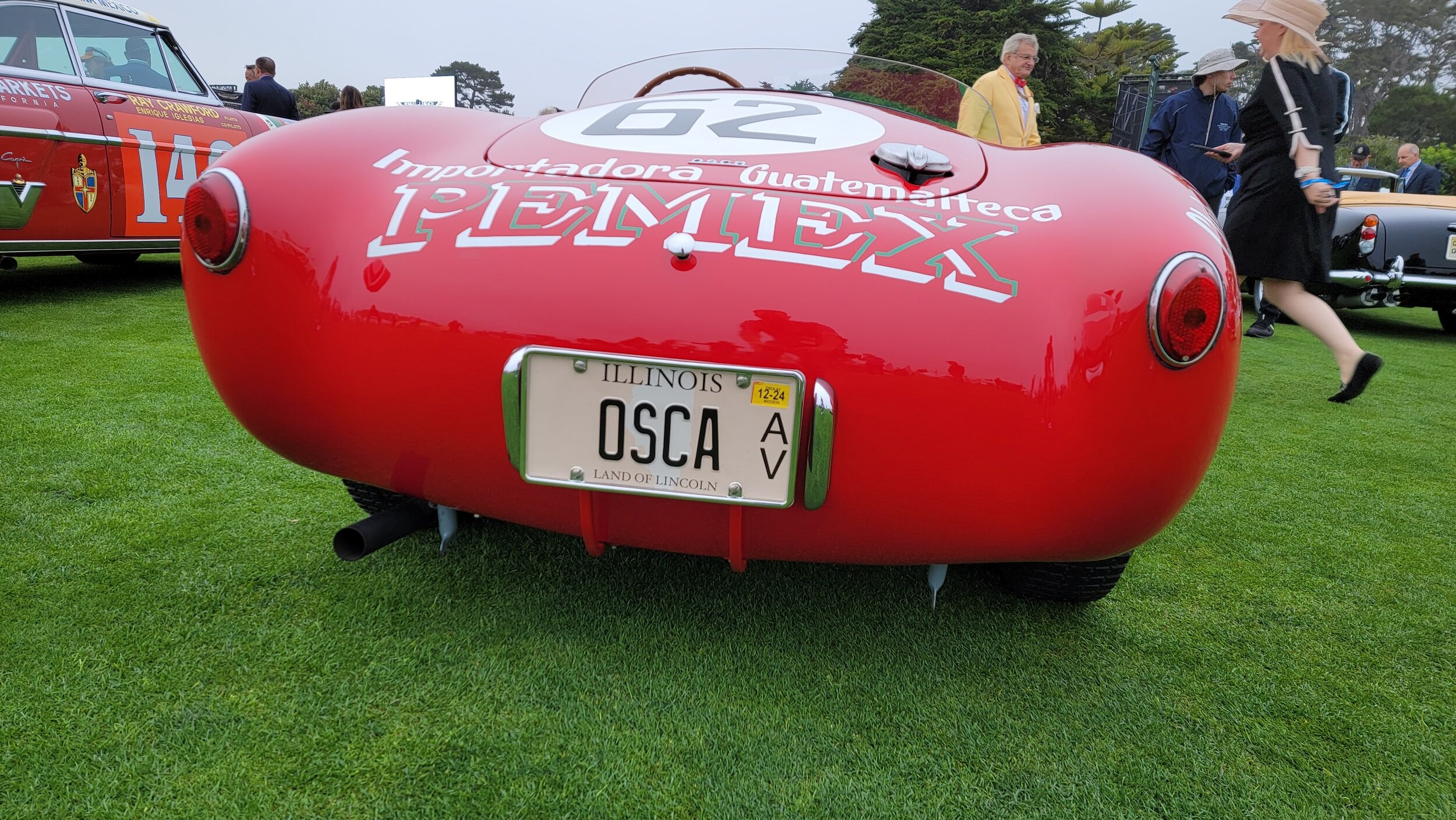
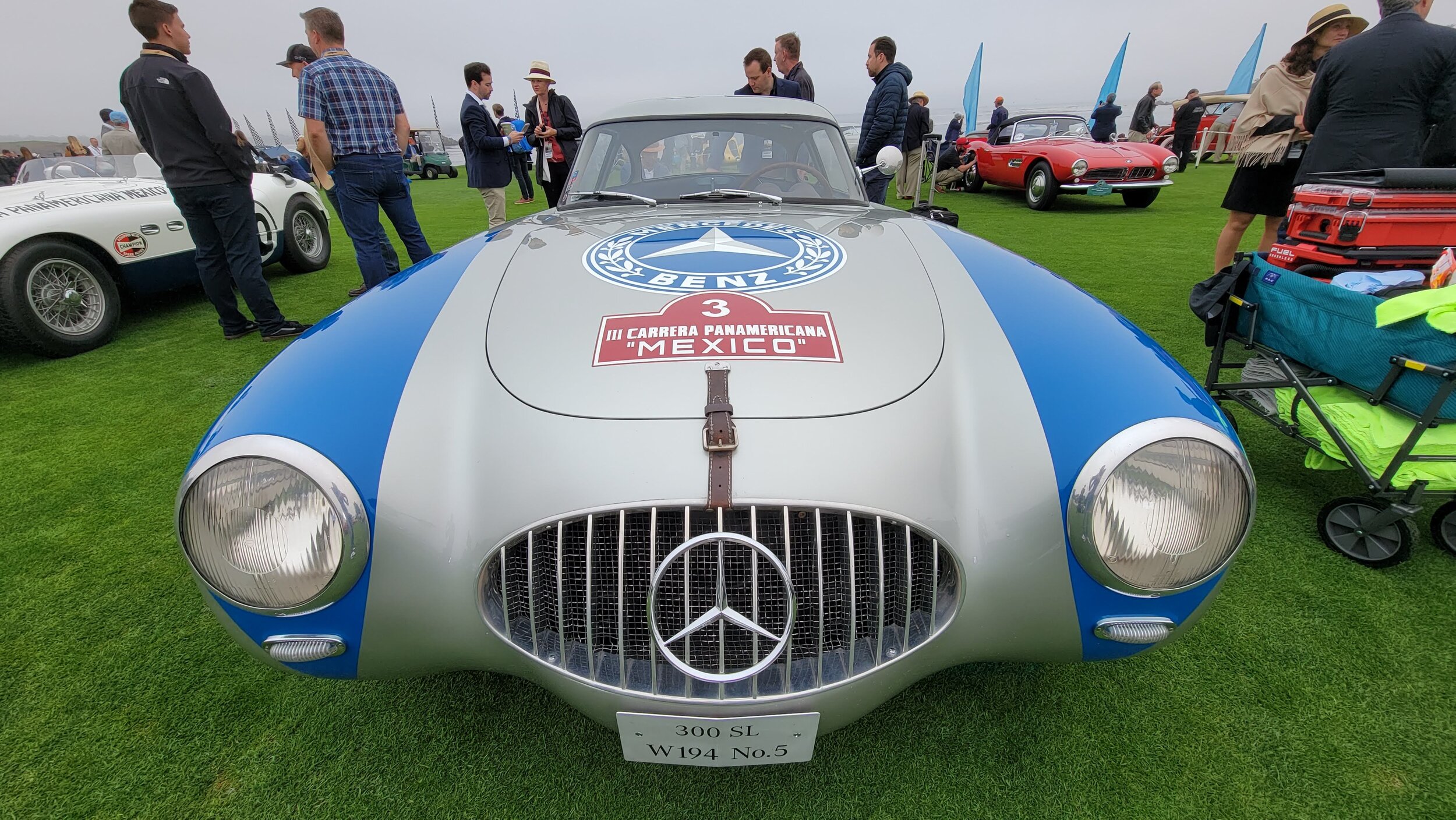
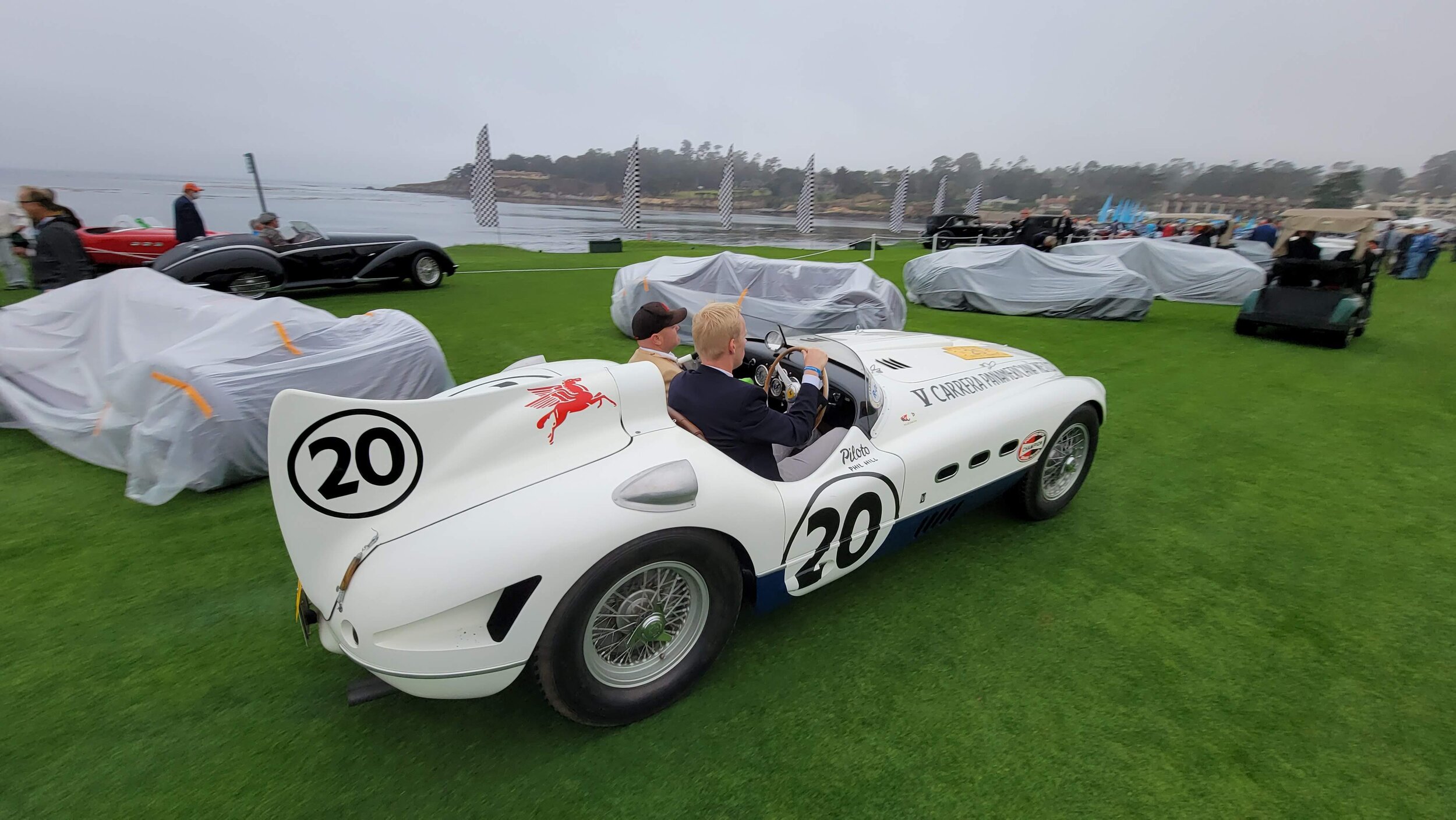
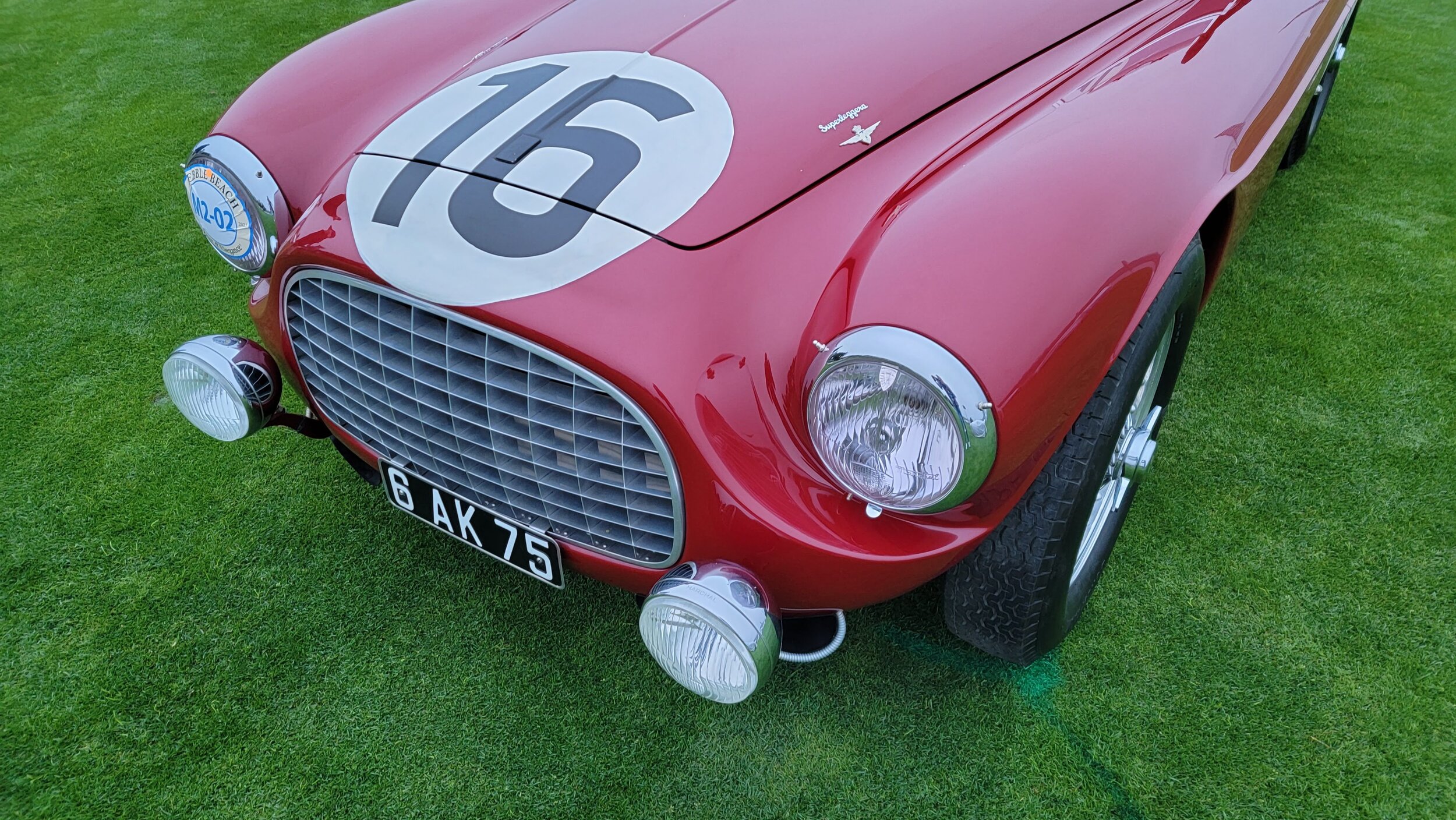
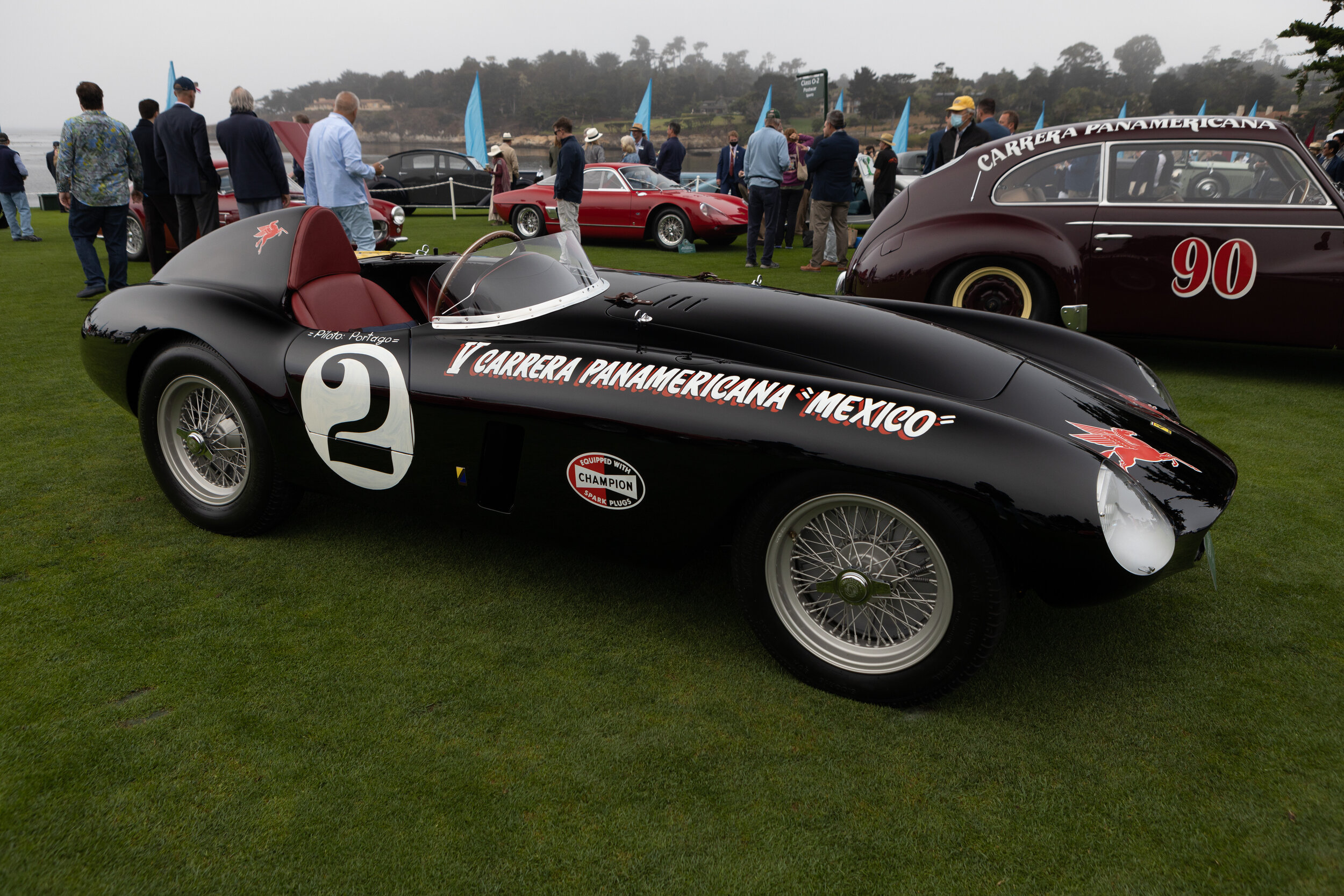
The early electrics
Eat your heart out Tesla fans! Not only were there electric cars before Elon stormed onto the stage but there were electric vehicles on the road long before your favorite internal combustion vehicle brands were incorporated. Eight of these early electric vehicles silently, and pretty slowly, rolled on to the 18th fairway to dazzle us all and take the limelight away from the dinosaur burners for a change. The entries in this class ranged from a 125-year-old, 1896 Riker Electric Roadster to a 1922 Milburn Light Electric 27L Carriage. It’s pretty staggering to think that the newest car in this class was just a hair under a century old. The 1896 Riker Prototype was driven in and displayed by Richard Riker the grandson of Andrew Riker who built the car 125 years ago in Brooklyn, New York. The elder Riker was instrumental in moving society toward the automobile as he was the co-founder of the Society of Automotive Engineers and later worked on designing internal combustion engines.
The most impressive and probably most discussed car of the entire event was the 1901 Columbia Mk. XXXI Victoria Phaeton. The car itself was quite grand, but the real showstopper was the original home charger it was plugged into. The whole scene screamed steampunk and sci-fi but there was no fiction about it, this thing was all science. It really provided a great opportunity to pause and reflect on the history and future of electric transportation.
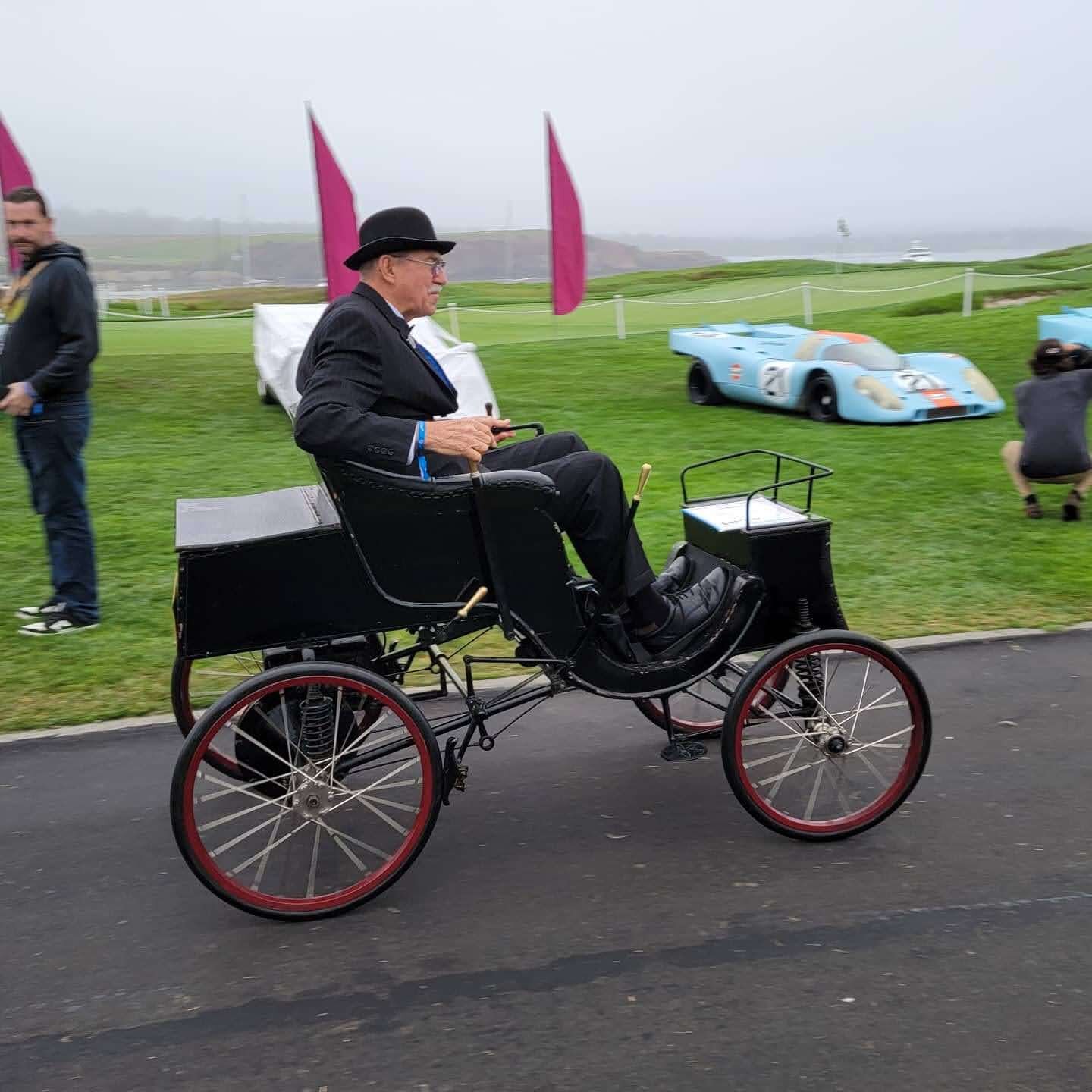
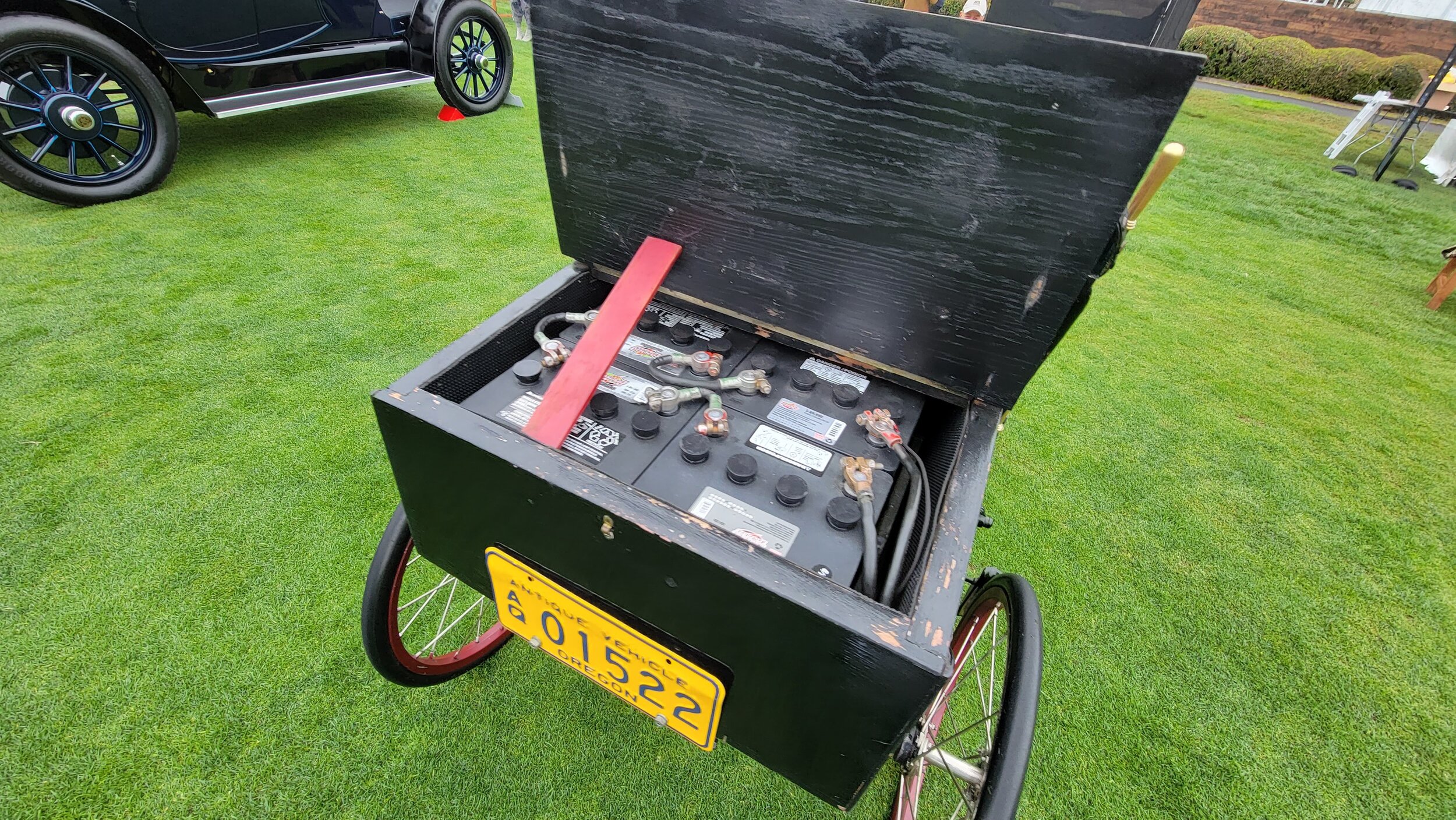

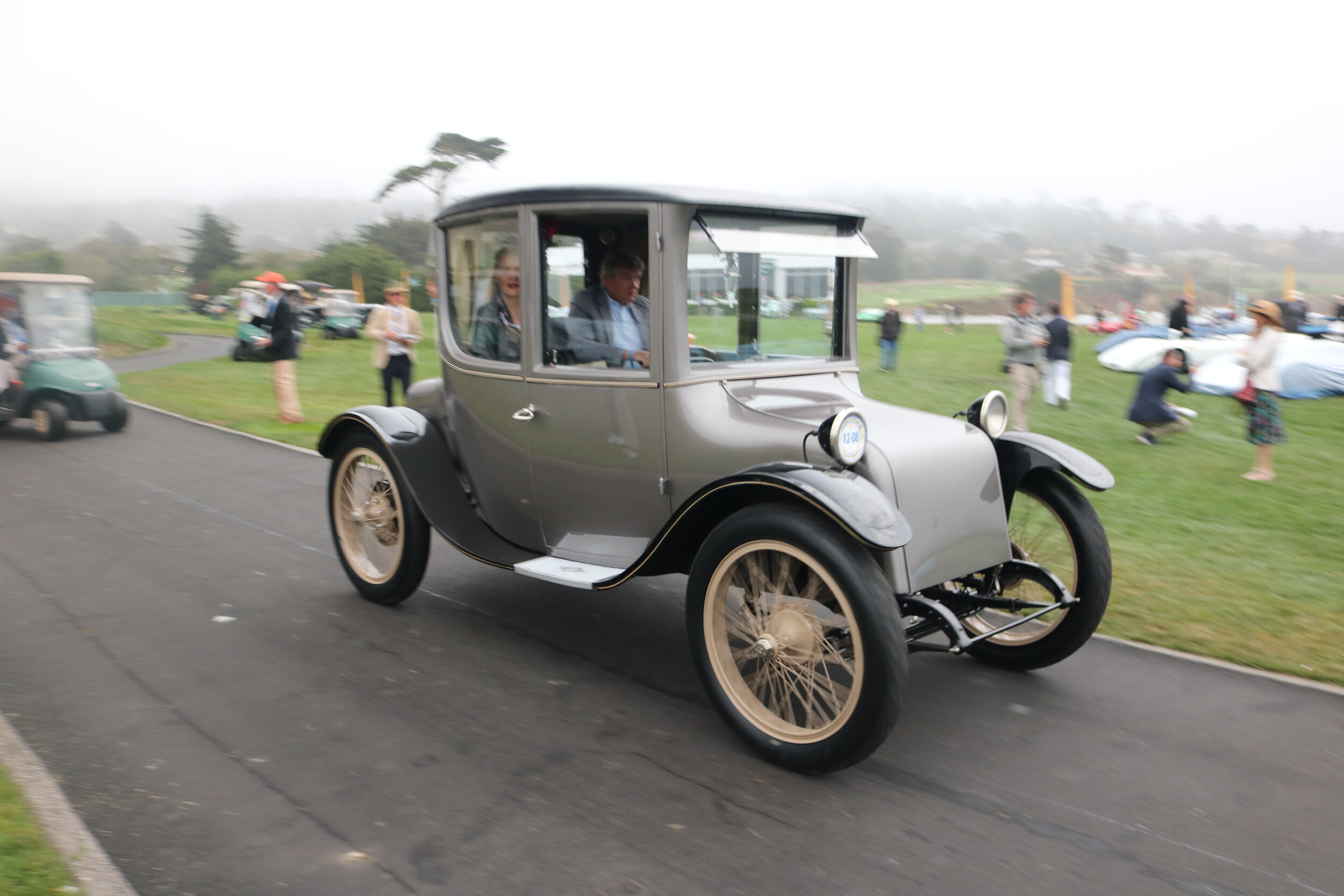
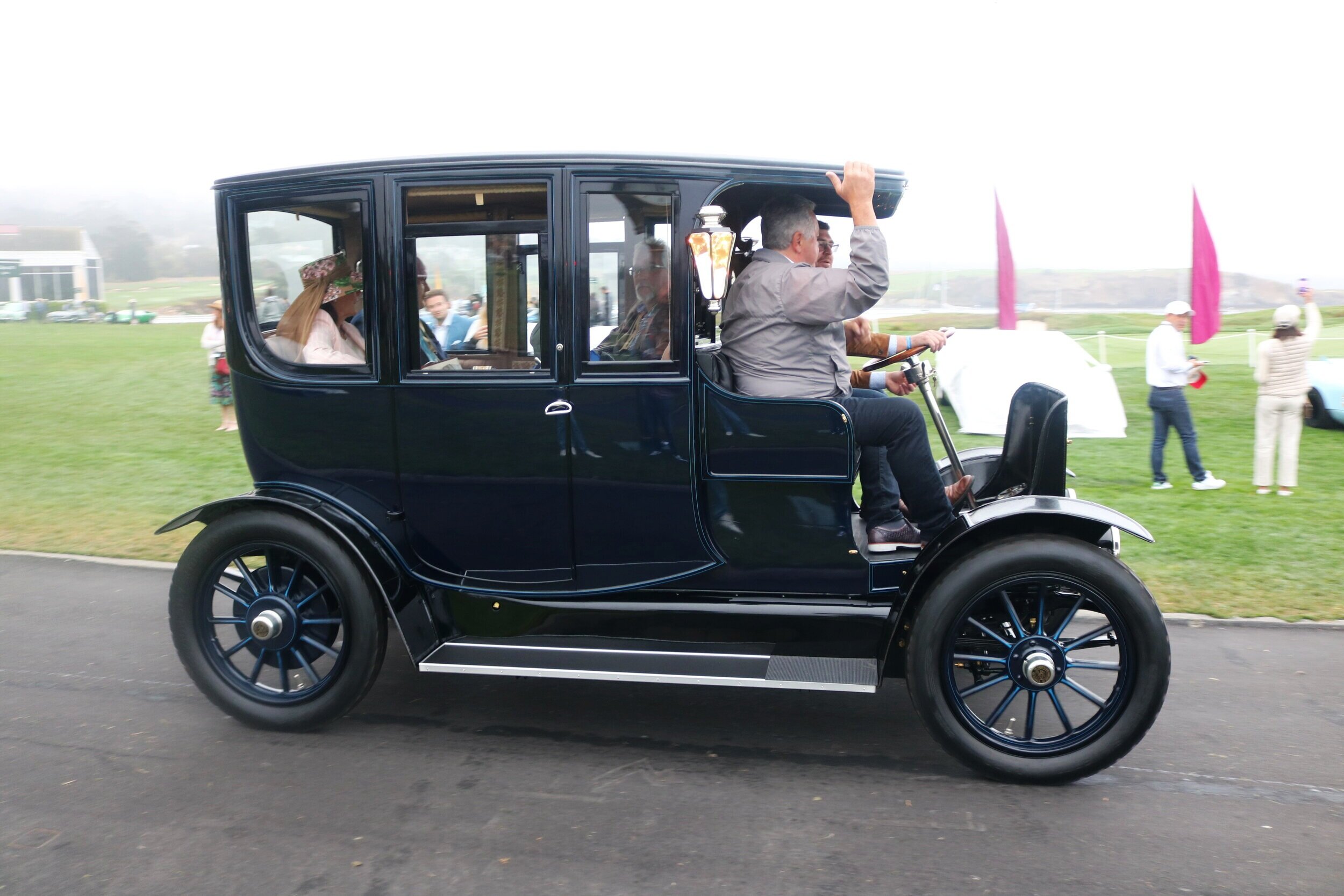
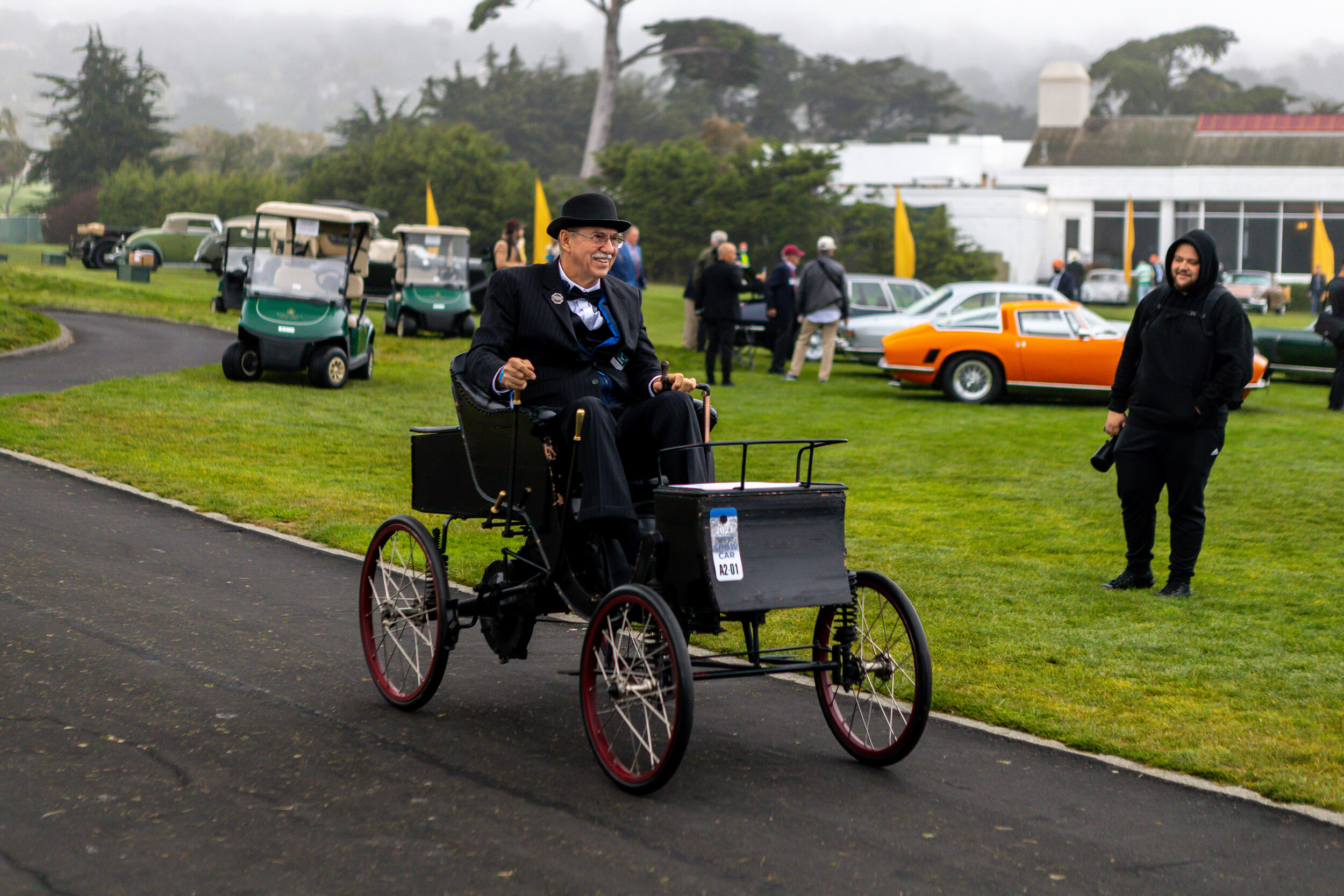
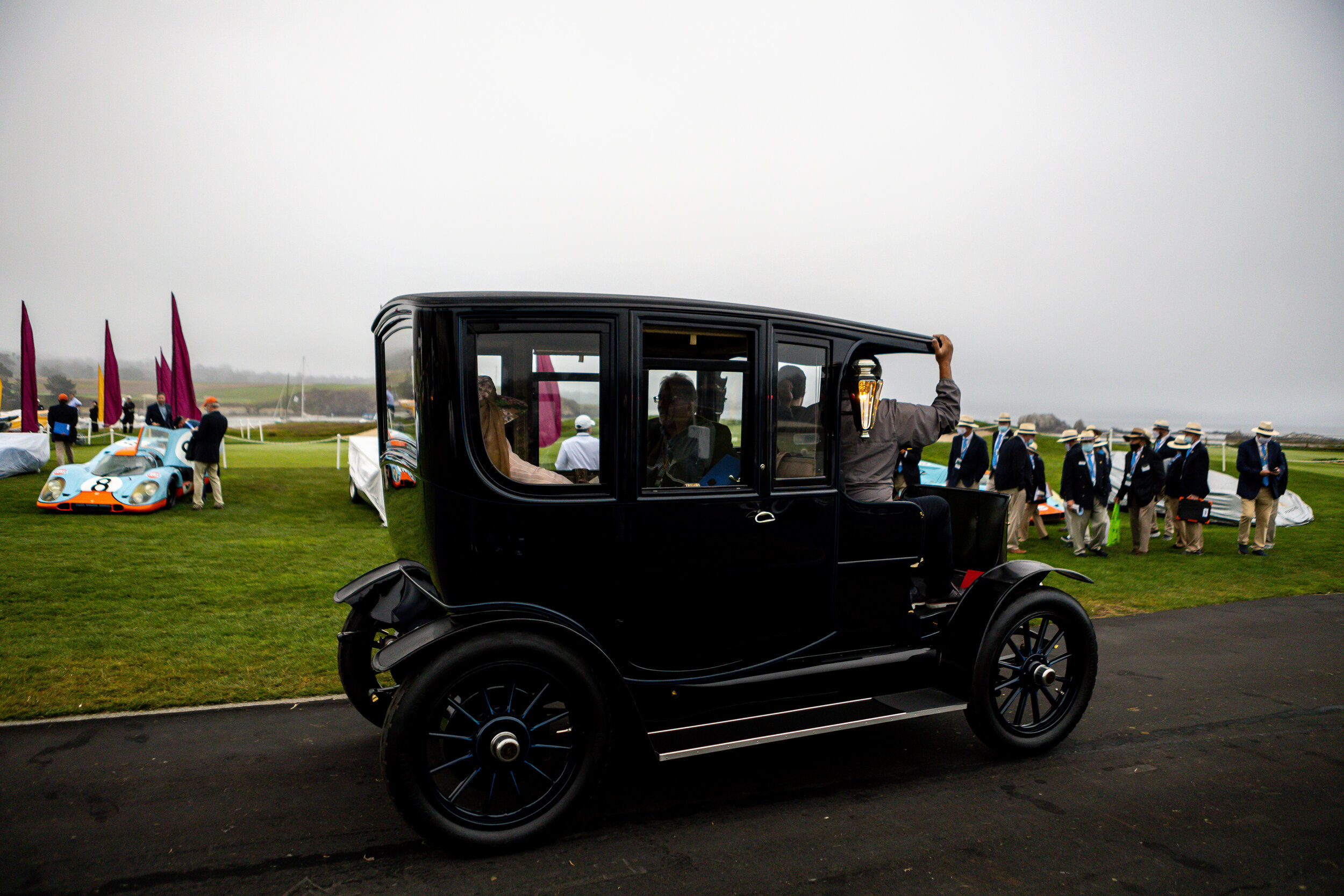
Last, but not least, the Lambos!
We both had the obligatory Countach posters on our walls during our formative years, and we’d still have them up if our wives would let us. They don’t really need an introduction, they look like they’re from outer space, they’re loud and colorful and as impractical as any car ever made. Nothing about them is necessary, they’re temperamental, superfluous and exclusive and actually pretty ridiculous if you think about it. They also happen to be amazing and spectacular and now they’ve also been around for a half-century. Even now, among the latest and most advanced supercars and hypercars at your local cars and coffee event, the arrival of a Countach will still break necks. The Lamborghini Countach 50th Anniversary class featured 9 spectacular examples of the Countach including a 1973 LP 400 prototype (the green one) that happens to be the oldest surviving prototype of the line.
The swag(ger)
The concours is all about the cars, but the cars always have a little competition from the crowd, As we always like to feature, this event is more or less an “event of the season,” and most attendees like to up their swag and swagger for the occasion…us included. Whether shoes, hats, dresses or other accoutrement, this crowd really brings the proverbial “it.” Please enjoy this gallery of the sartorial (and other) splendor of the Pebble Beach Concours.
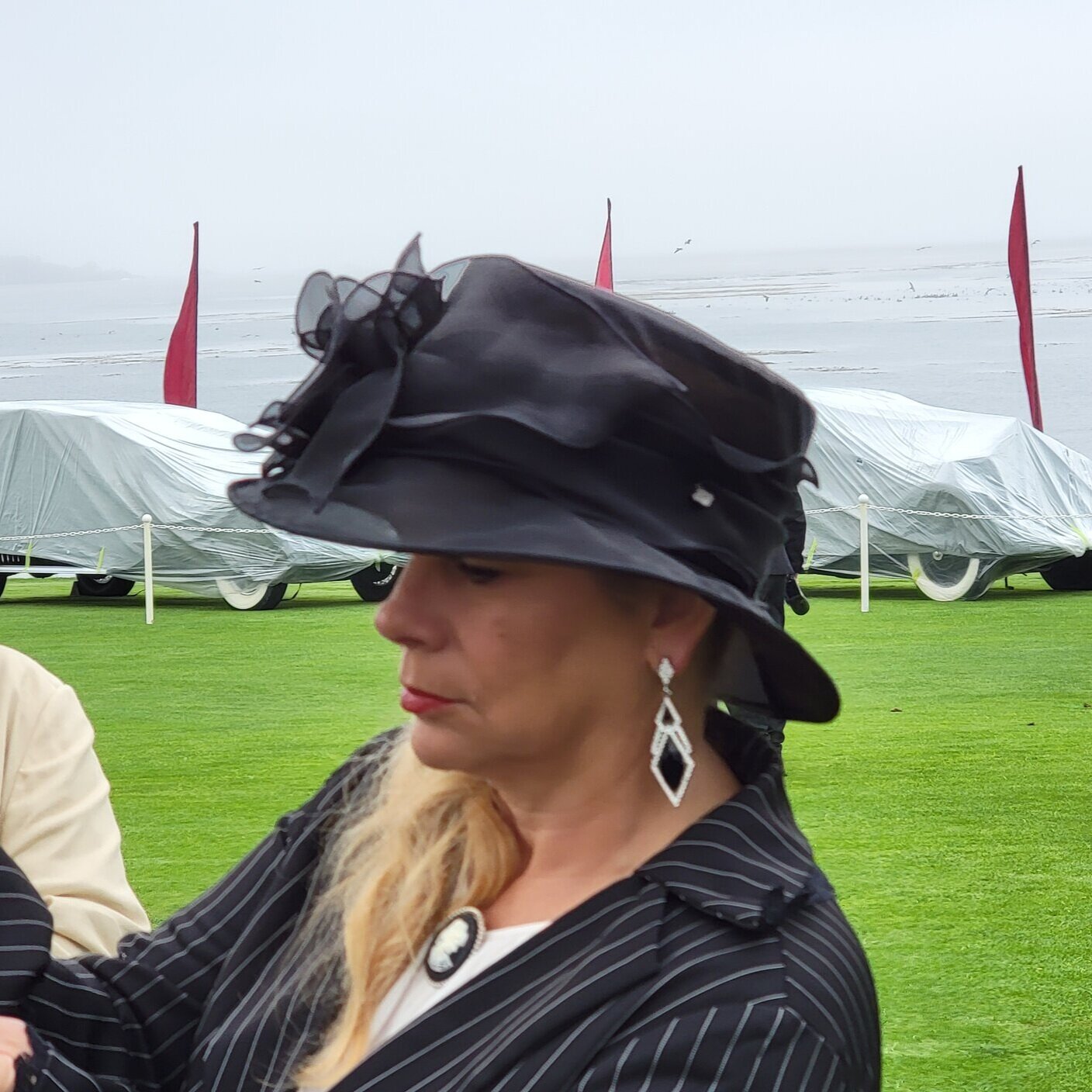


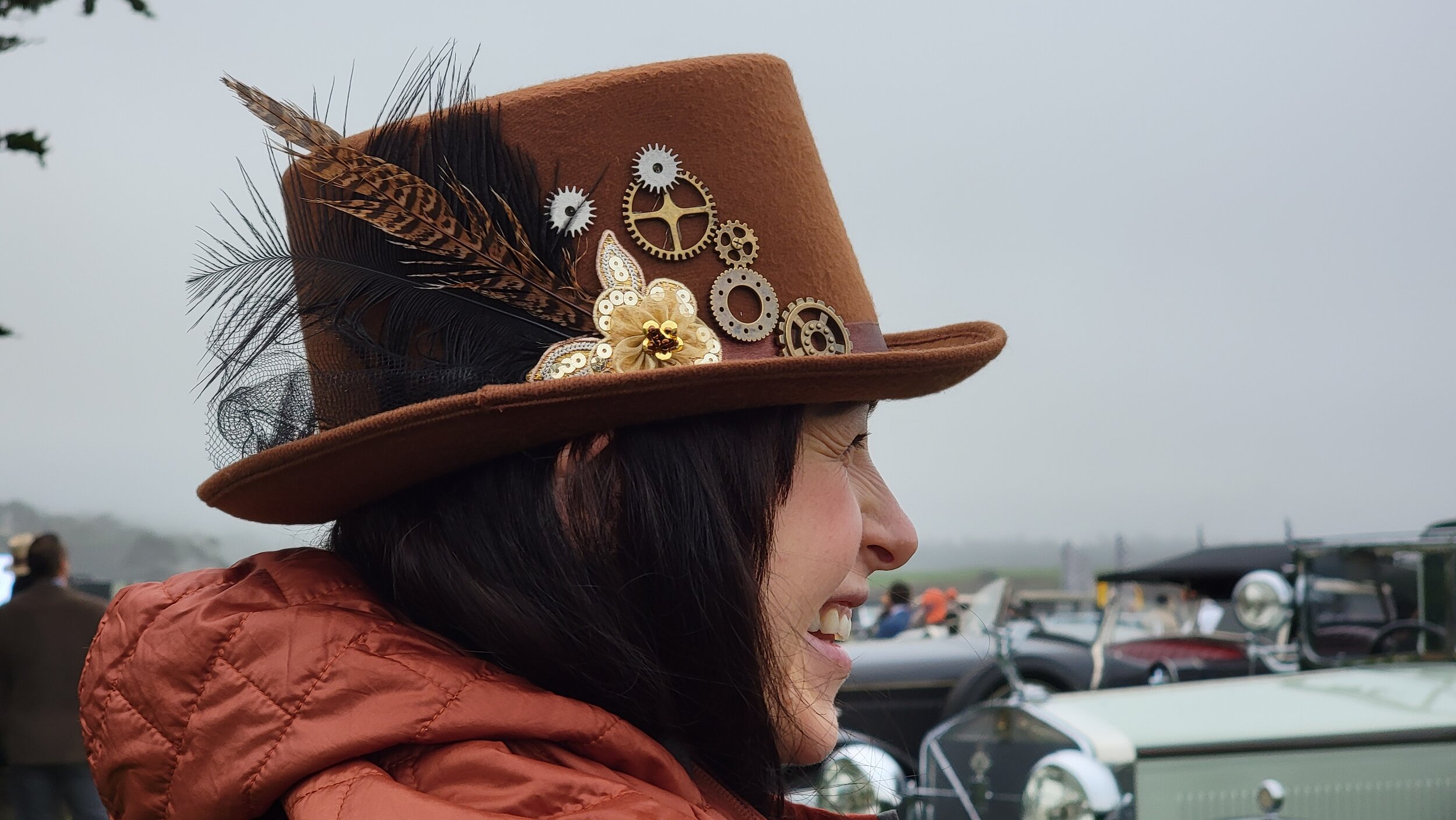
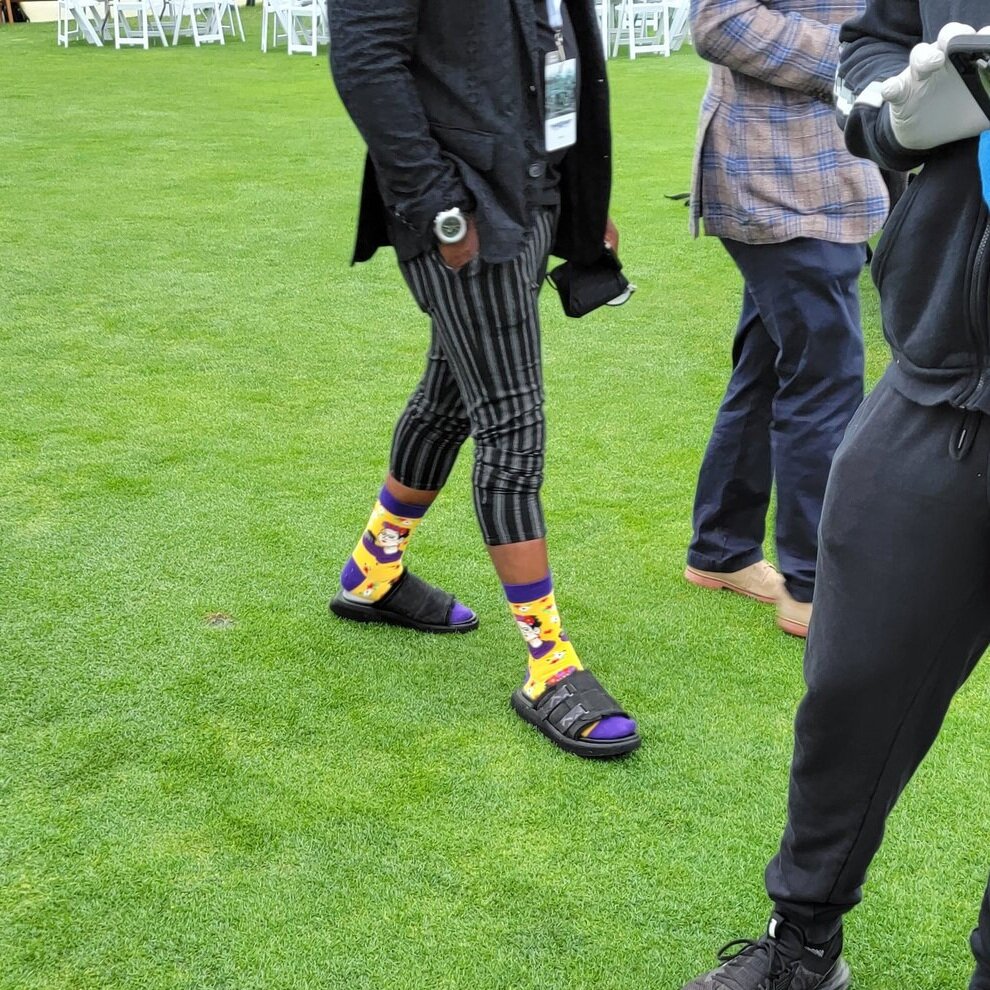
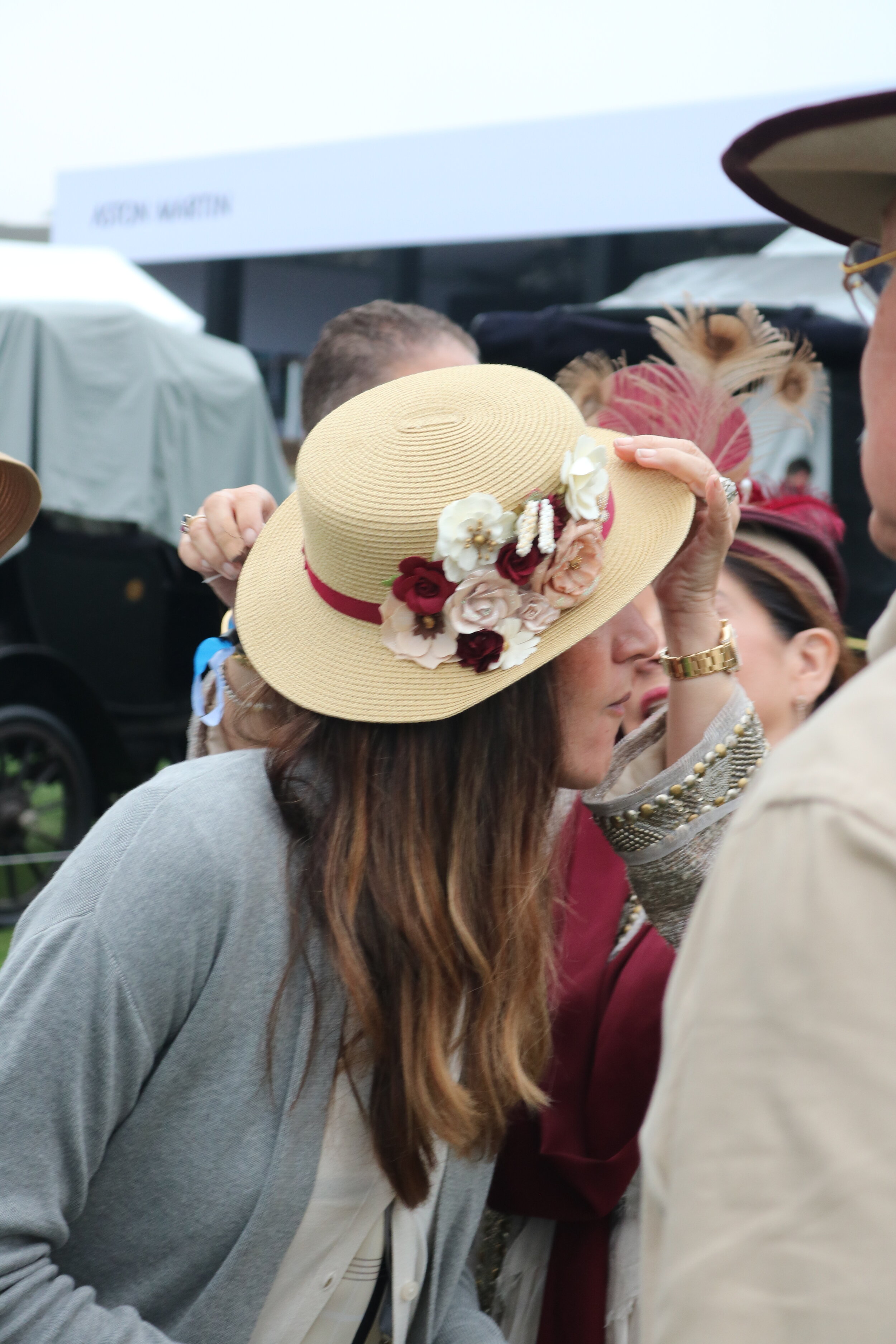

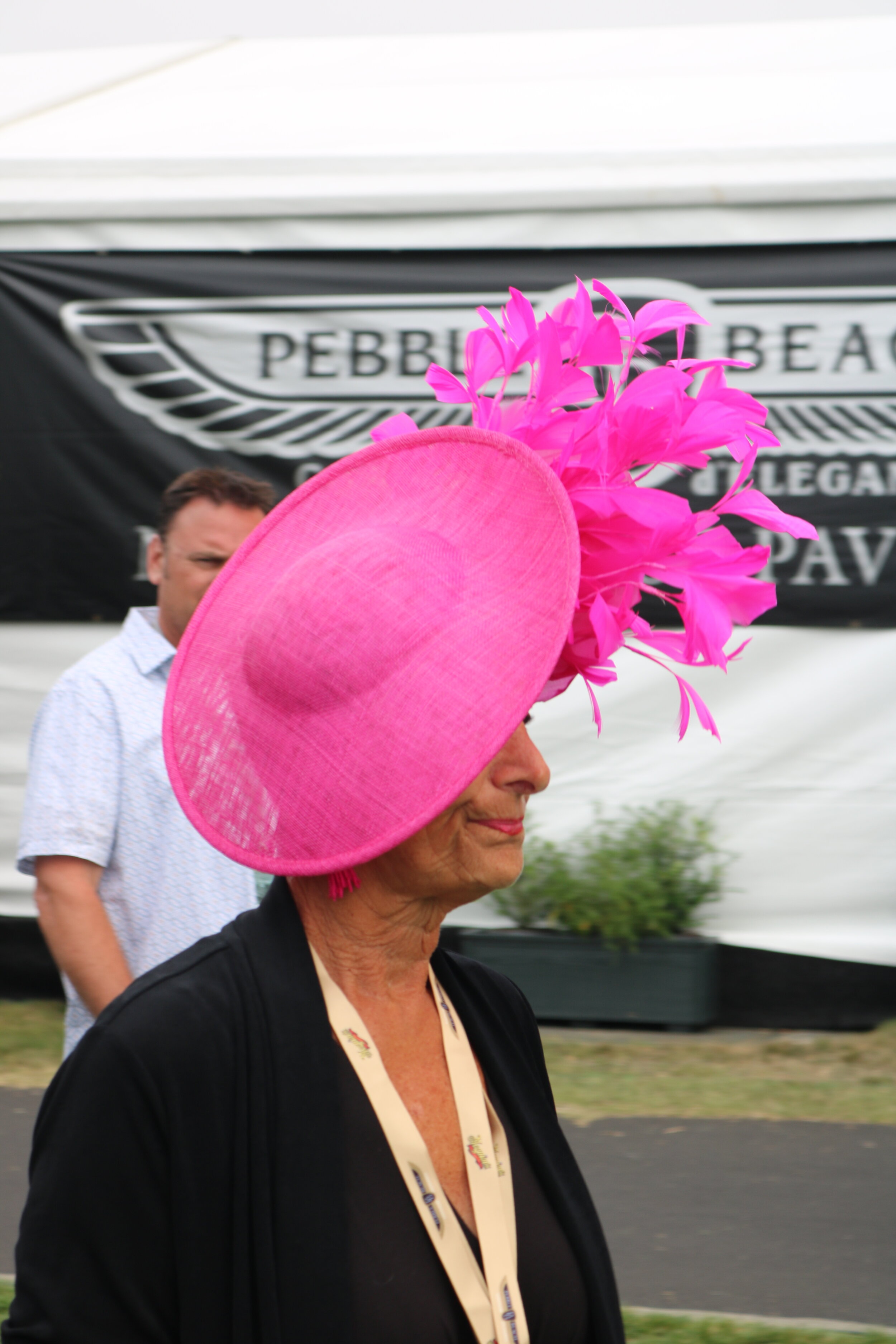
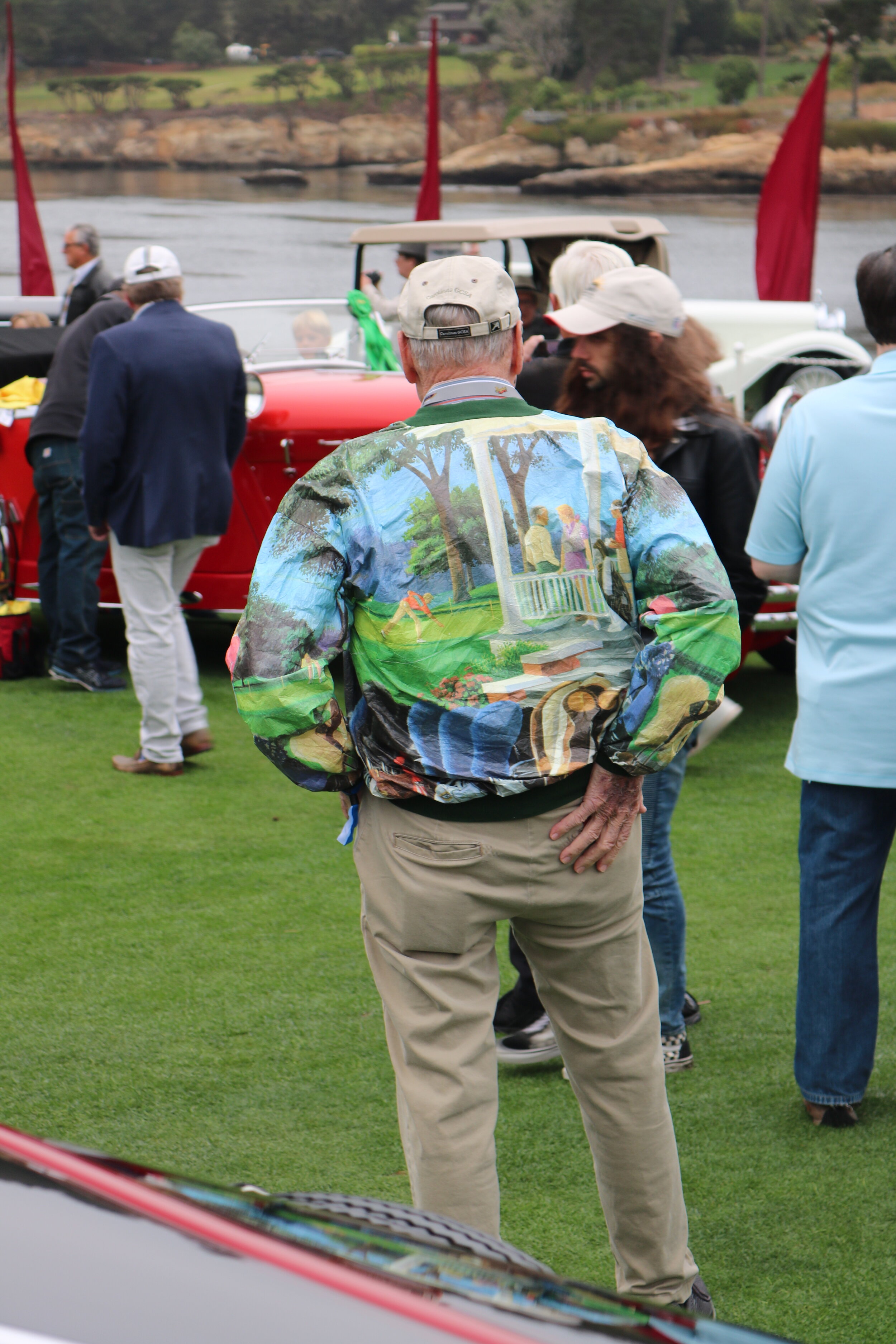
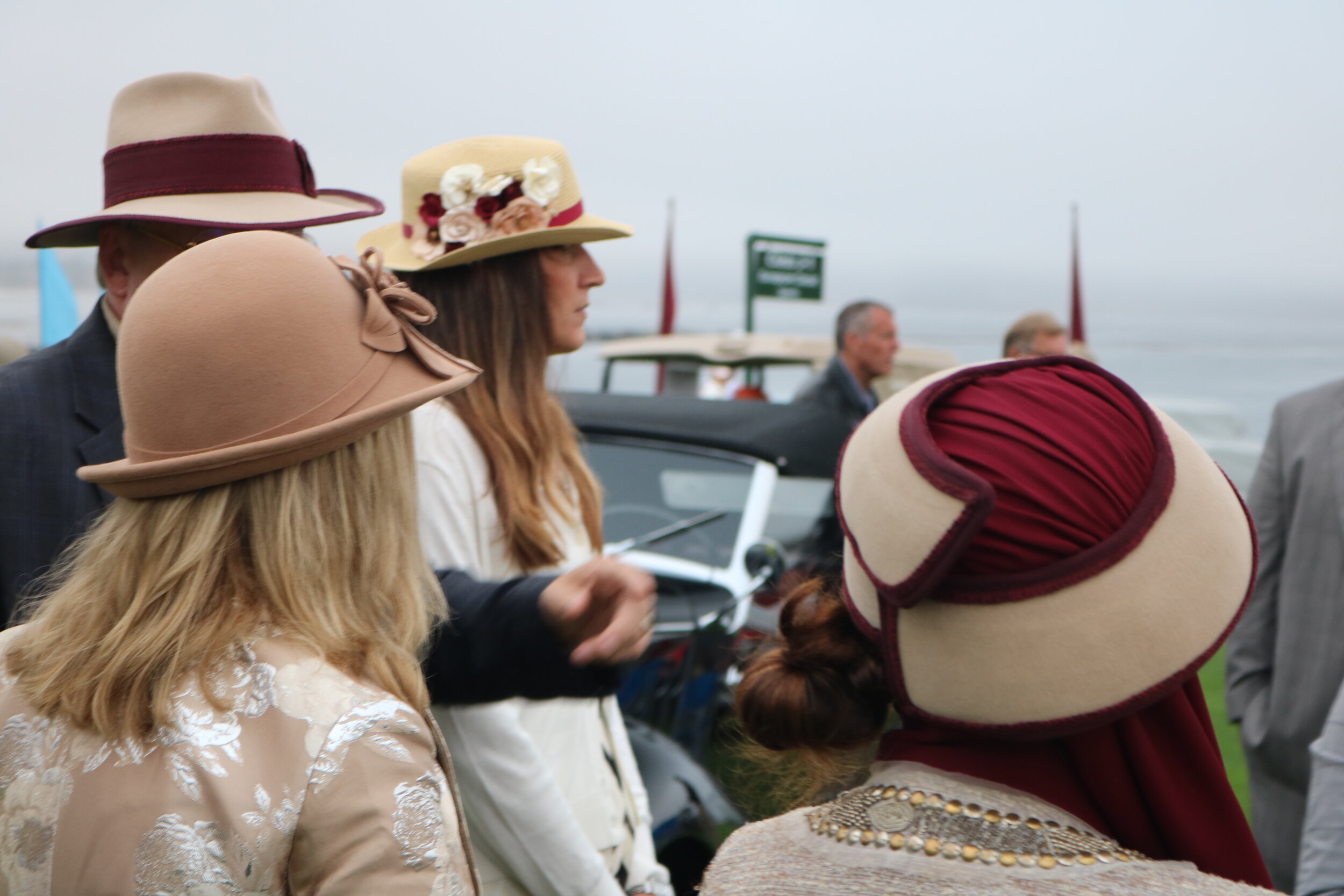
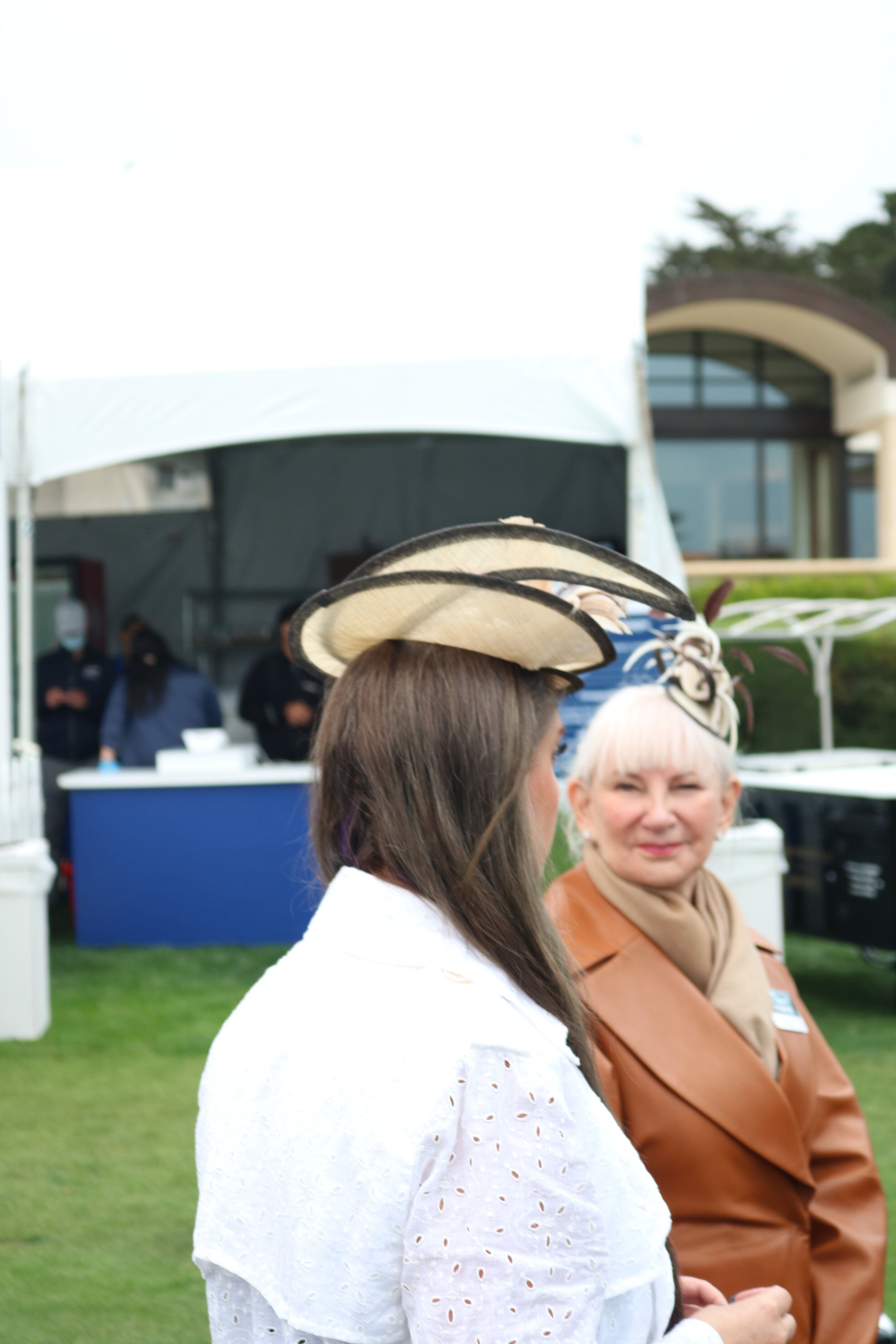
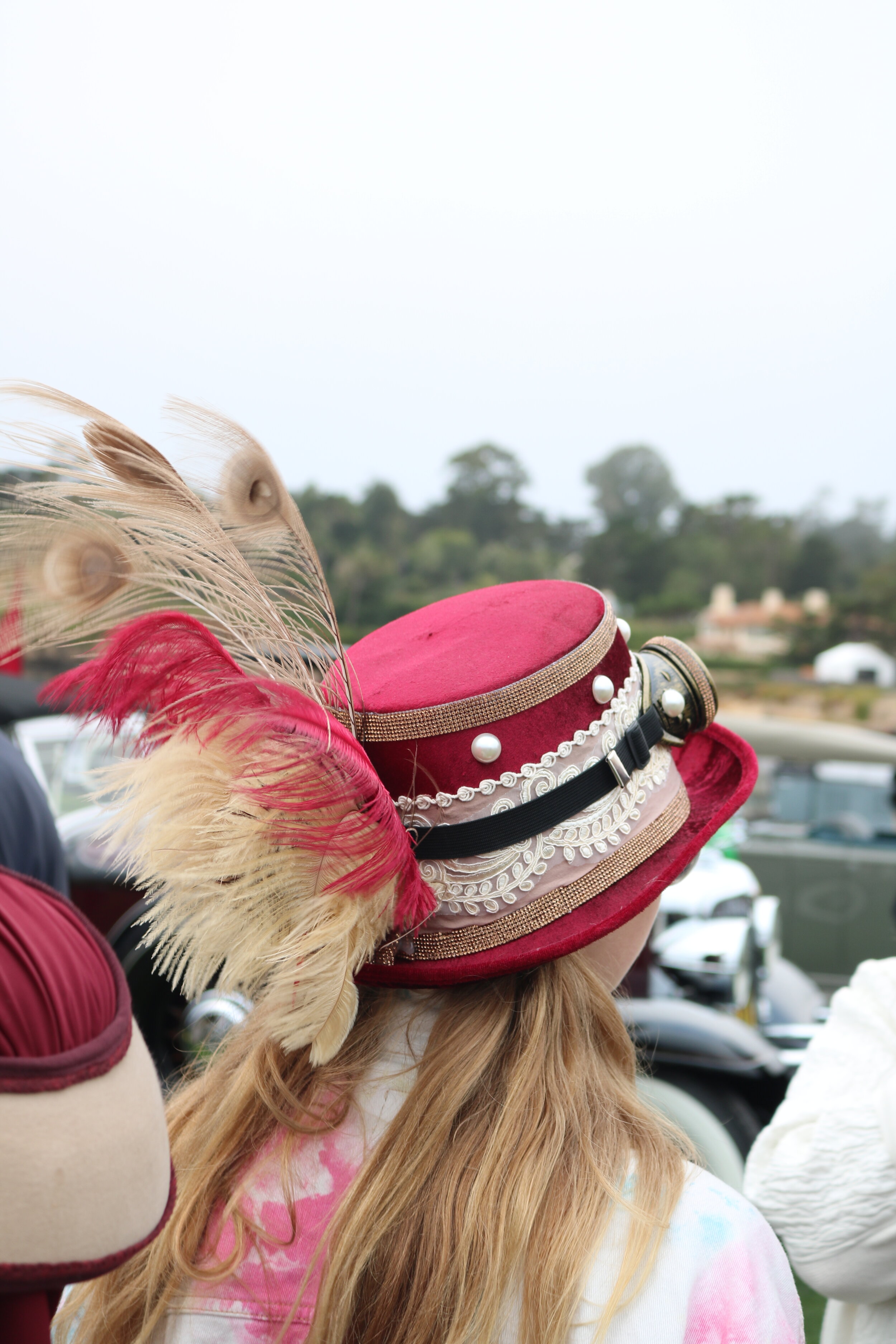
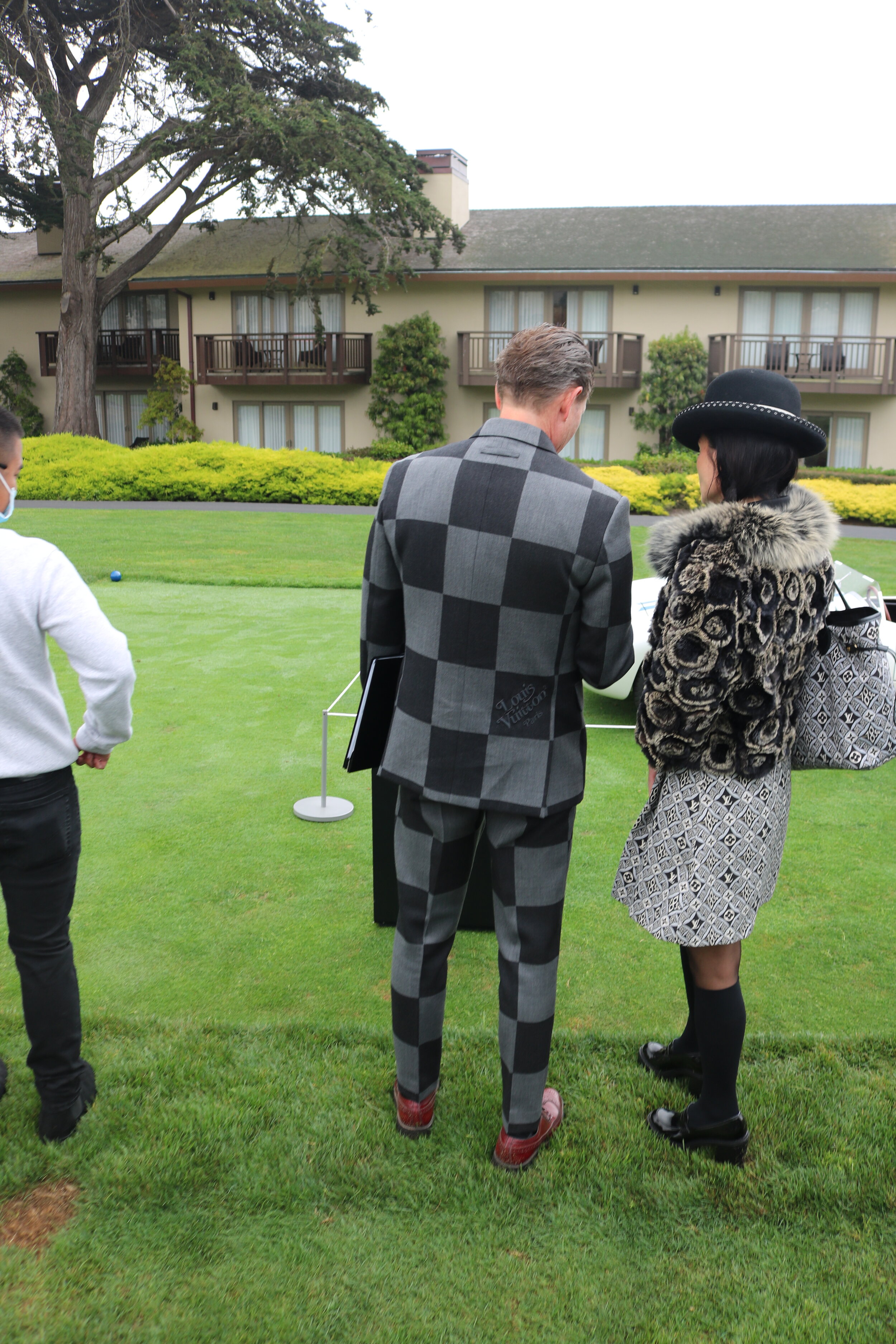
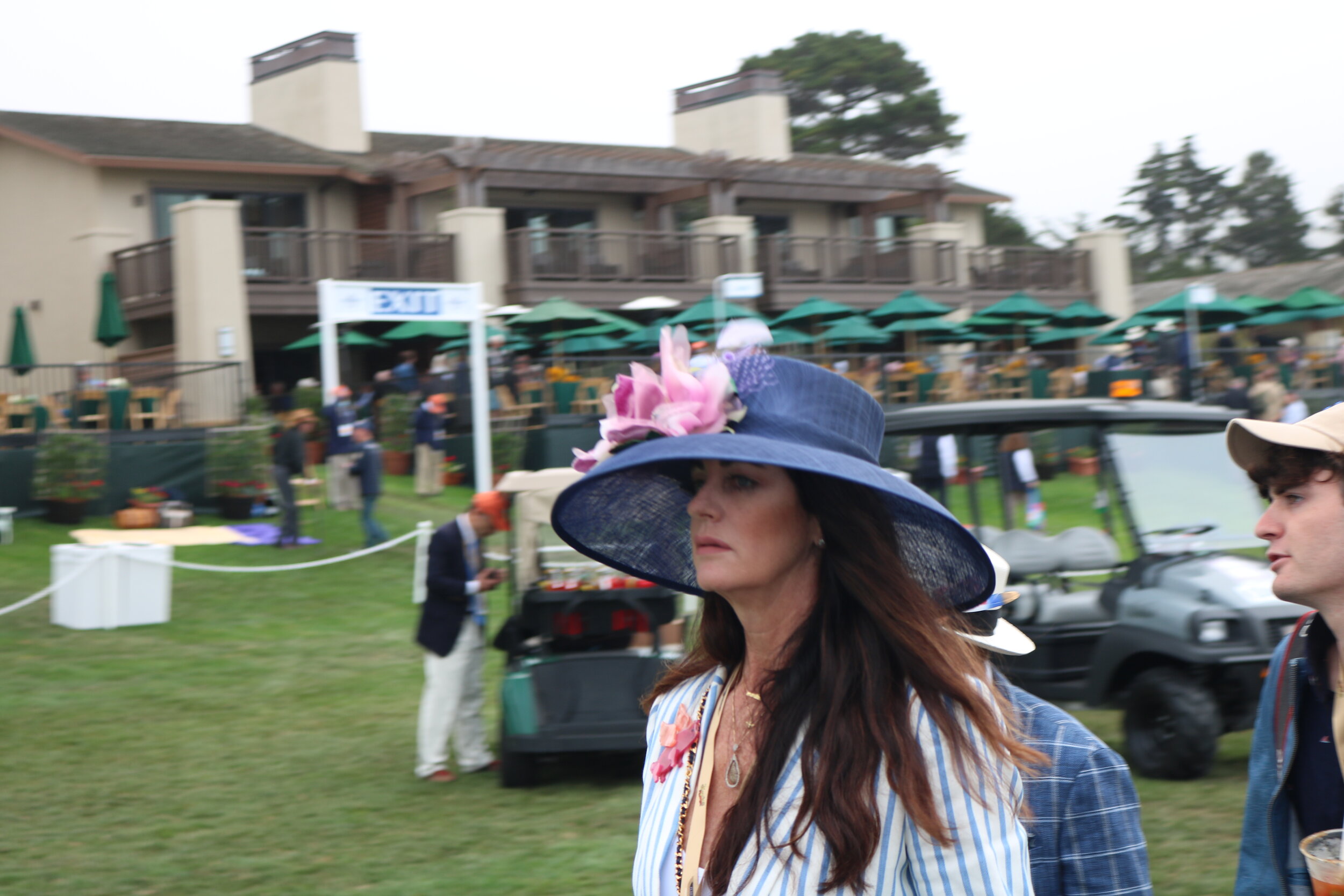
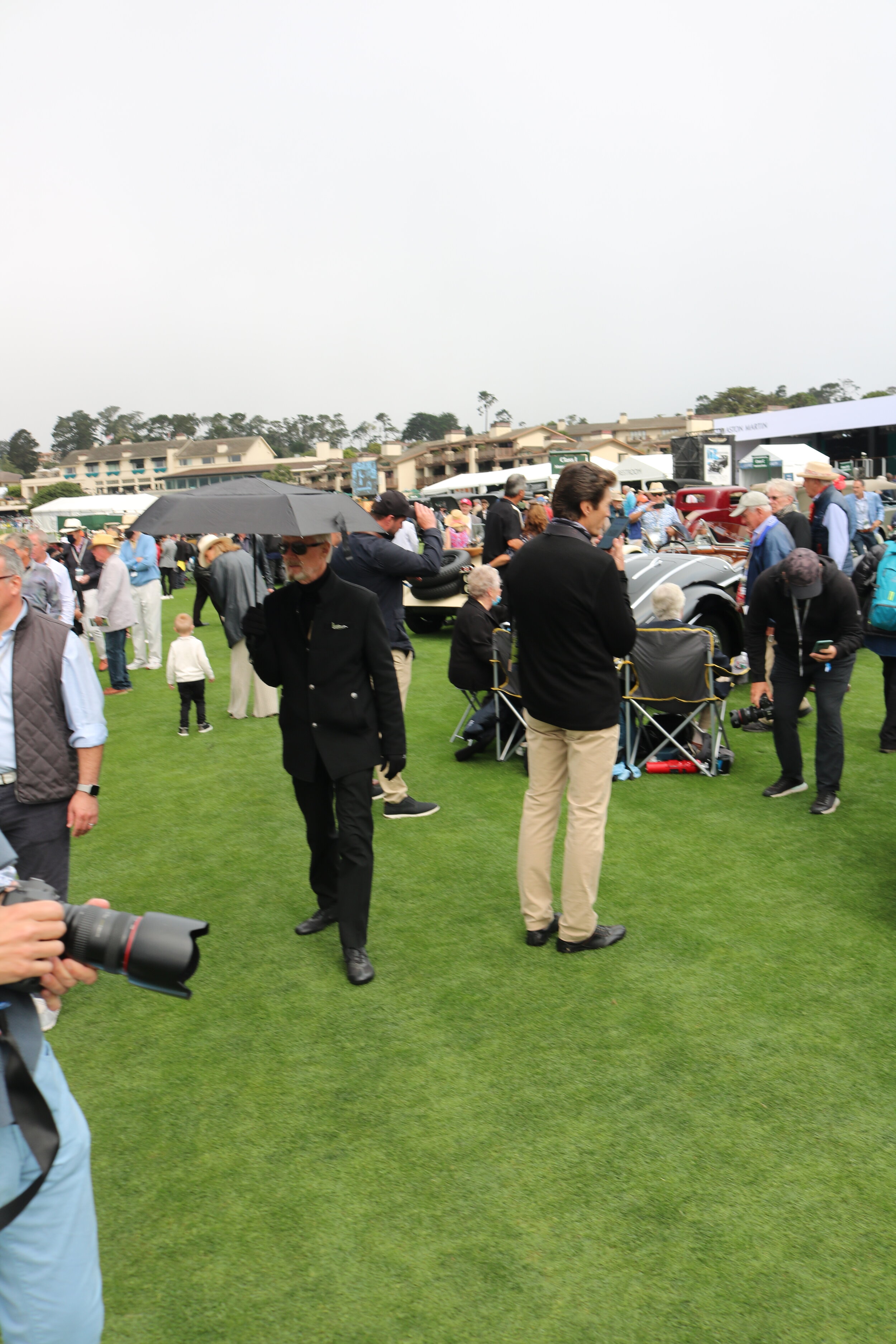
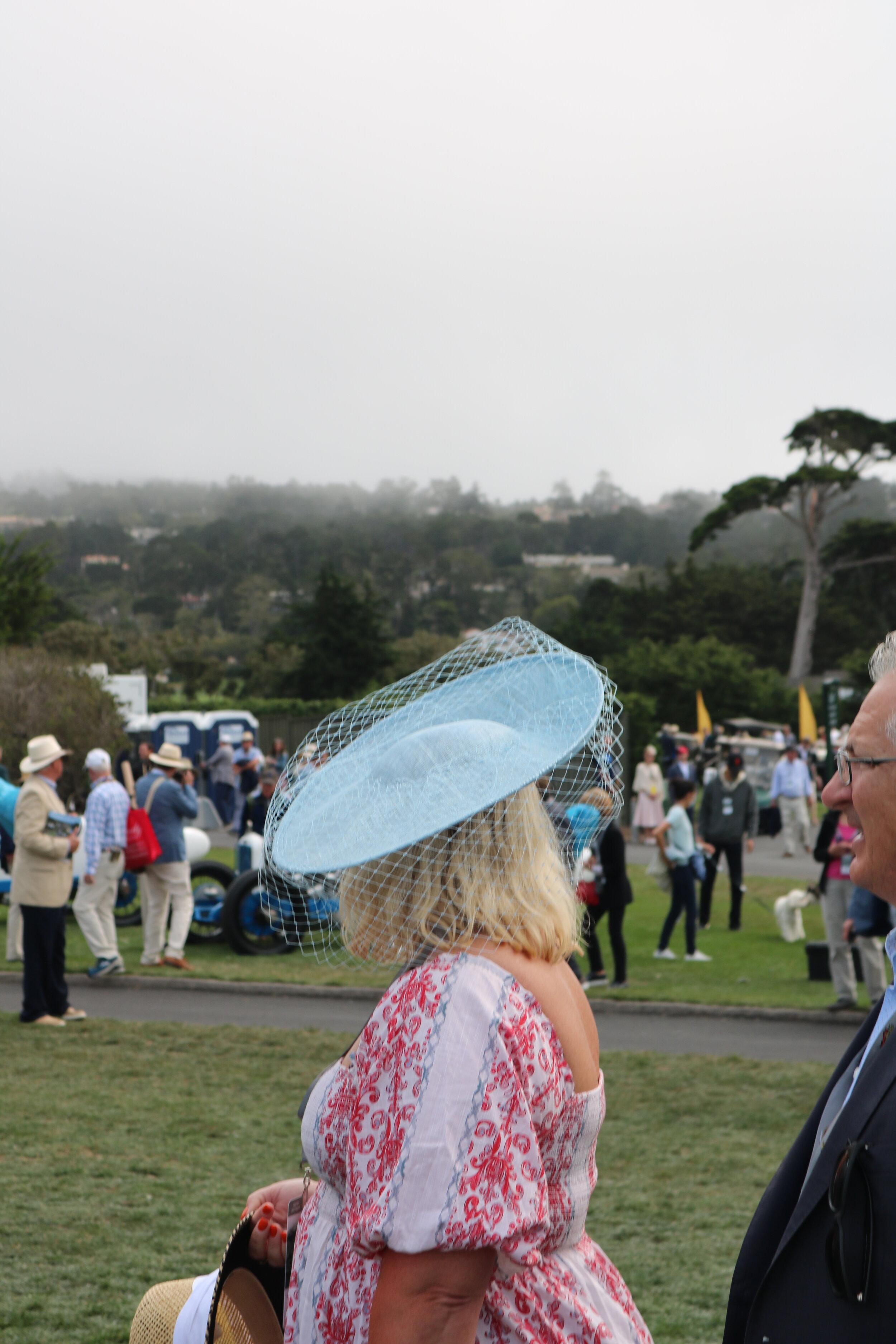
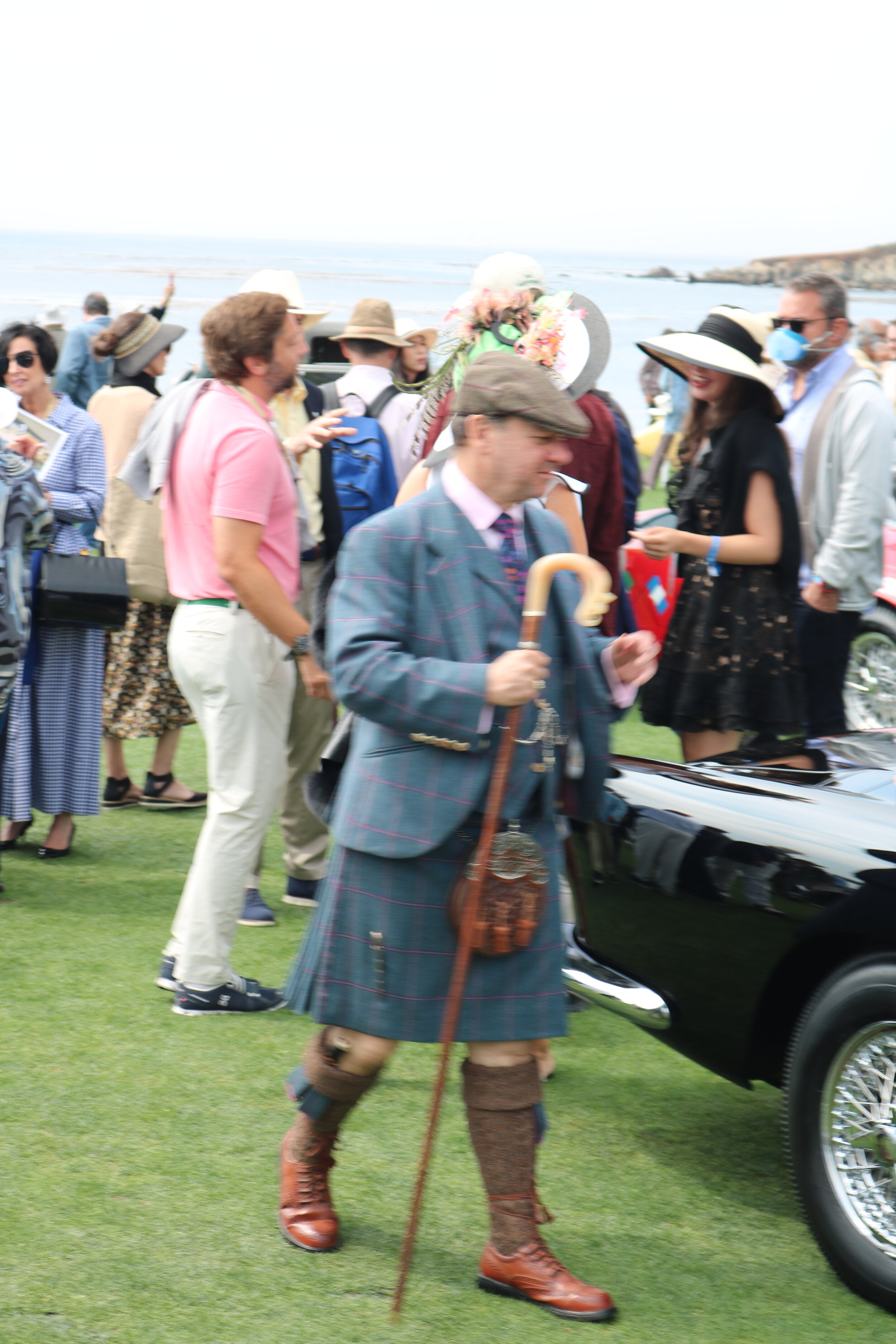
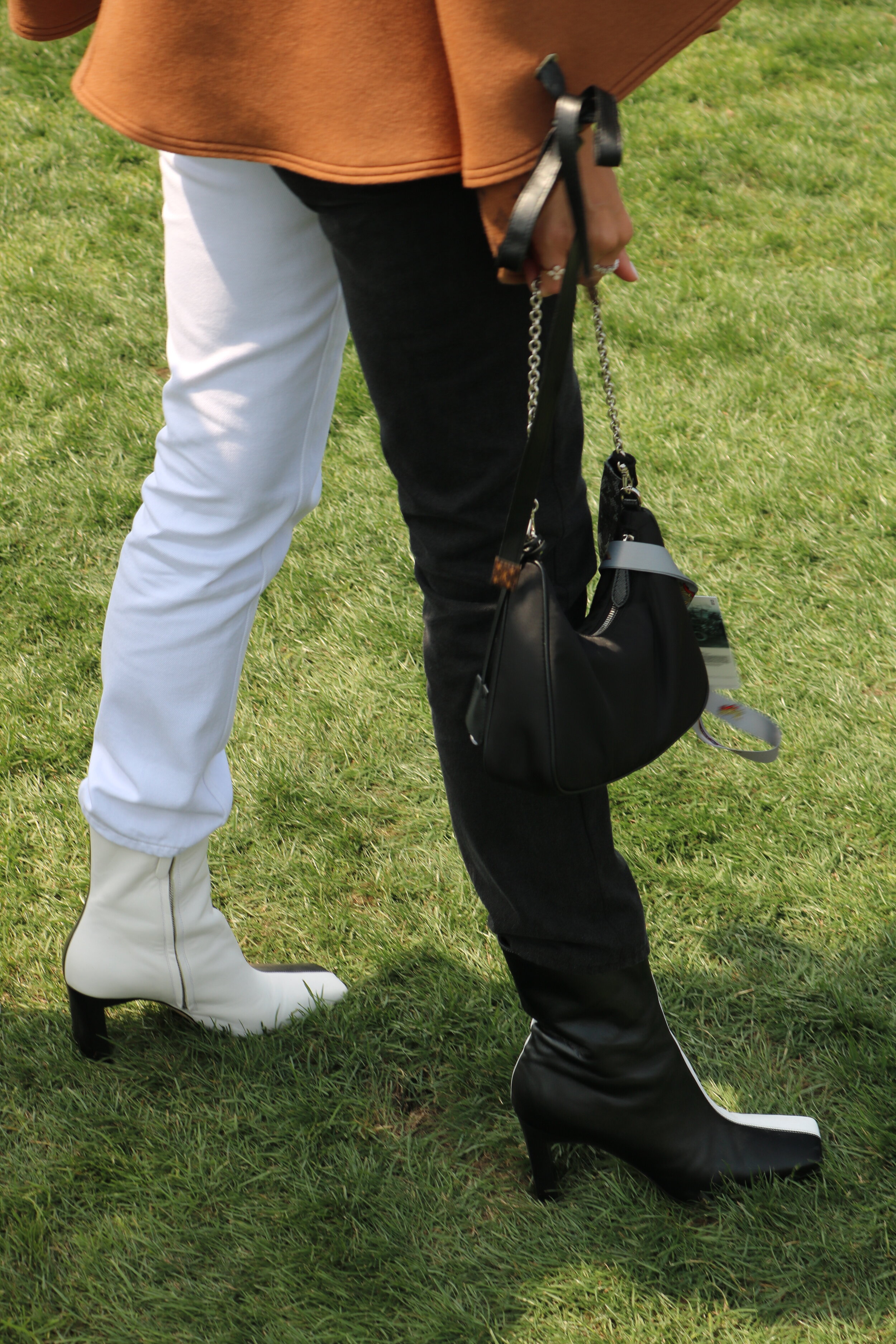
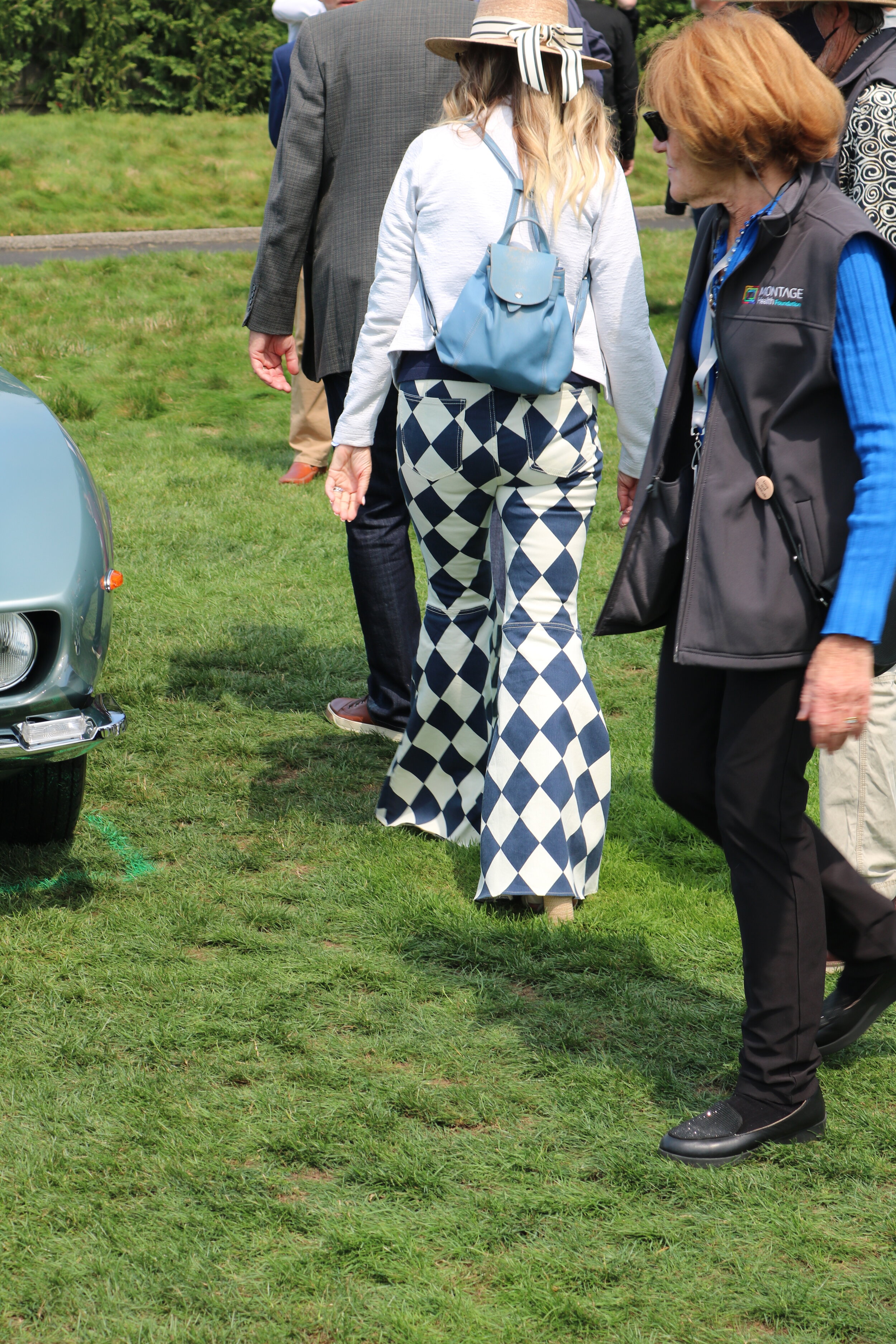
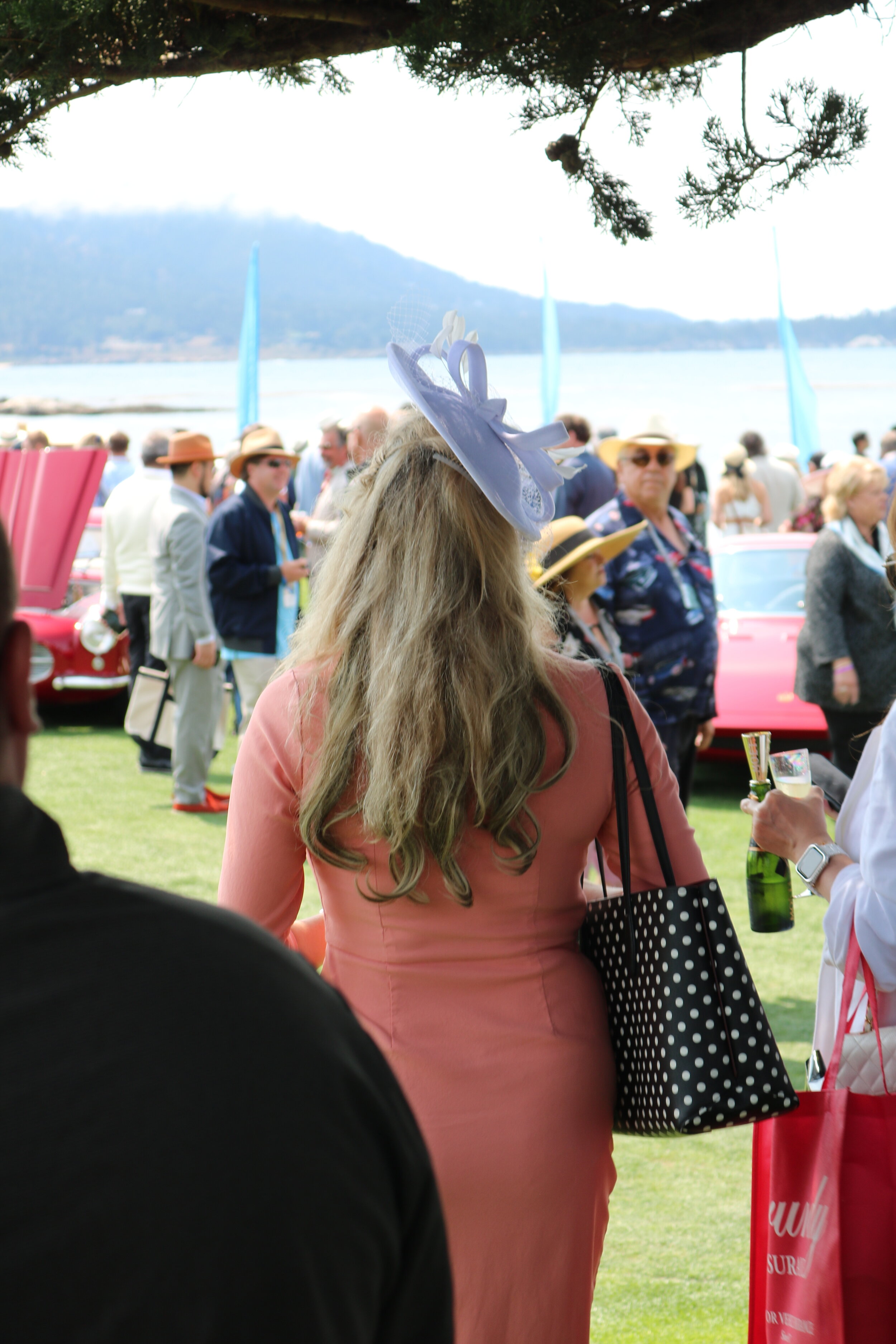
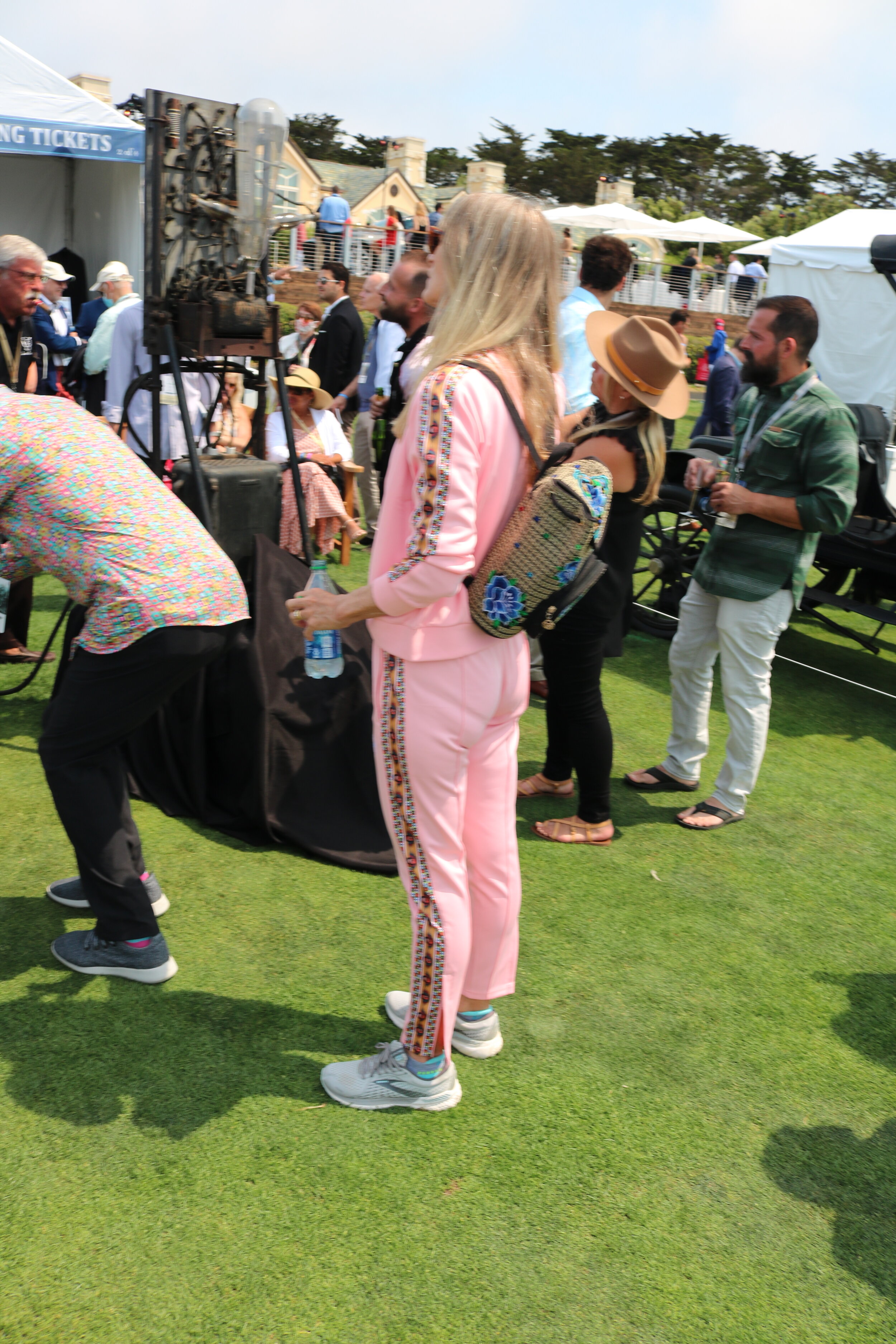
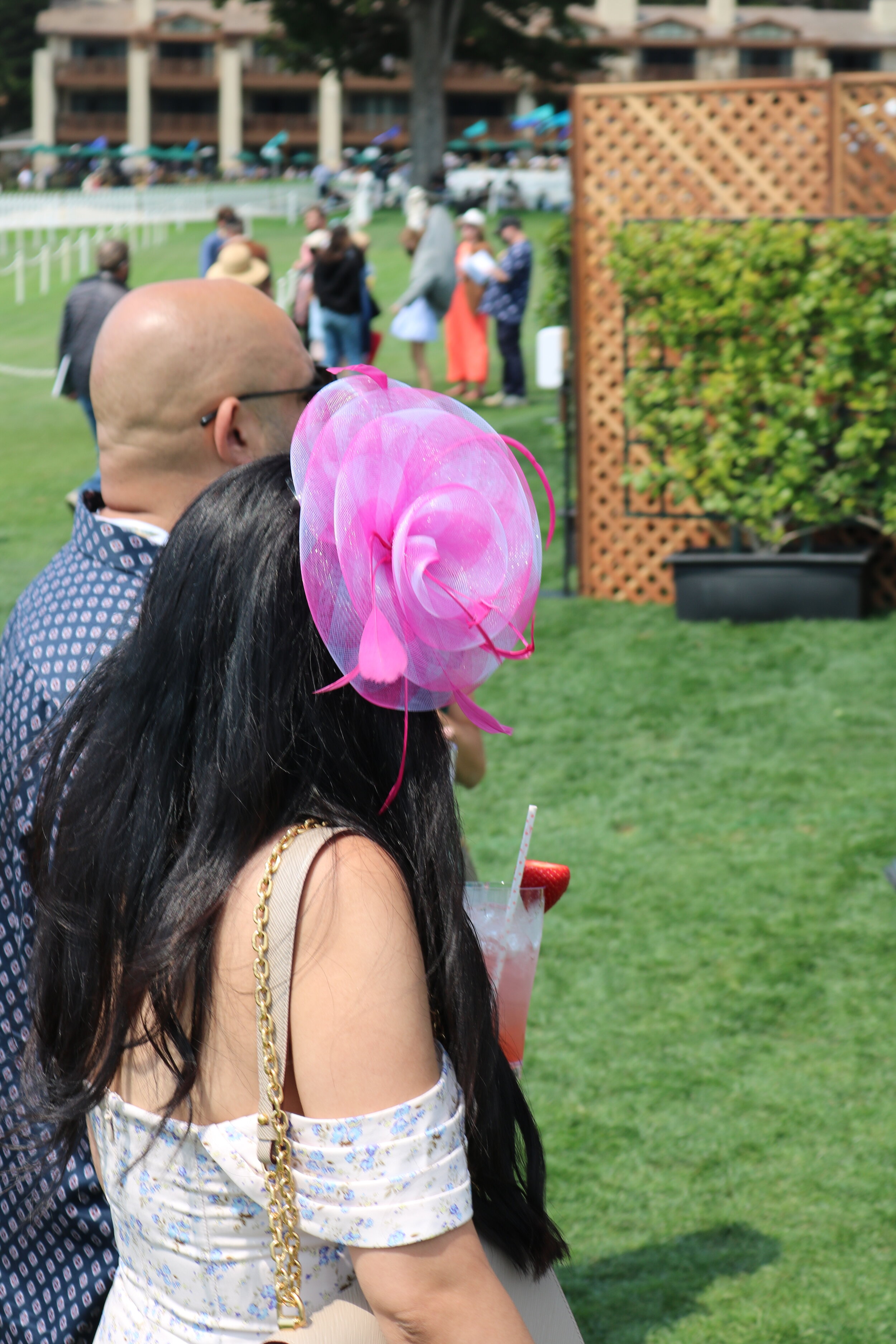

Best in Show
The 1938 Mercedes-Benz 540K Autobahn Kurier shown by The Keller Collection at The Pyramids was named best in show. It was the ninth overall win for the Mercedes brand now equal to the wins held by Bugatti. The Kurier was one of only three built and is the last one in existence, well preserved by the original owner, Ignacio Barraquer an eye doctor from Spain and his family who would retain ownership until 2004. With its win of top honors at Pebble Beach the Kurier has now completed its sweep of prestigious car events. It won Best in Show Concours d'Elegance at Amelia Island in 2019, Best of Show at the Concours d'Elegance of America in 2011, Best of Show at the Louis Vuitton Classic Concours d'Elegance in 2011, Best of Show at Villa d'Este in 2008, and Best in Class at Pebble Beach in 2006.
The Autobahn Kurier making it’s way to the 18th fairway in the early morning hours.
The crown jewel of Car Week is a spectacle that should be added to every automotive enthusiast’s bucket list at least one time. The people, the location and the atmosphere merge together in what can feel as a place outside of time and space, disconnected from the realities of the world that exists outside the well manicured grounds of Pebble Beach. It is the automotive equivalent of a gathering of aristocrats at the Palace of Versailles with all the pageantry and accessories of opulence. A grand party on the lawn. Yet, underneath it all are the cars as it is the machines that are invited to attend with the owners simply serving as their caretakers and stewards. An entry so sought after that collectors pursue and dedicate themselves to acquiring the machines that are certain to be invited, or that have already collected previous trophies. It would be self serving to say that we have adequately described the Concours d’Elegance for the un-initiated, but the reality is that we have only scratched the surface.

